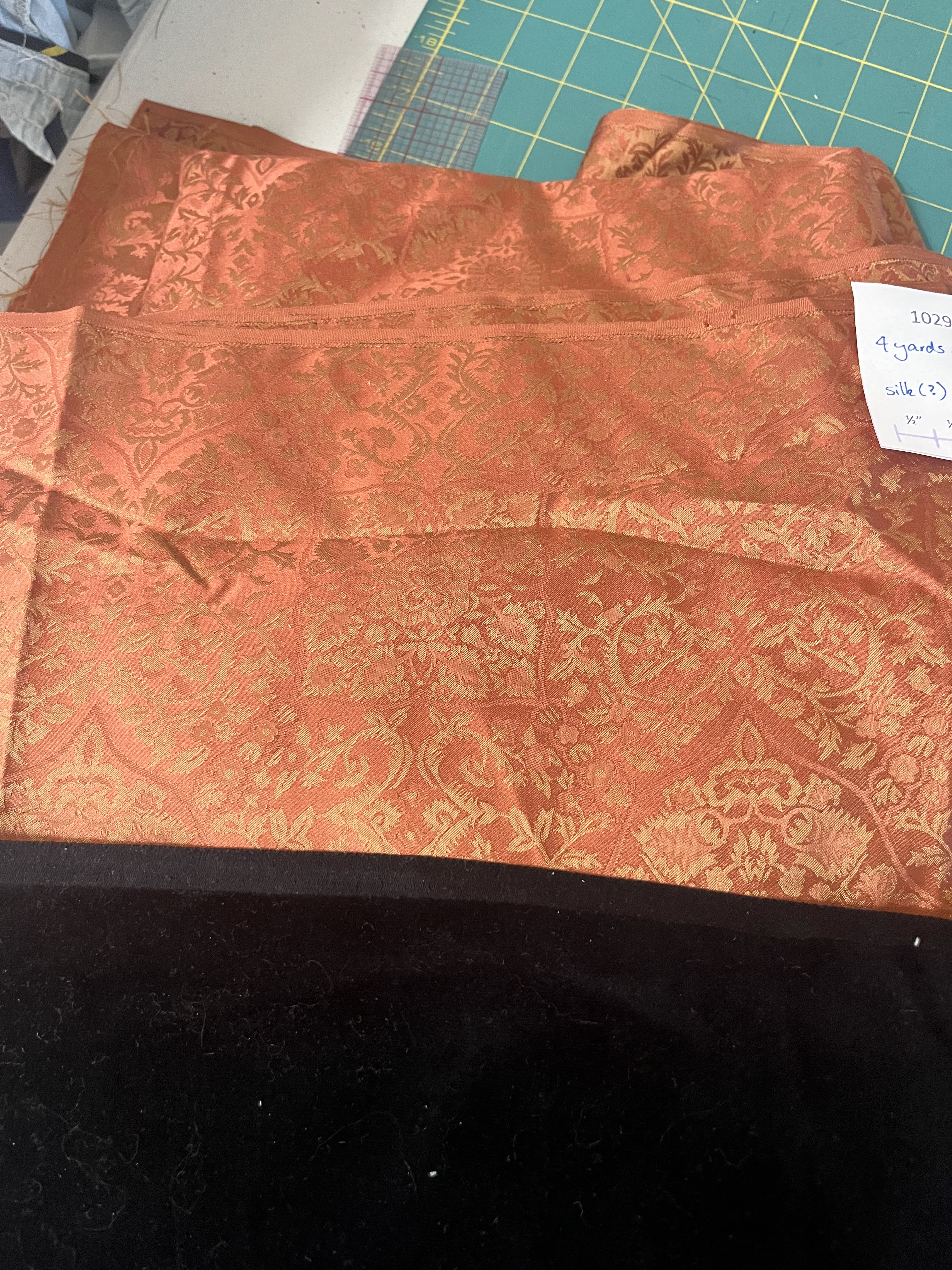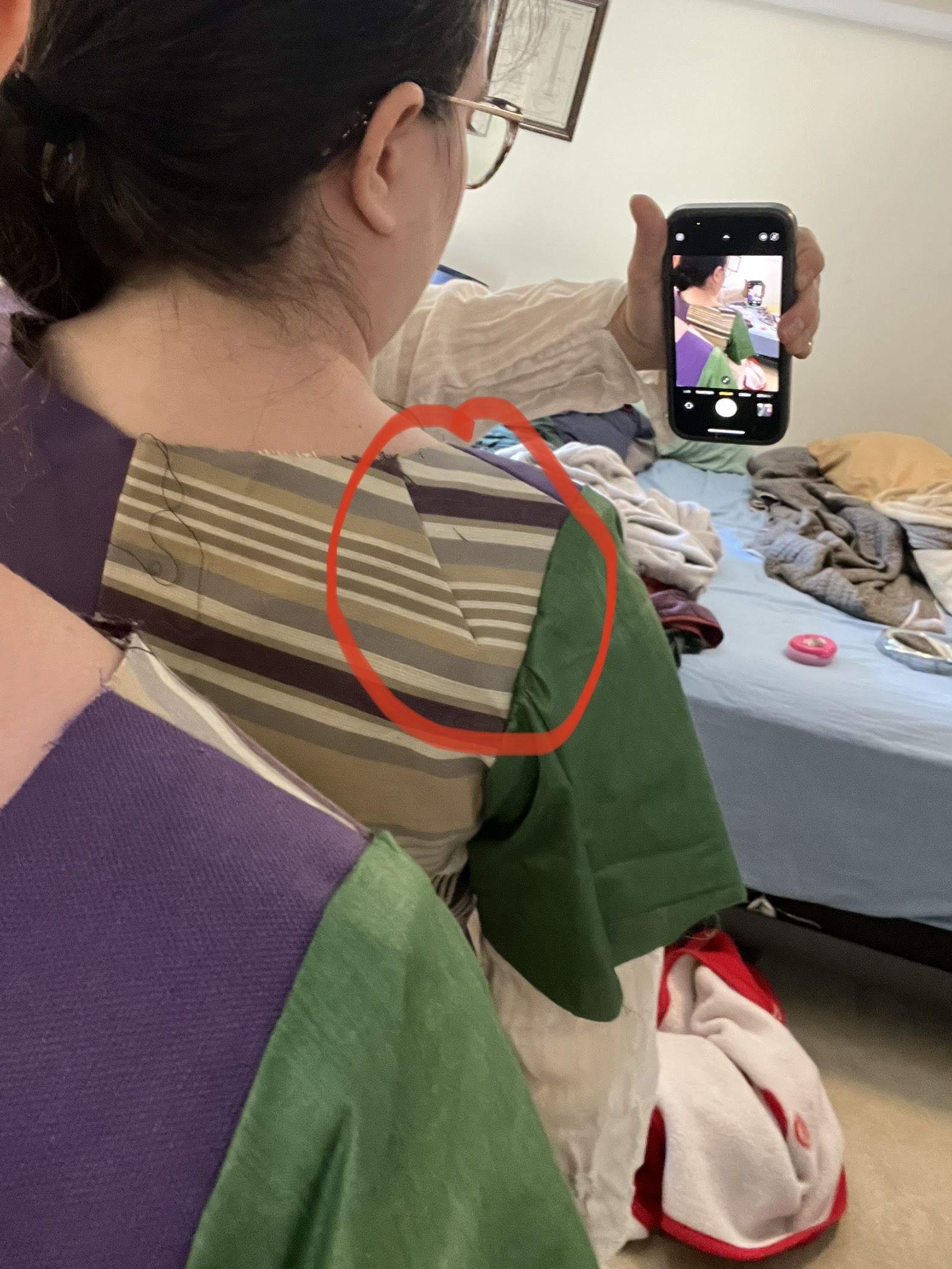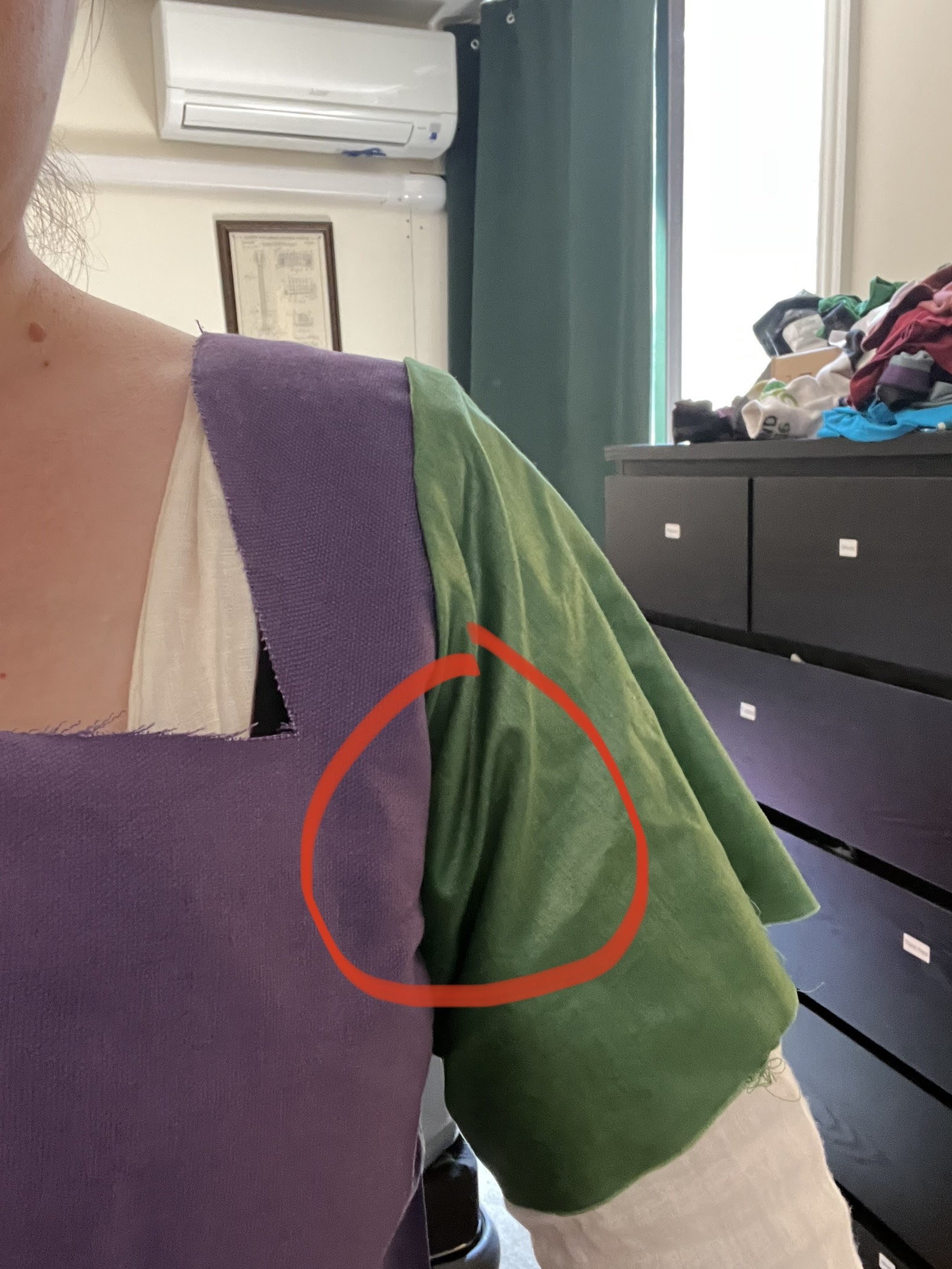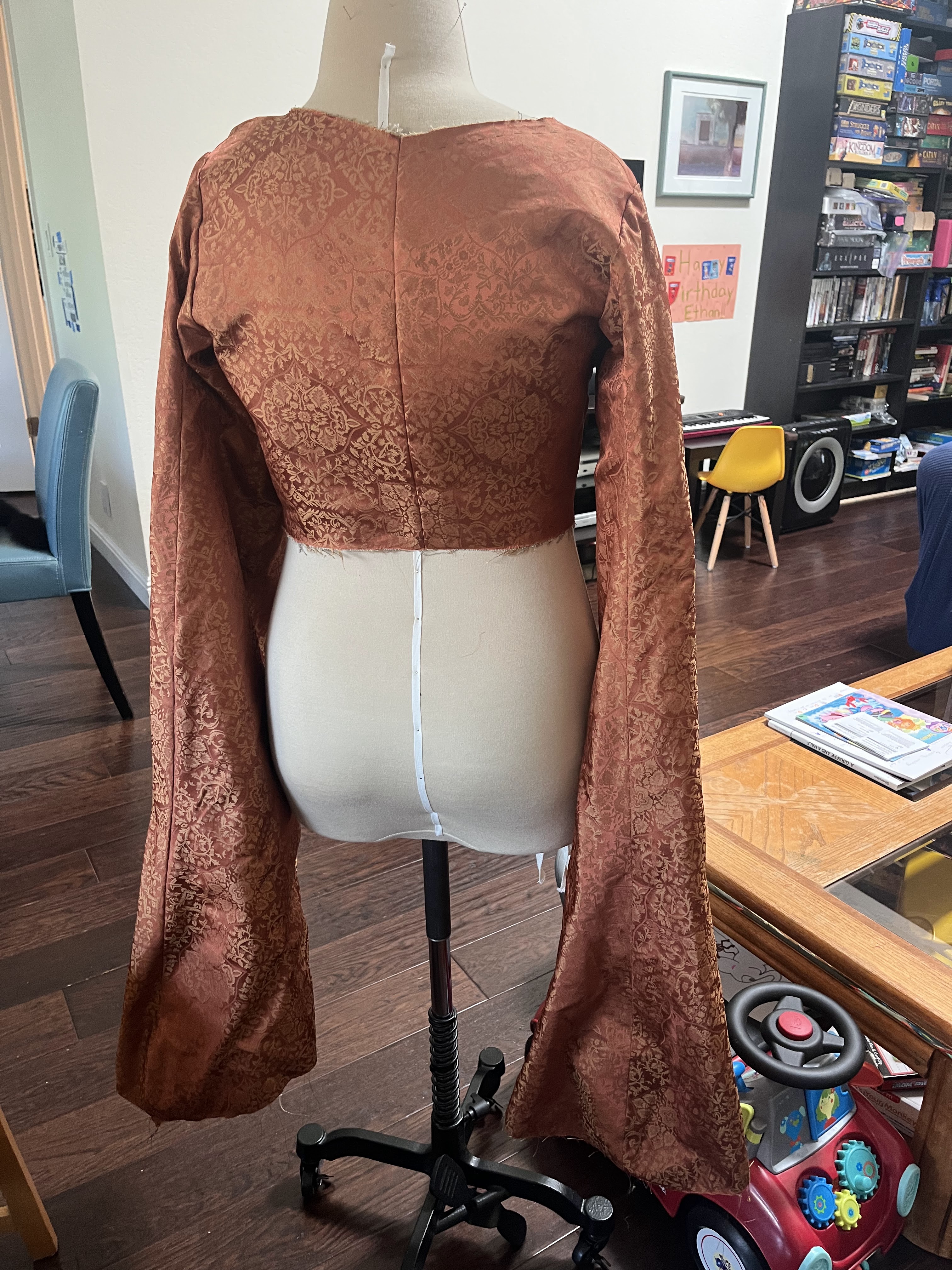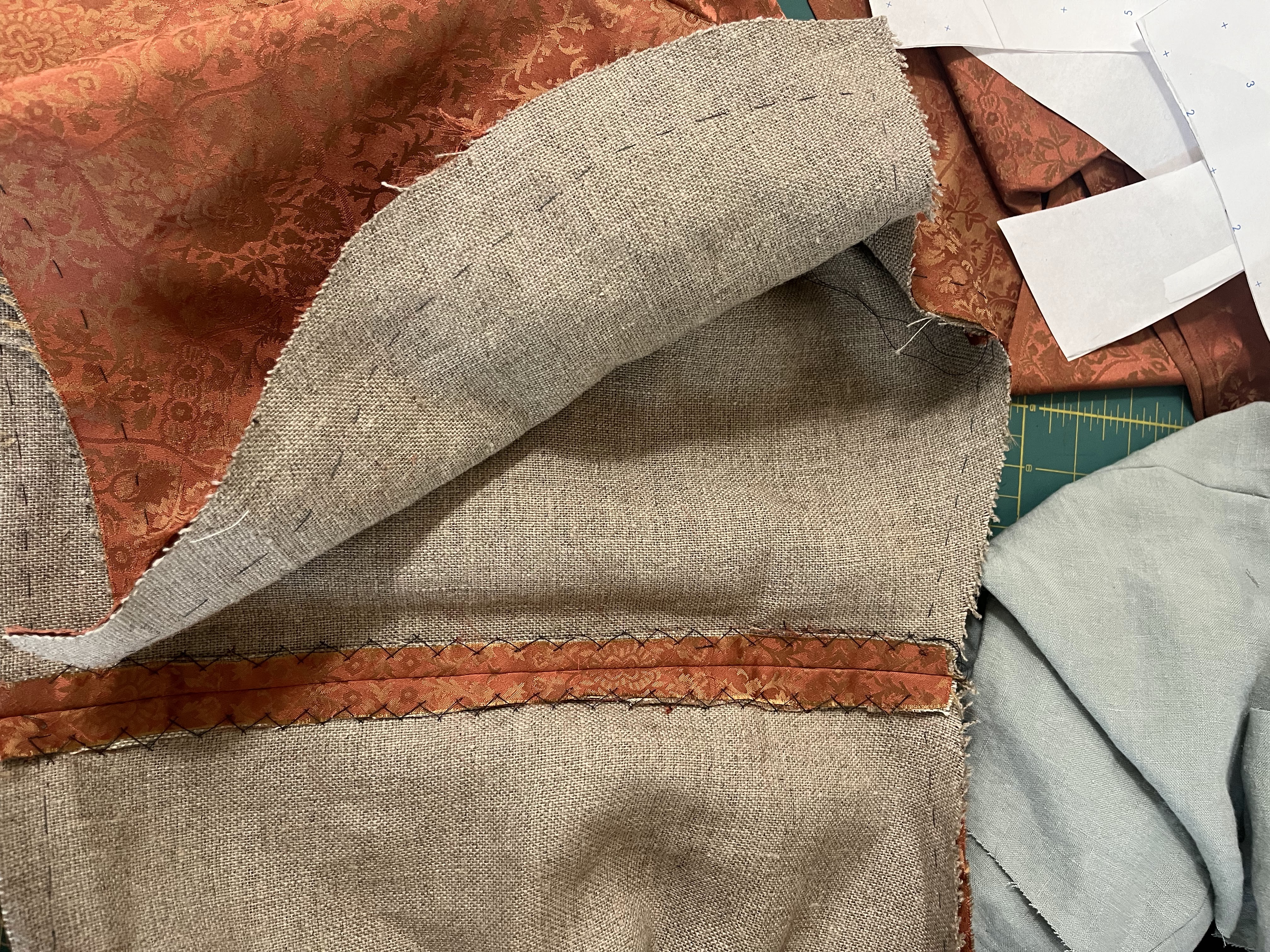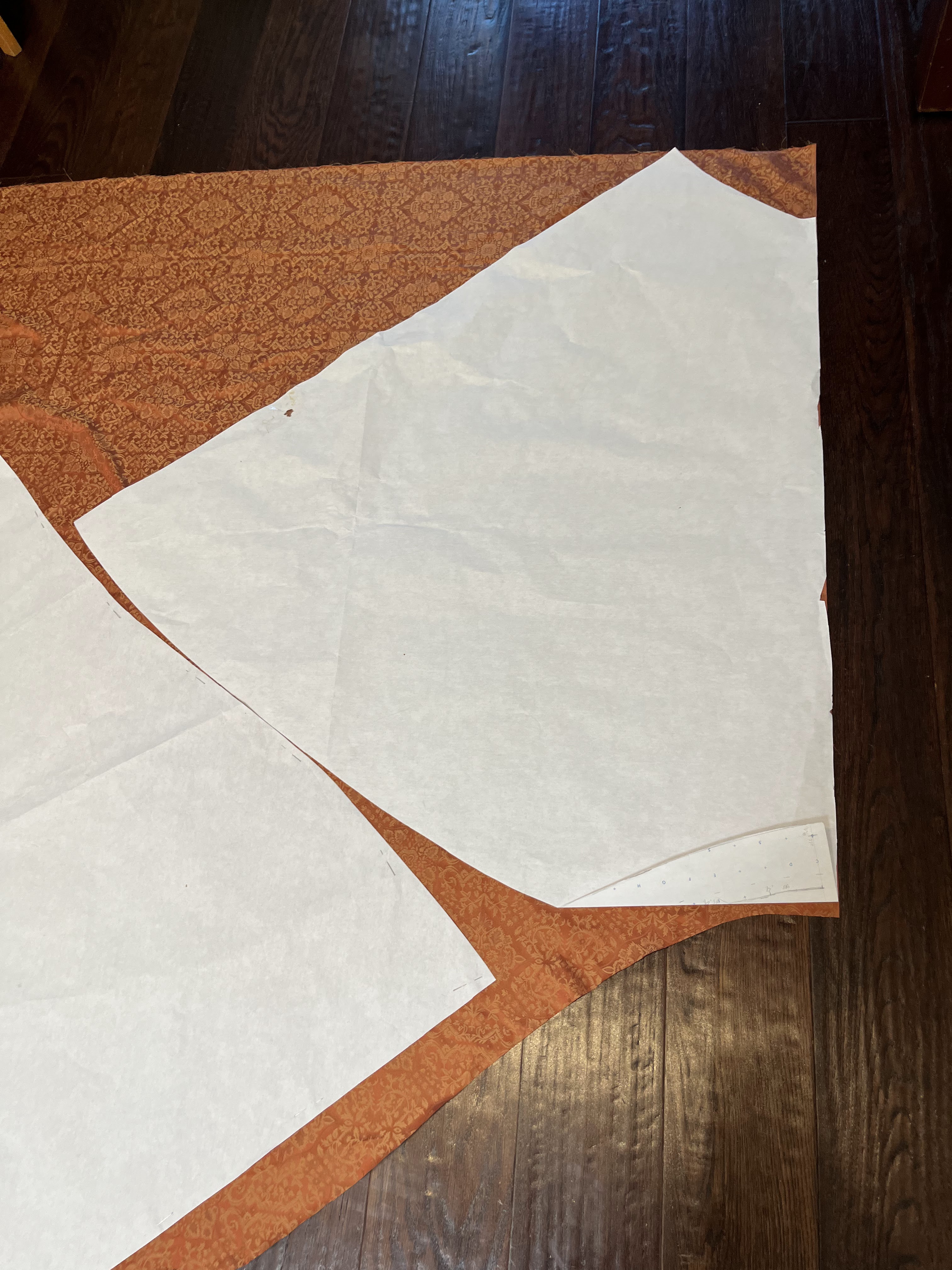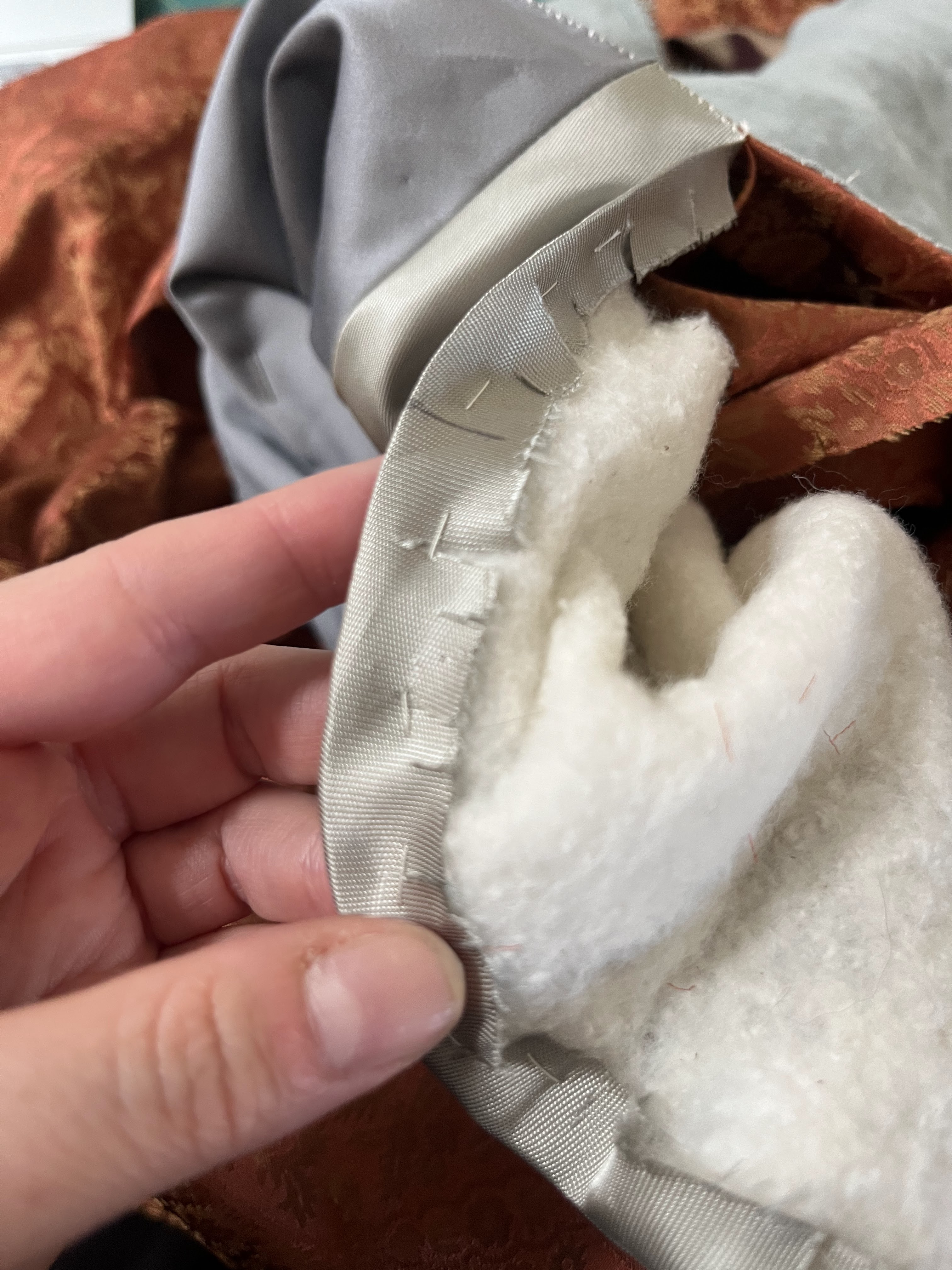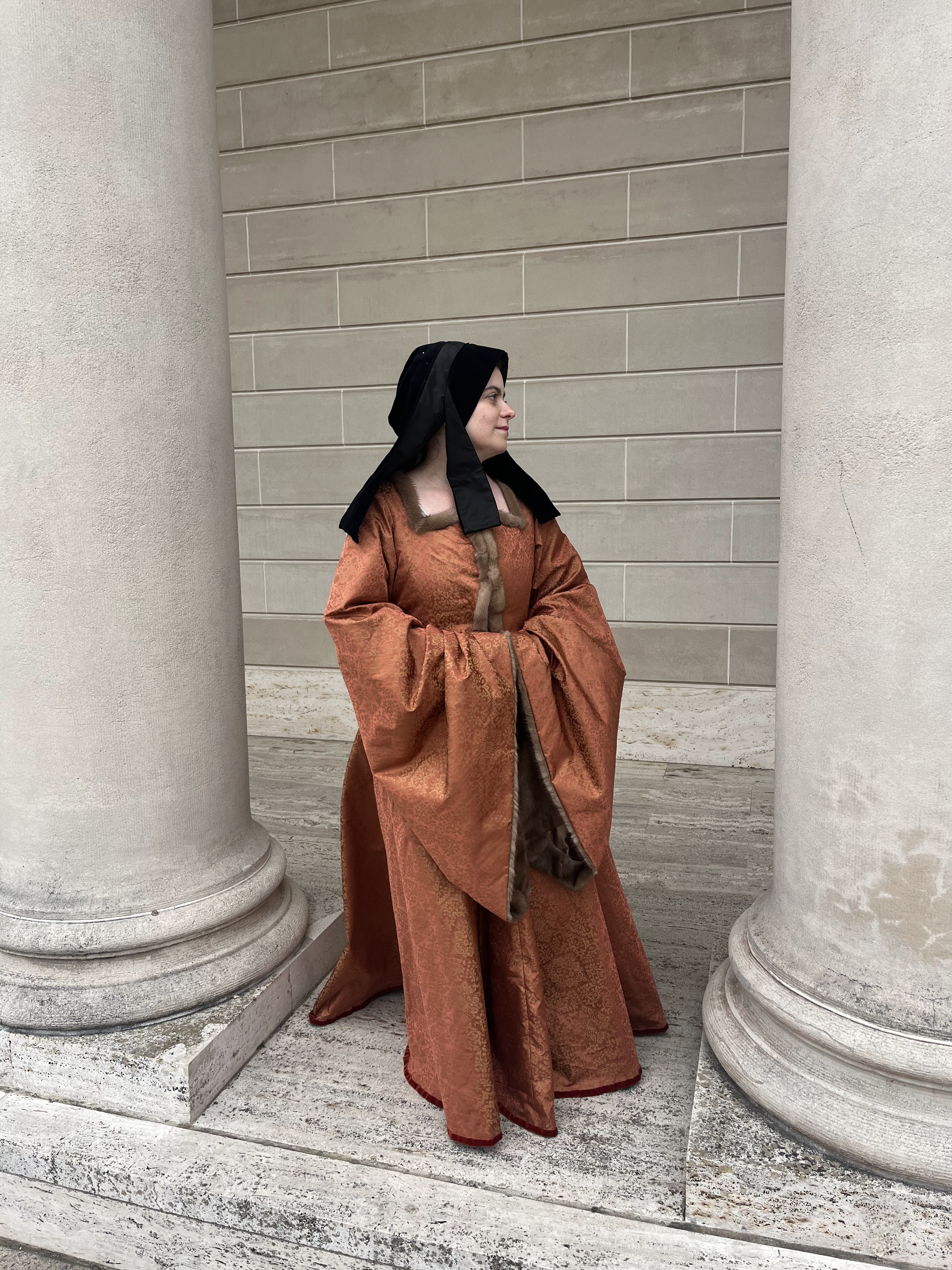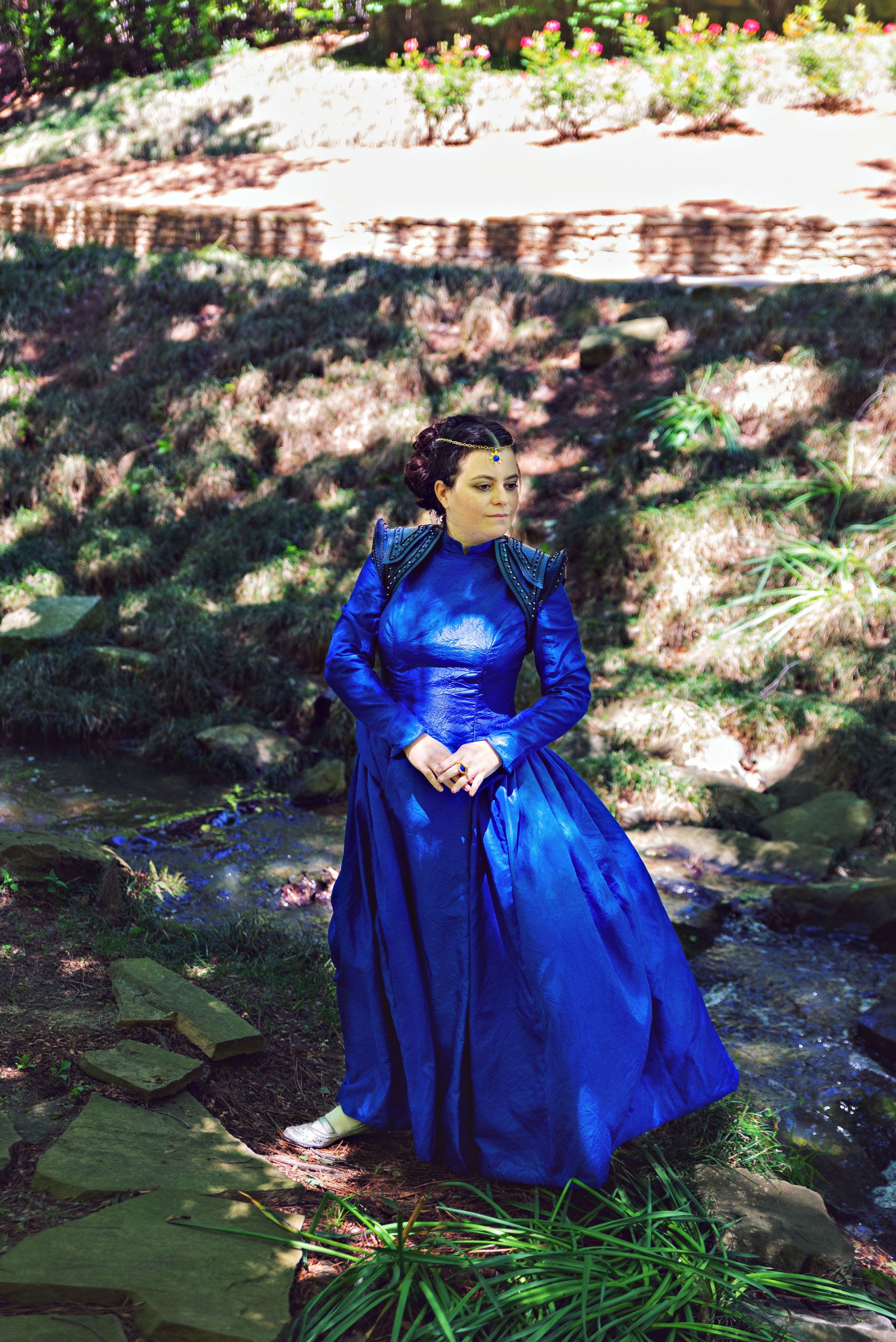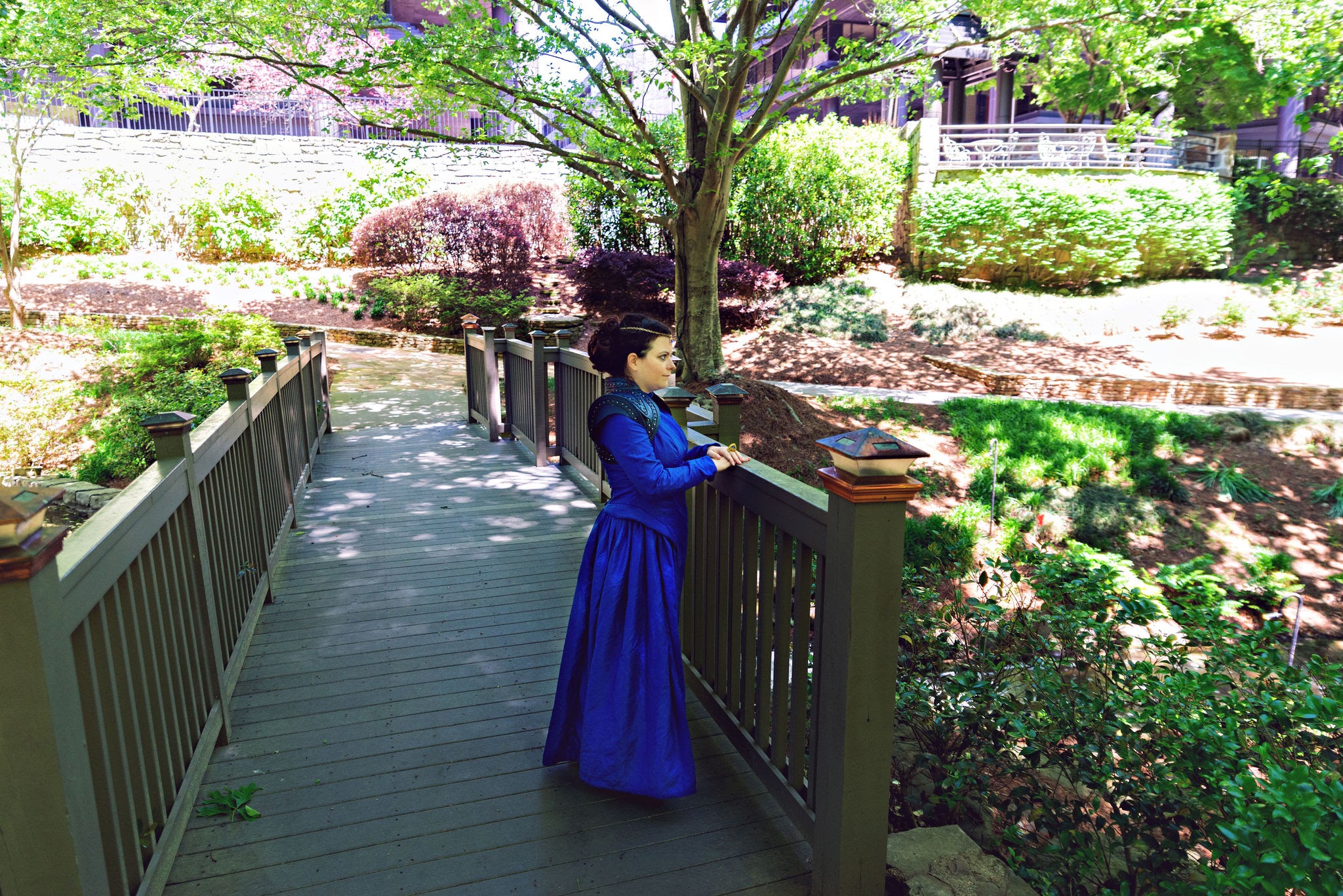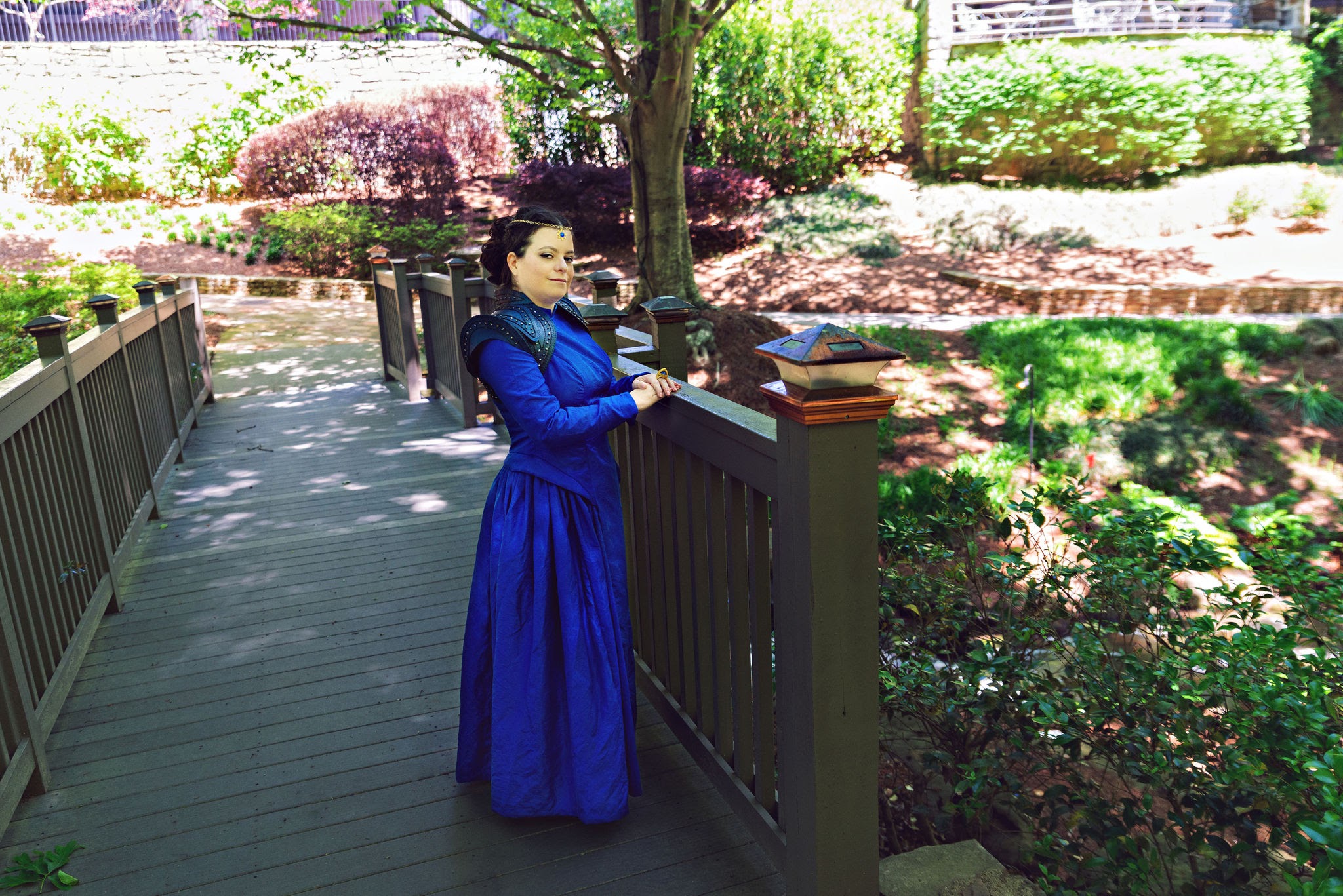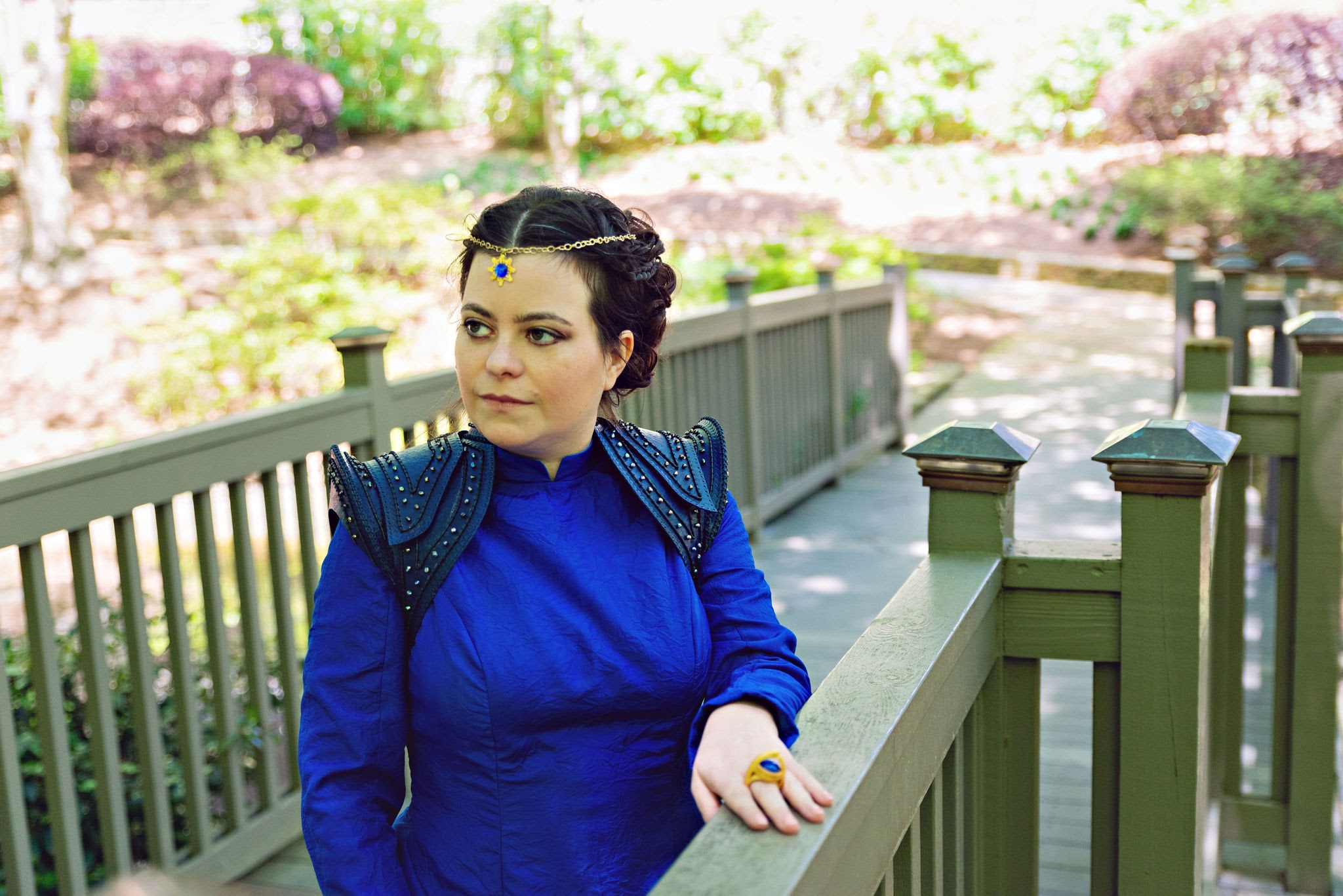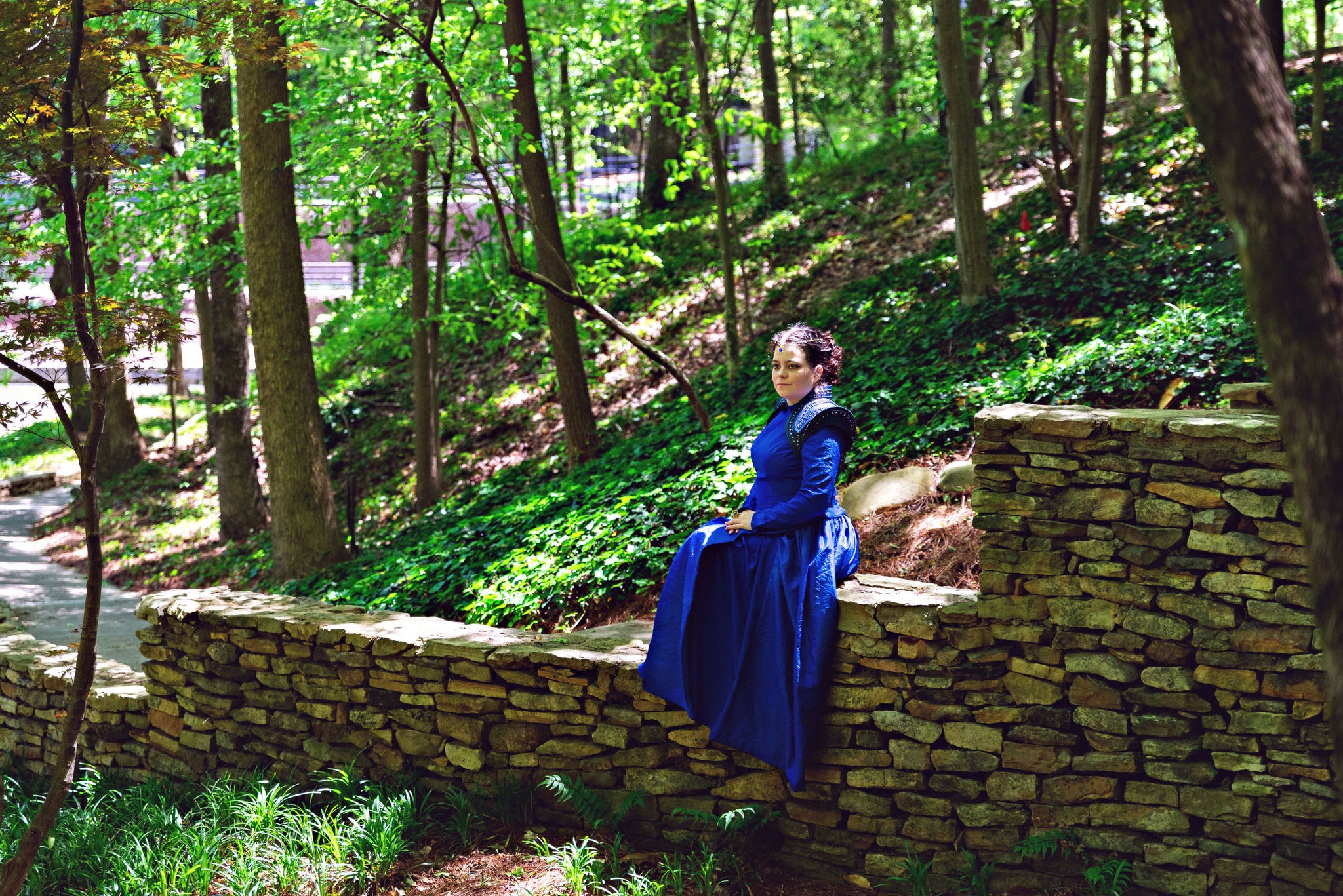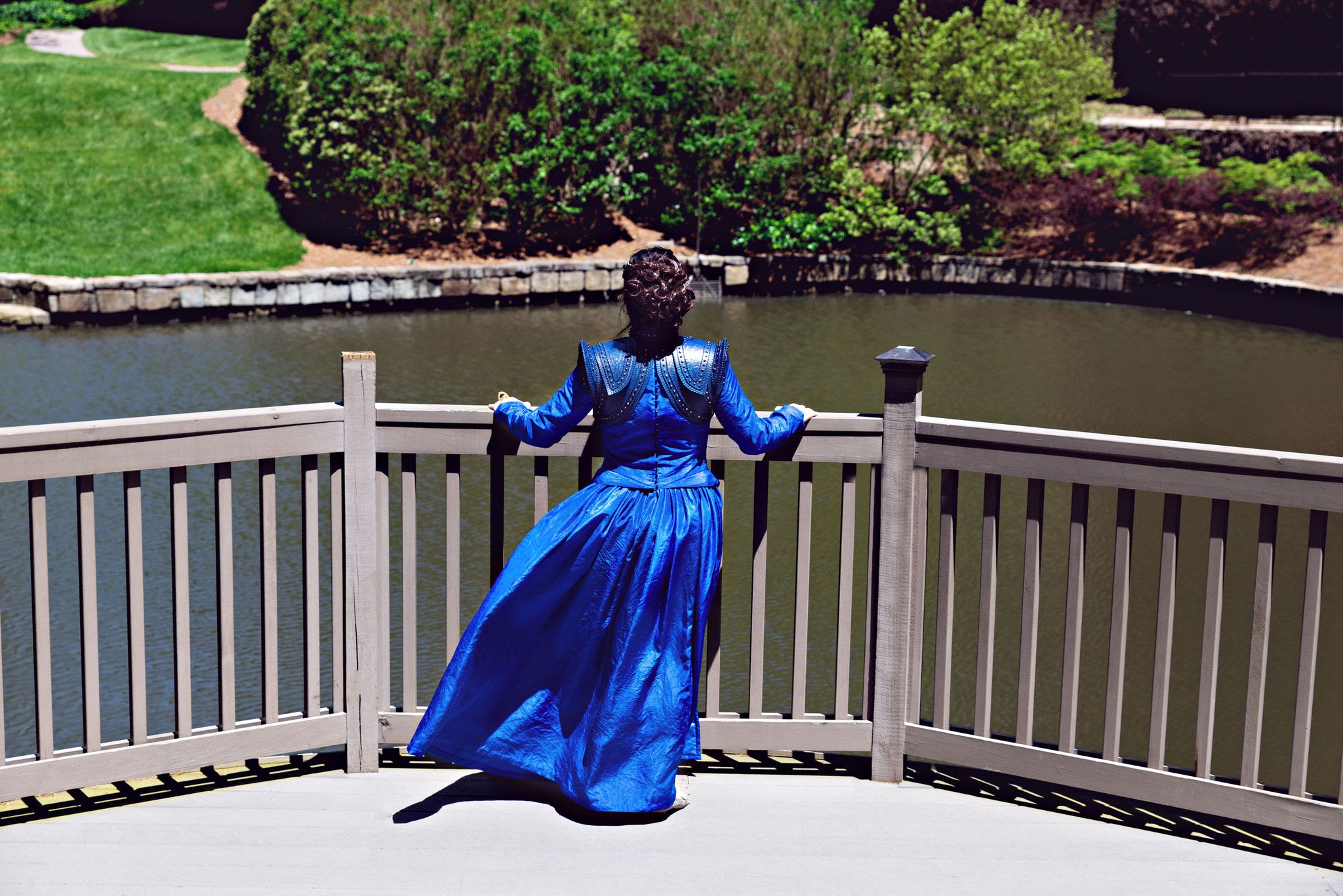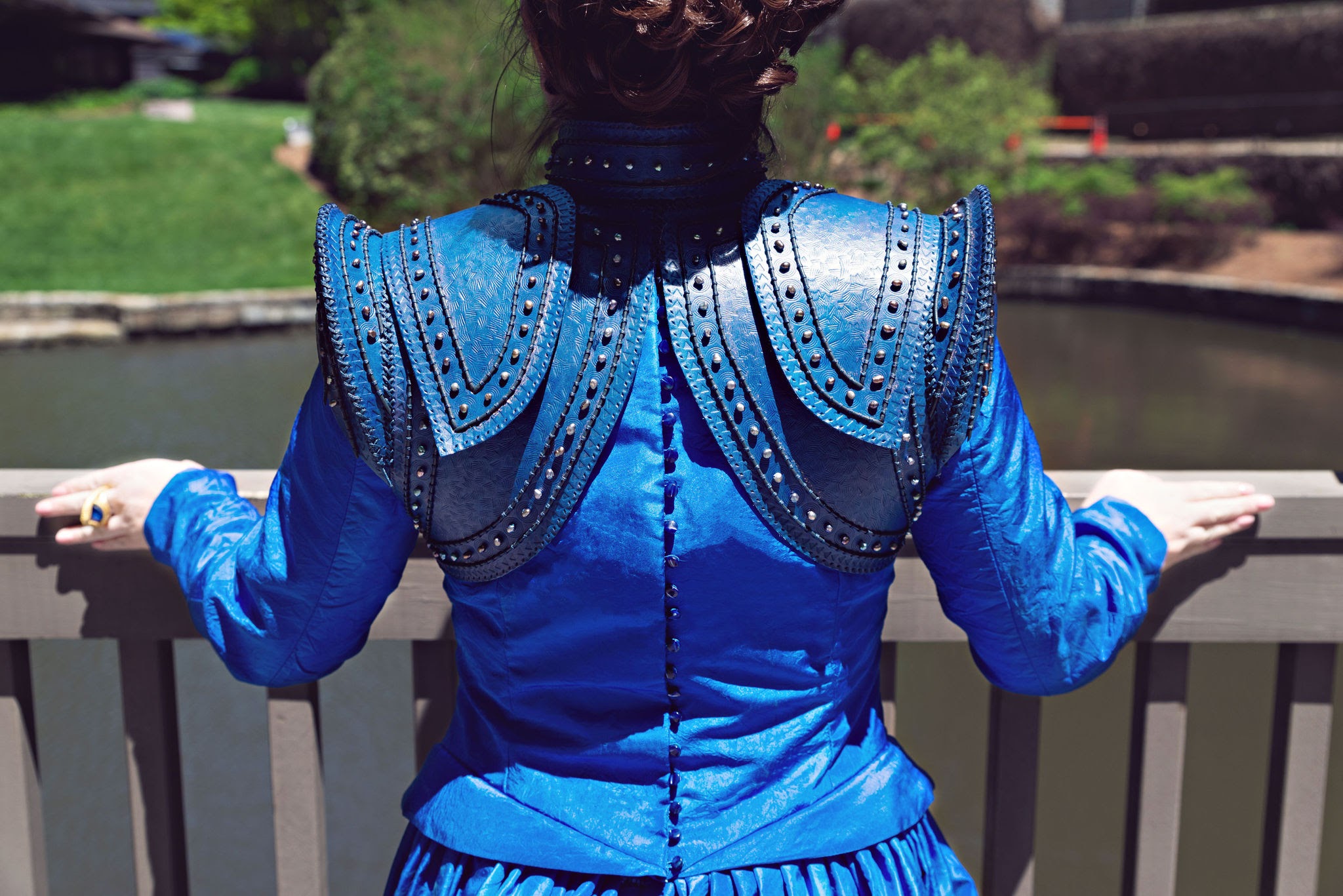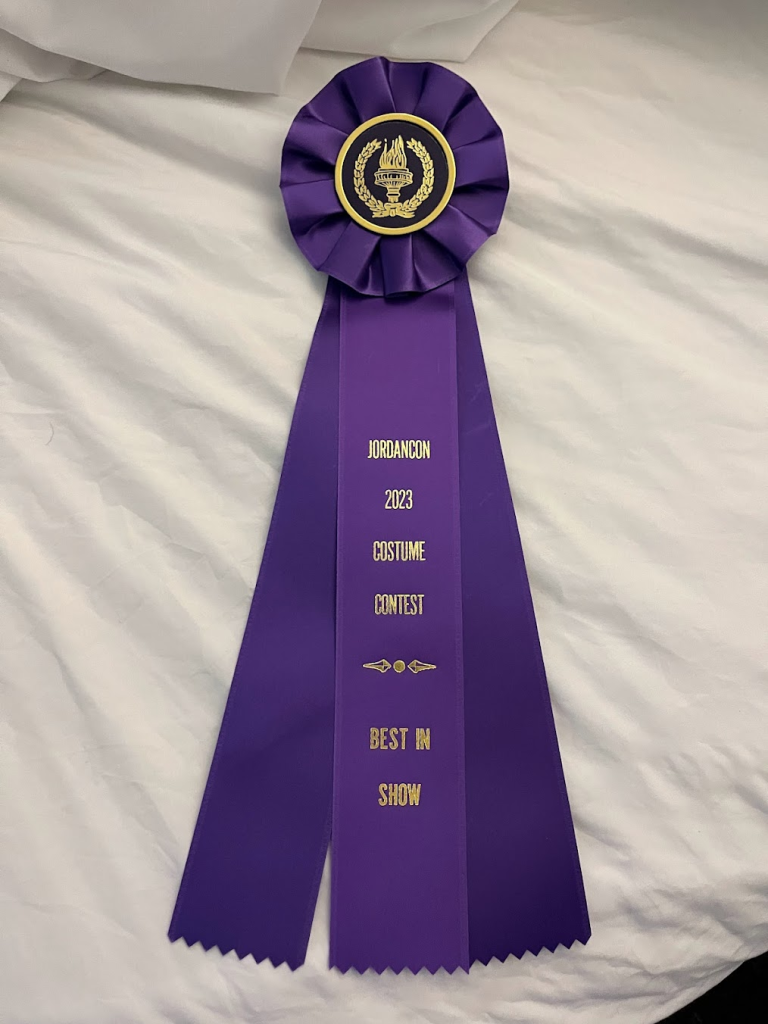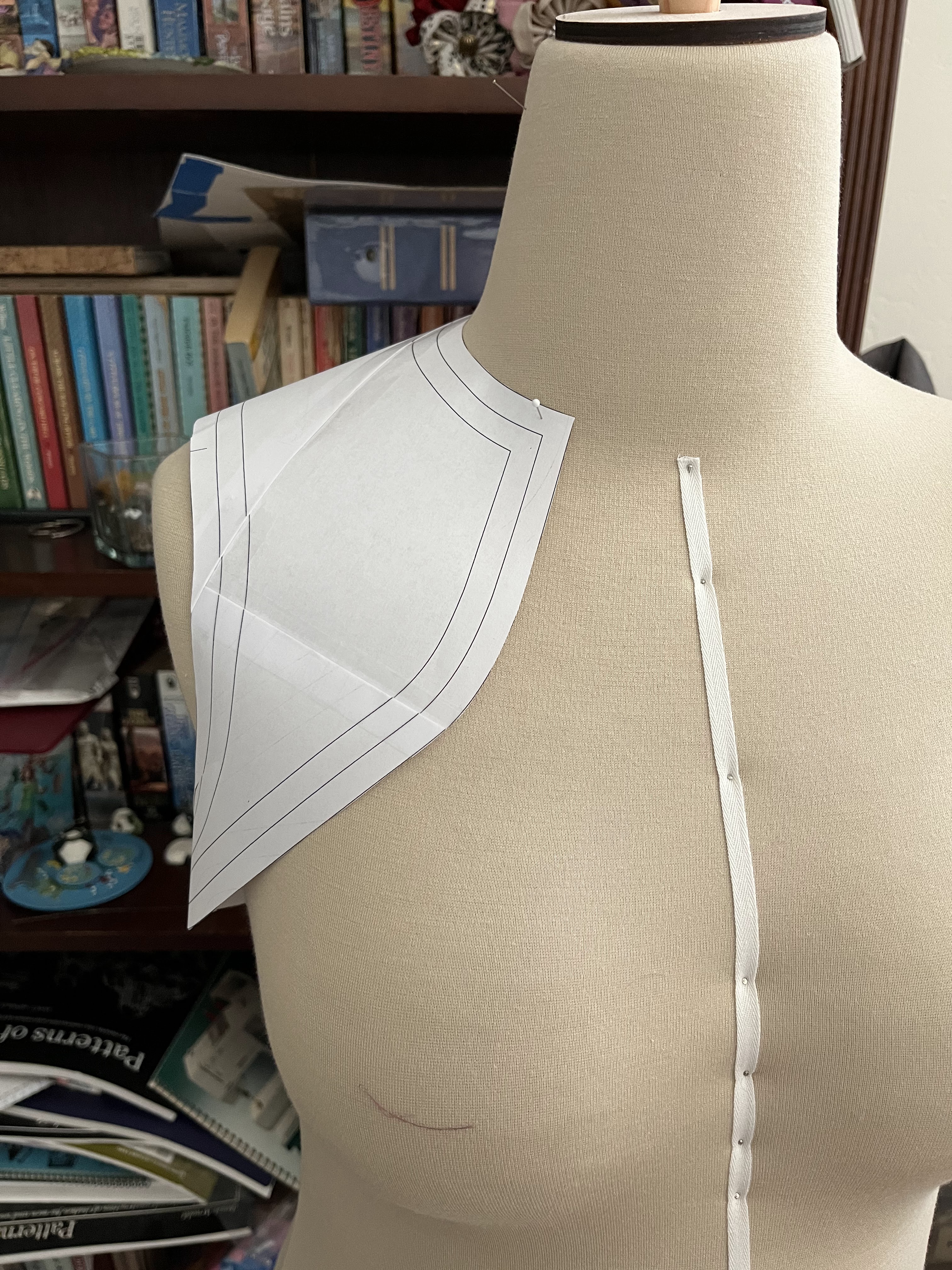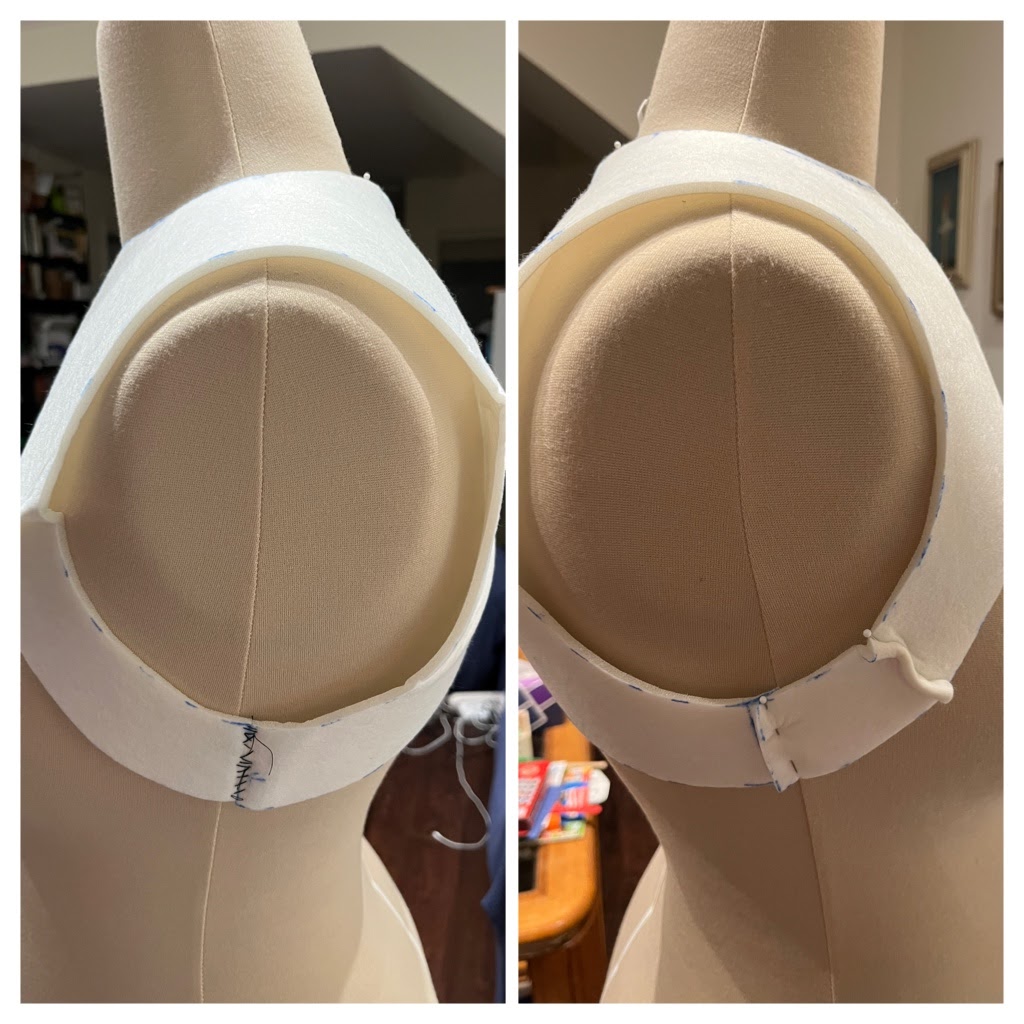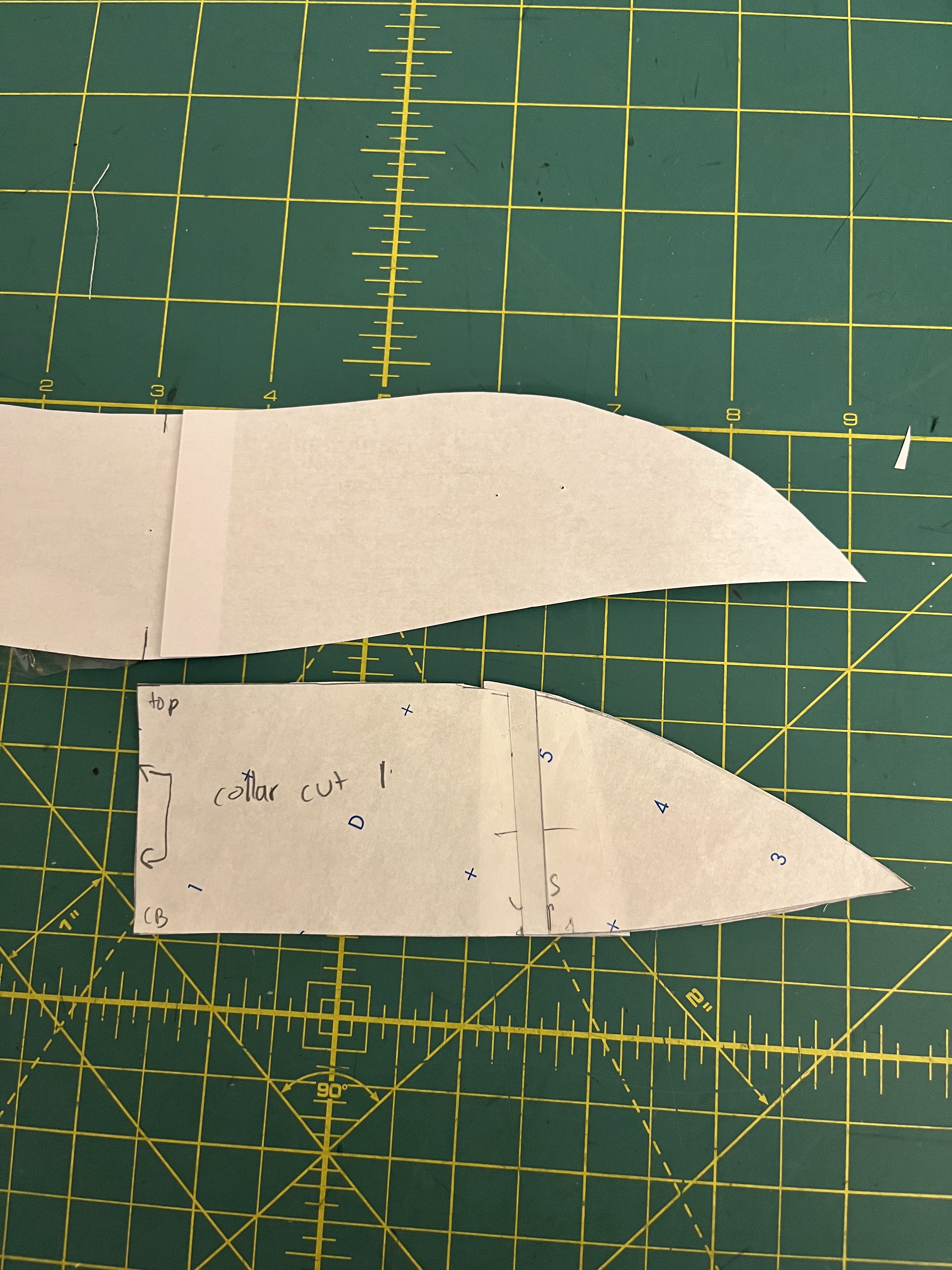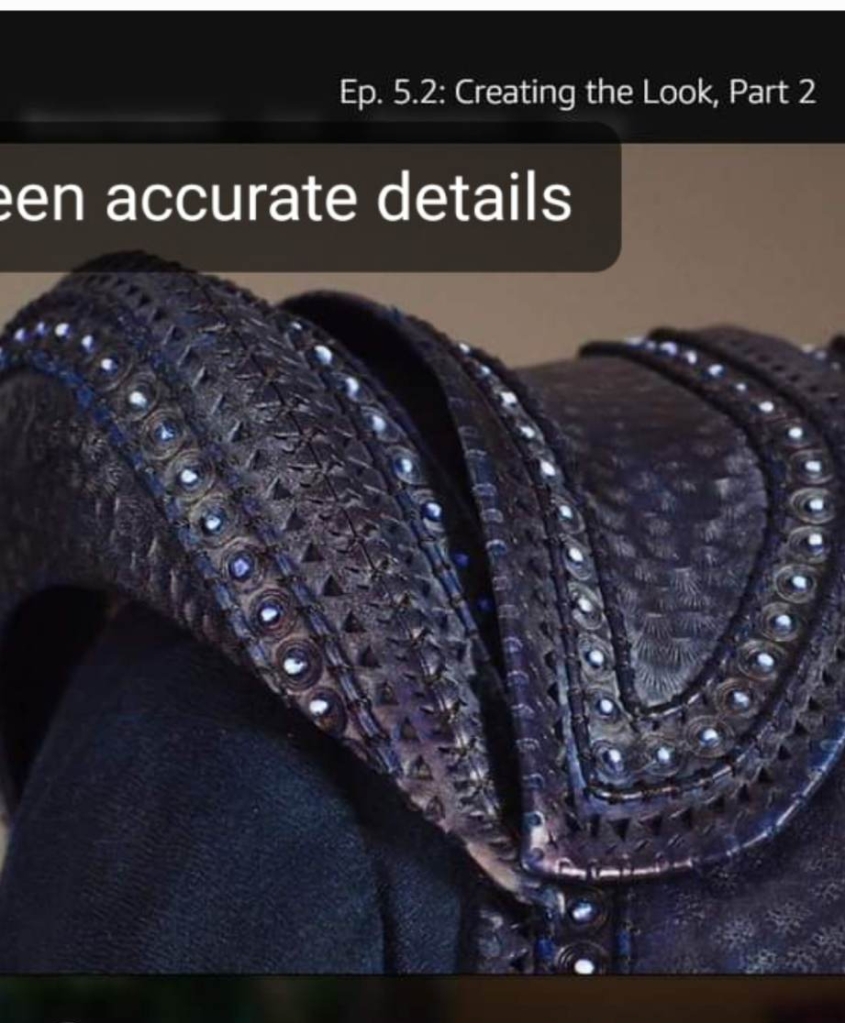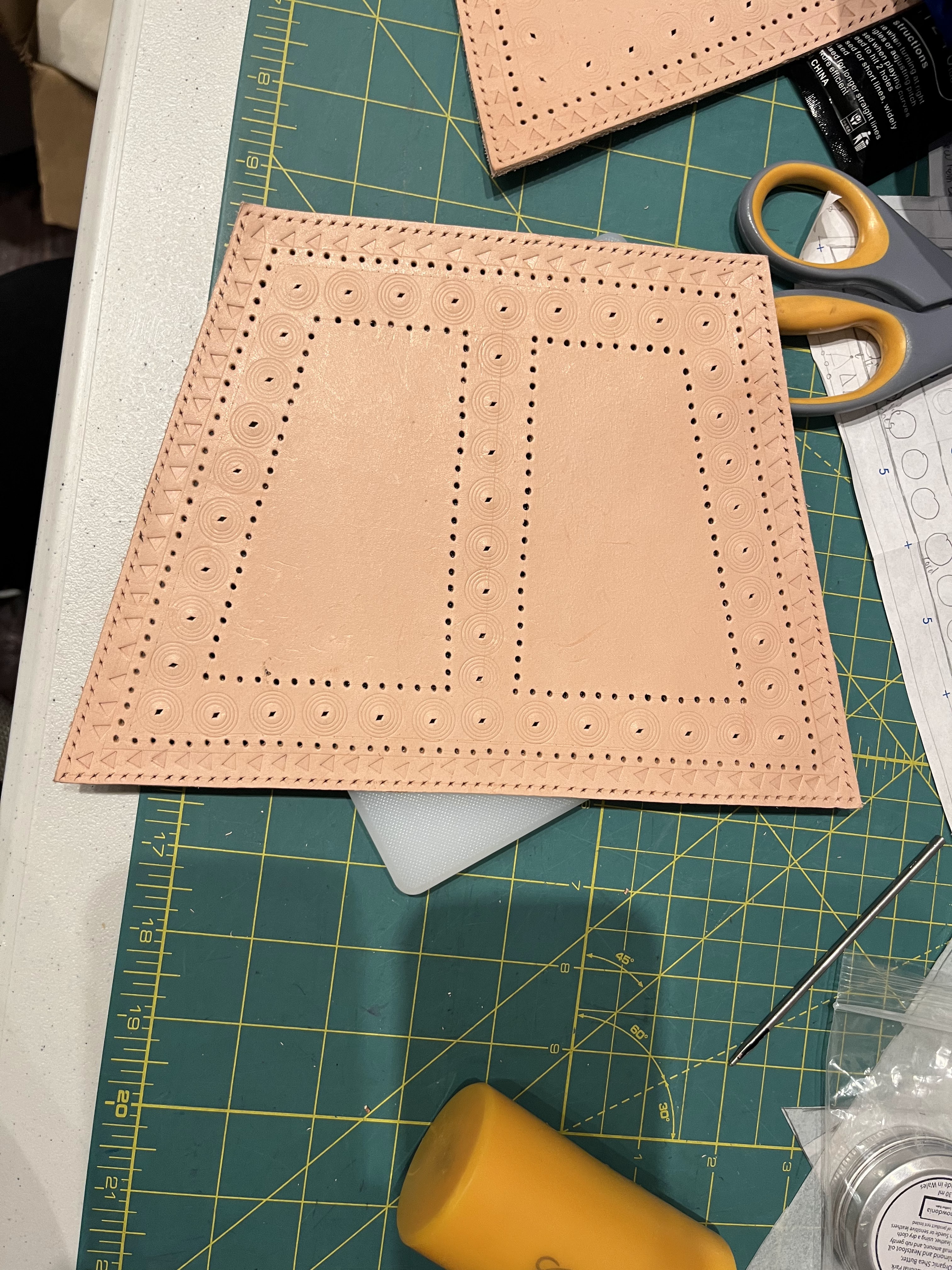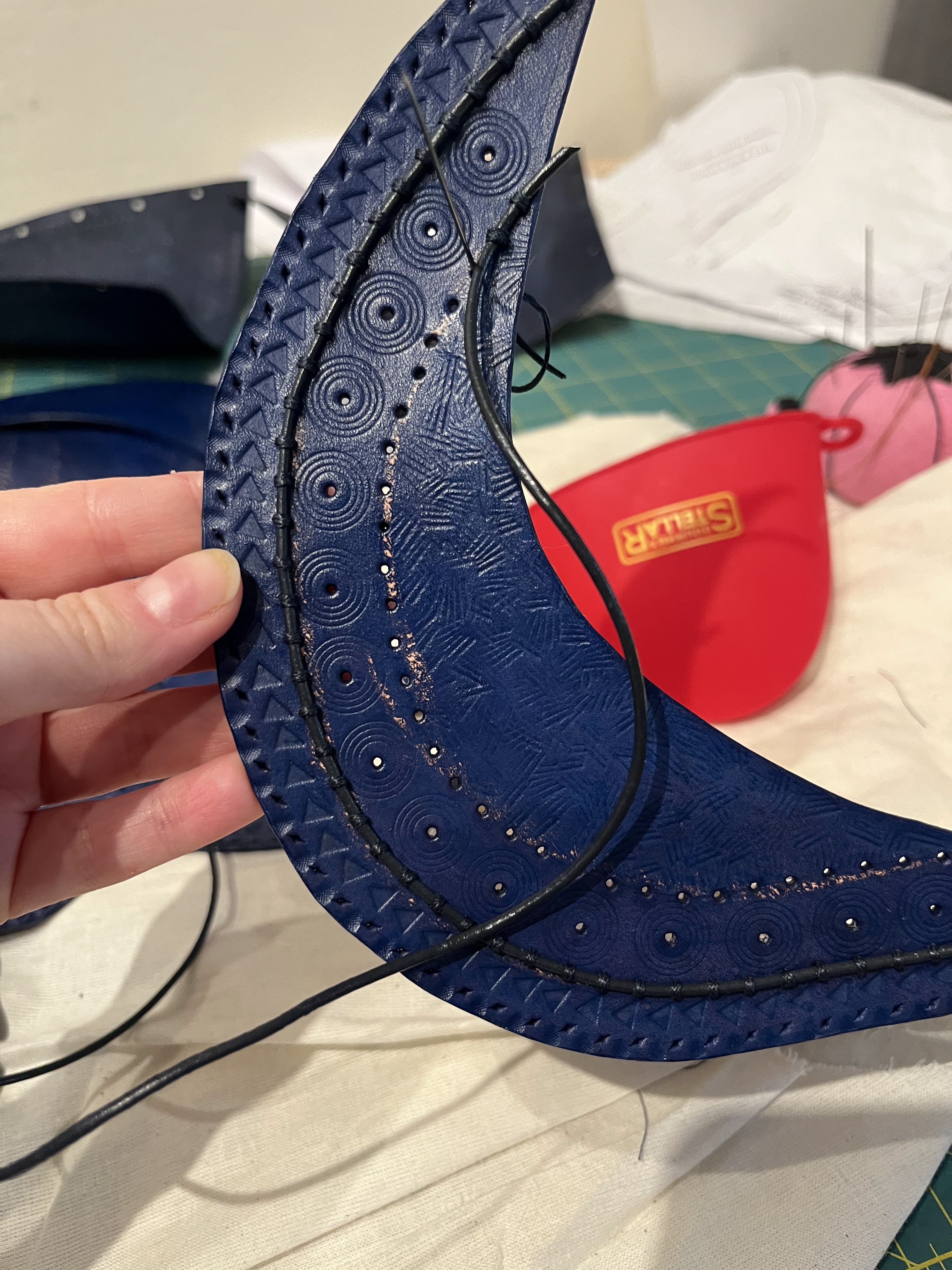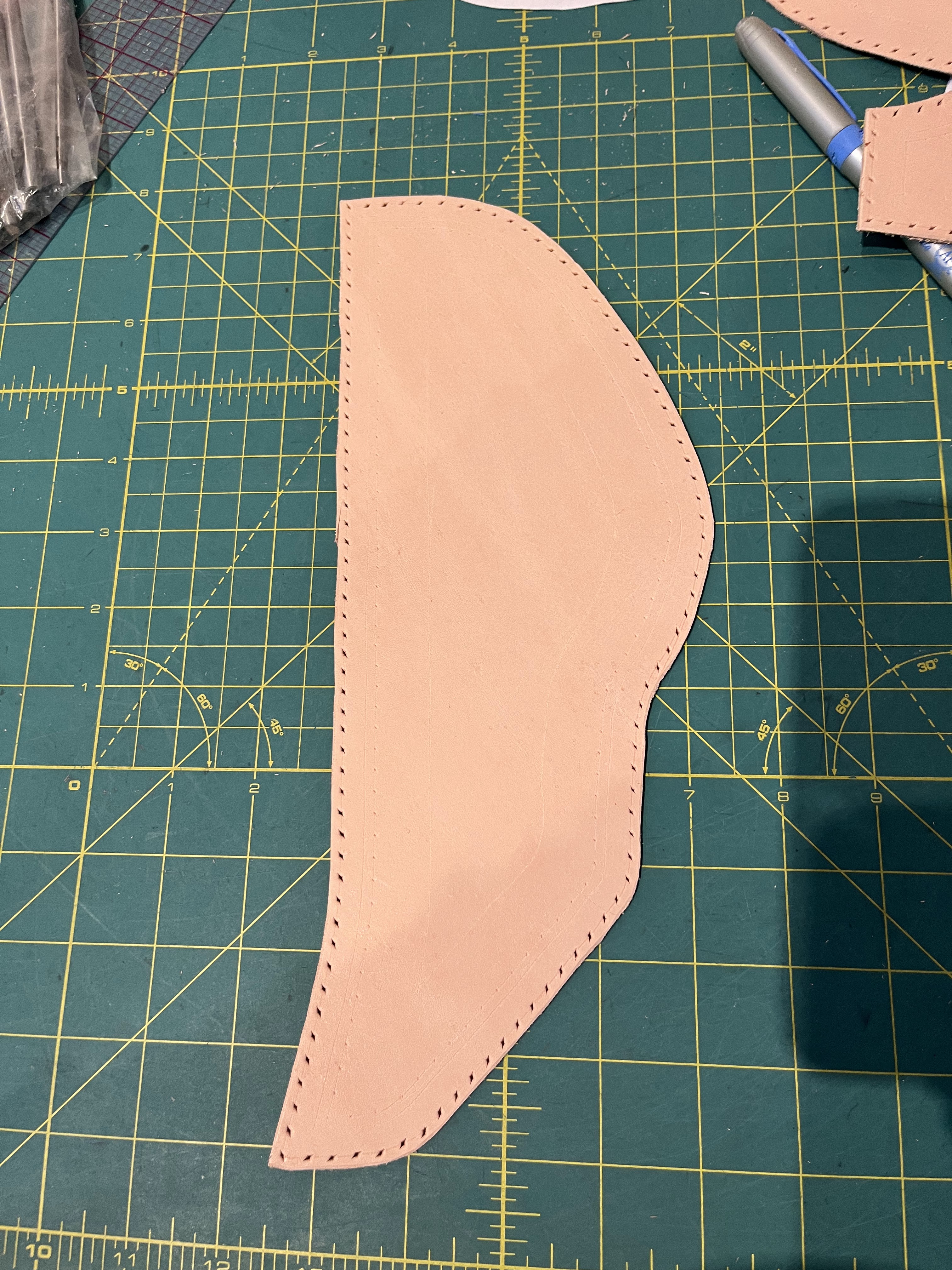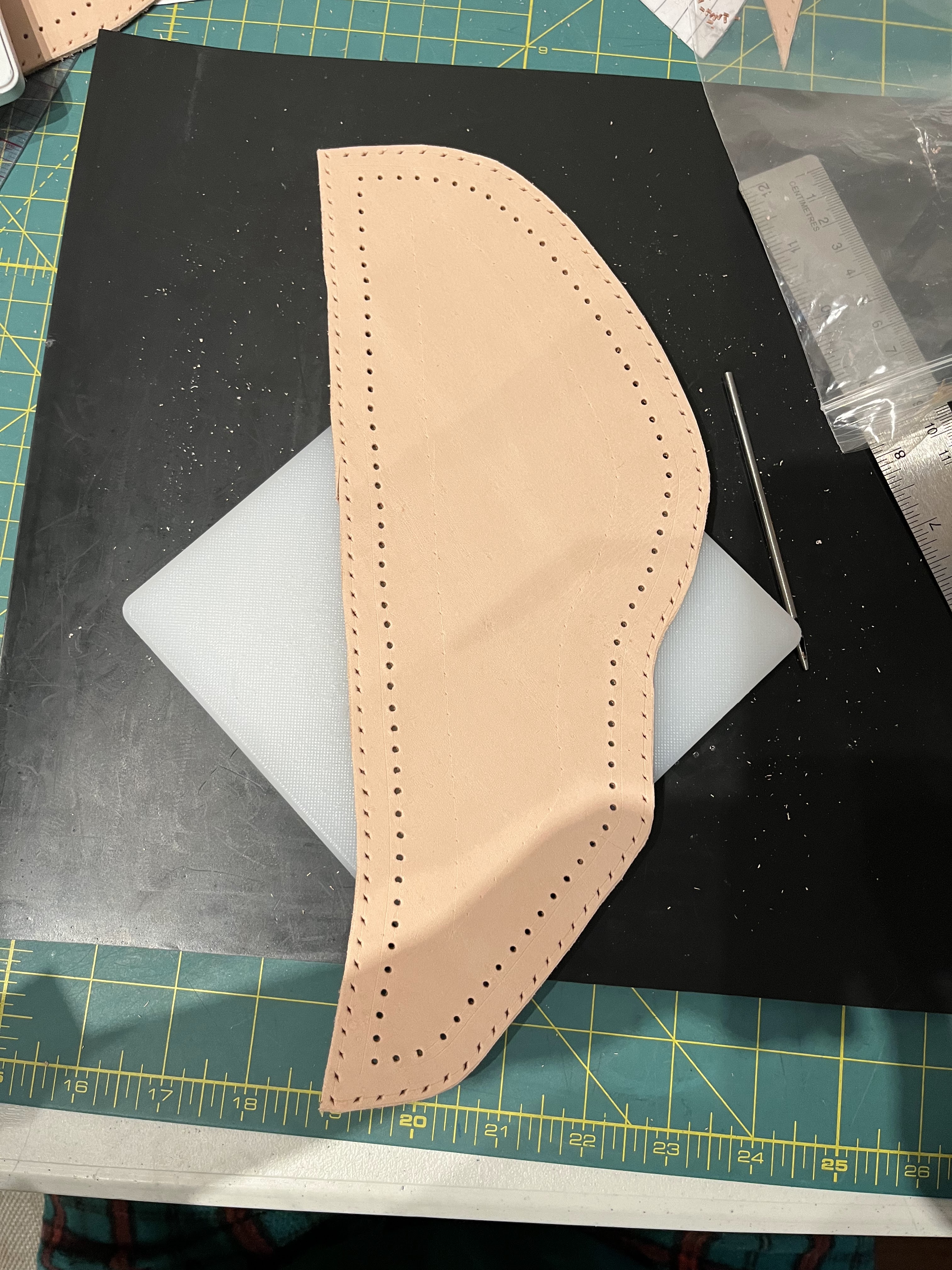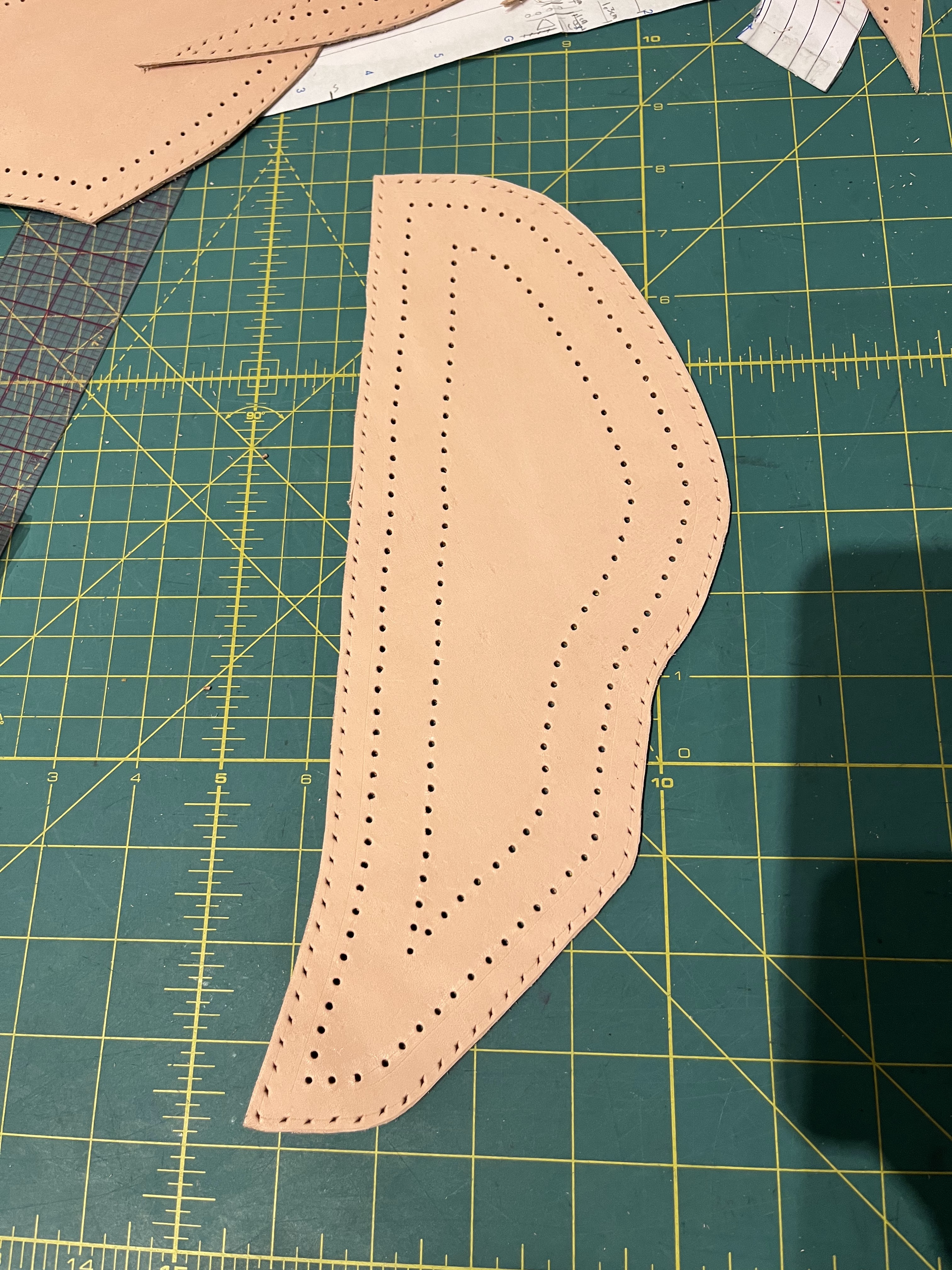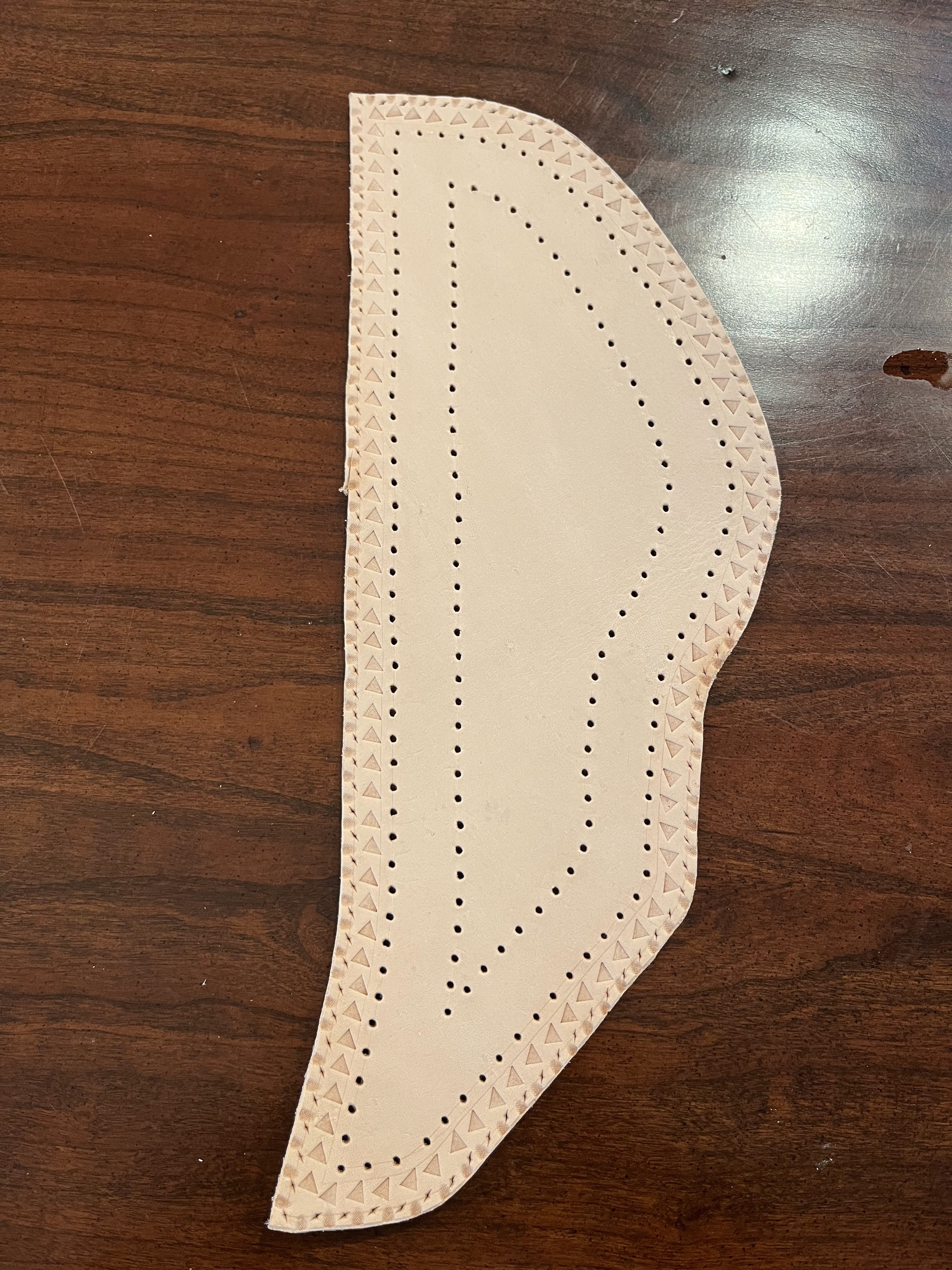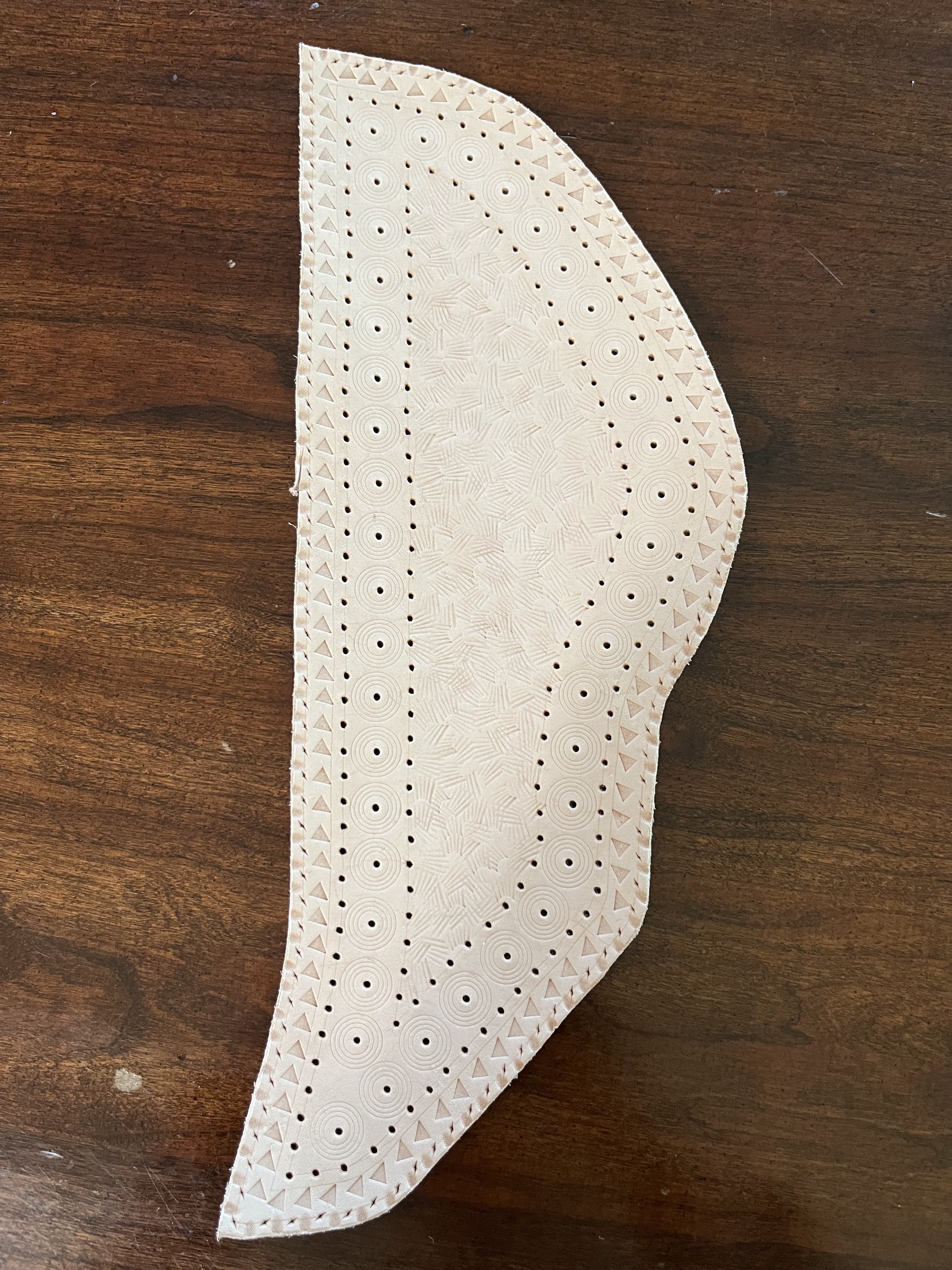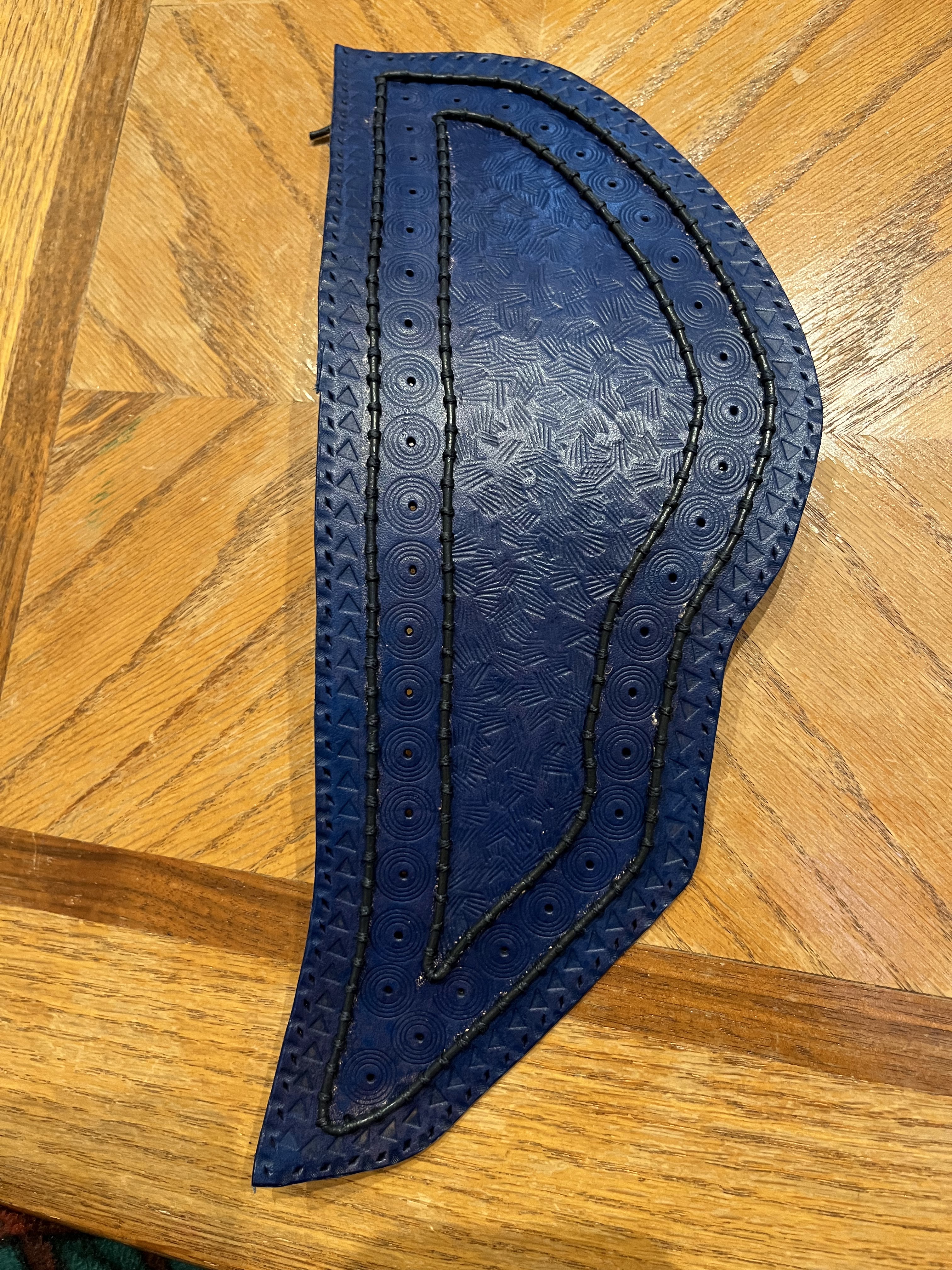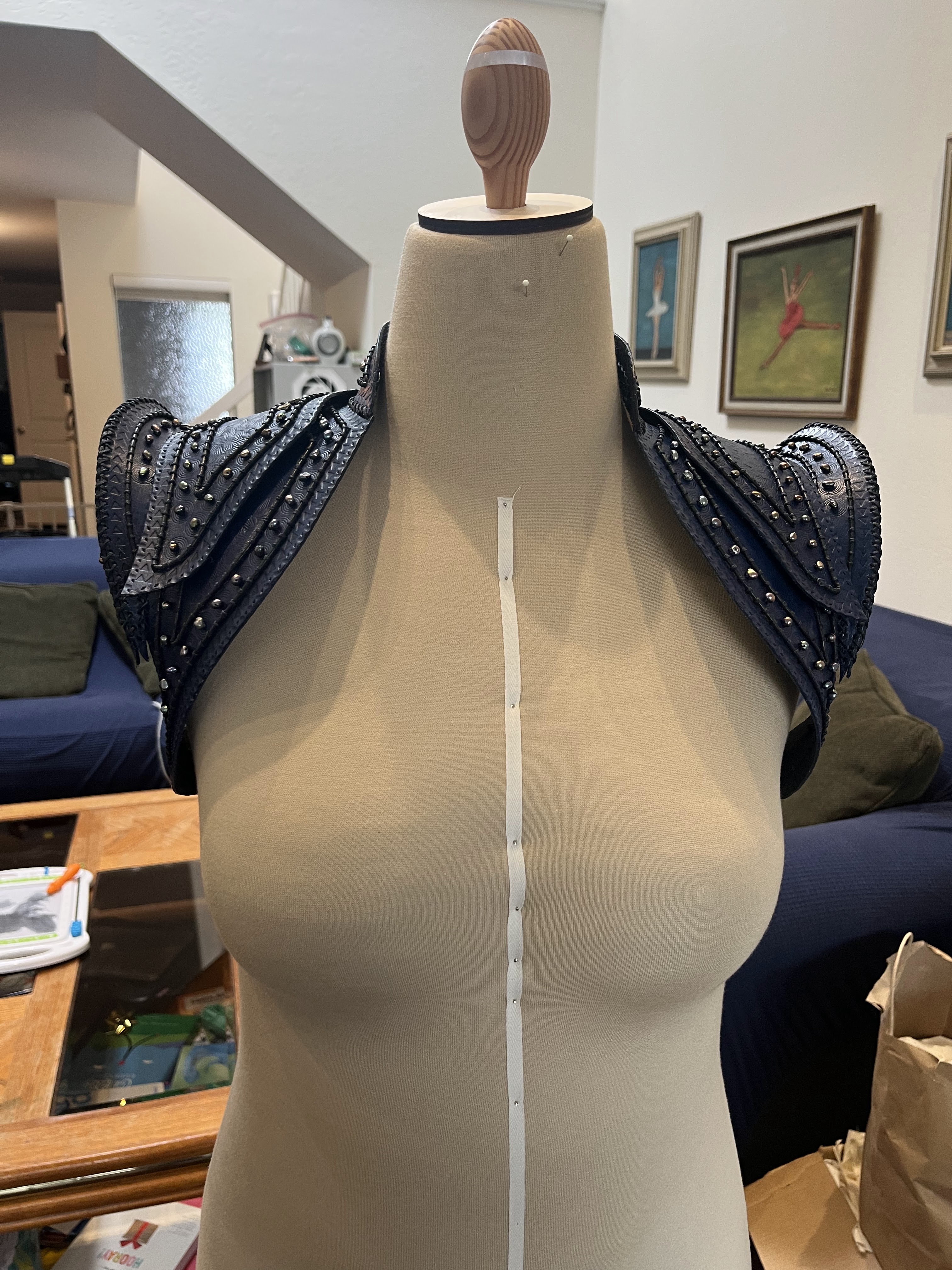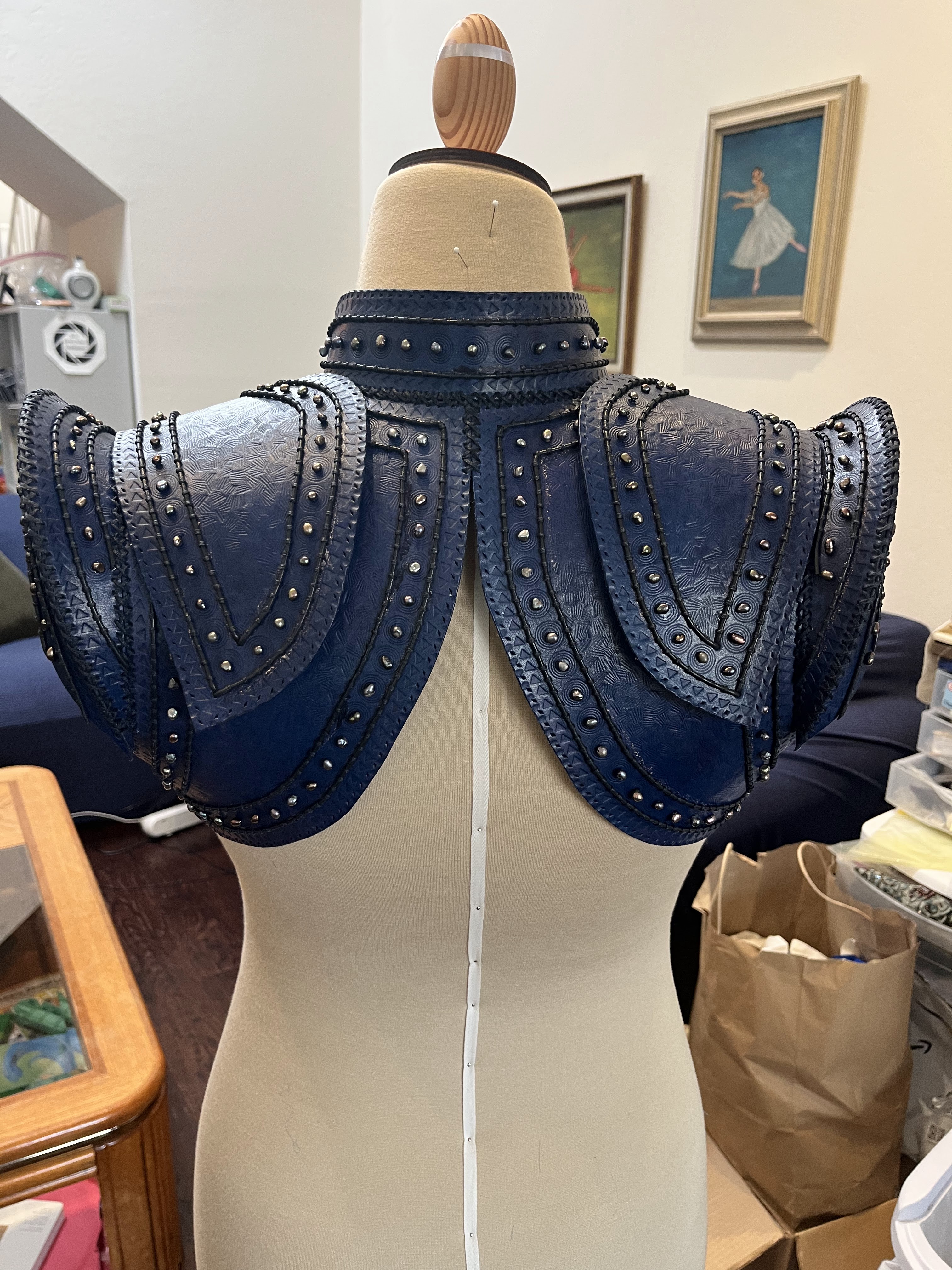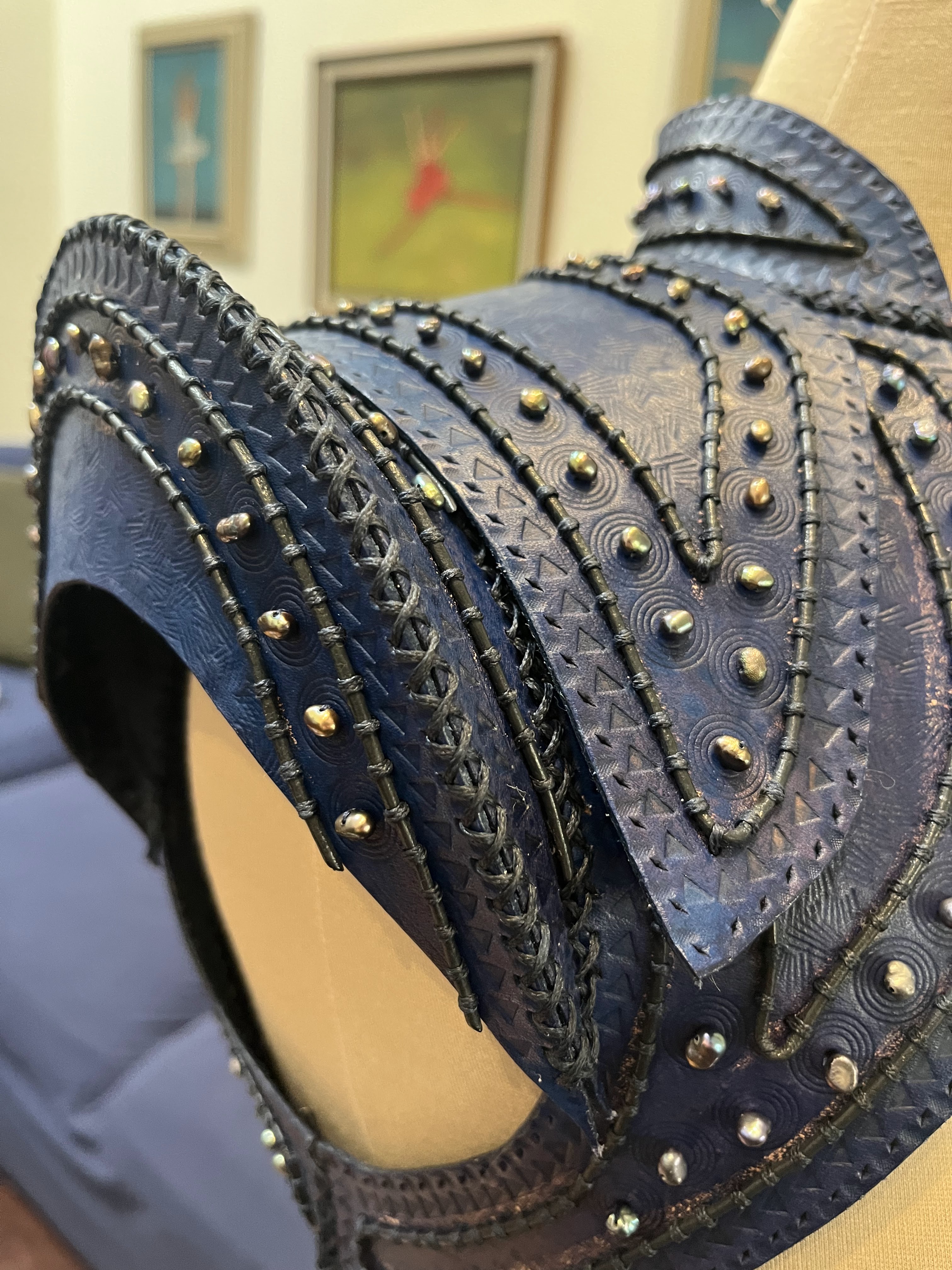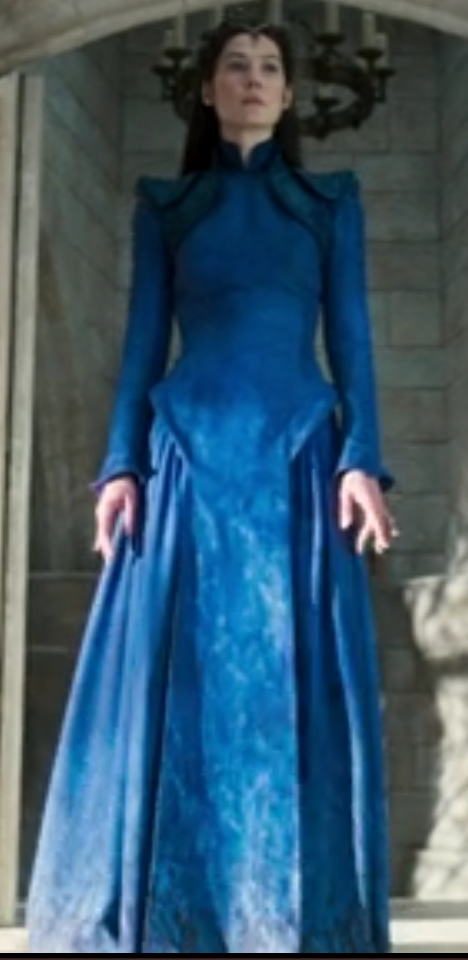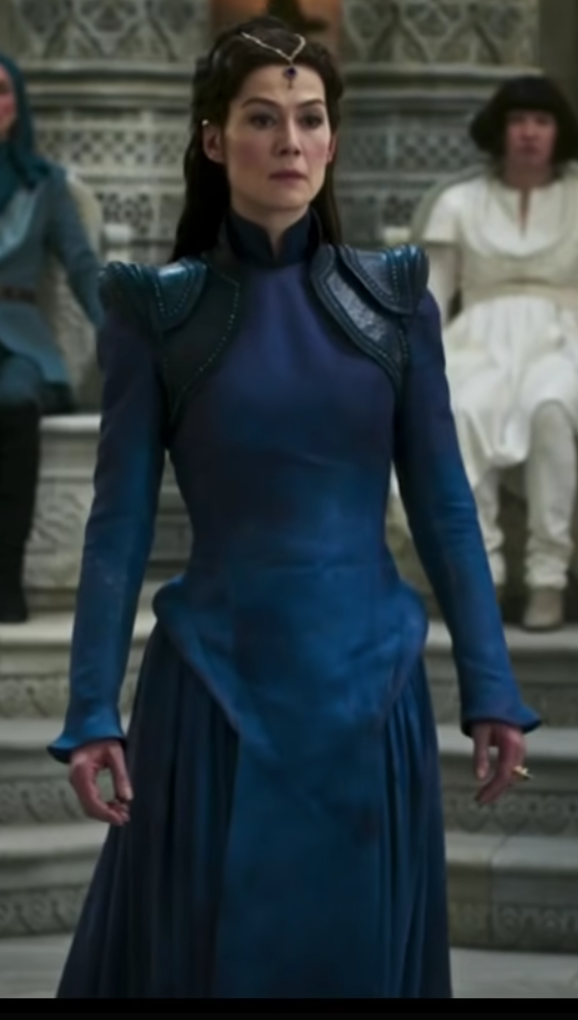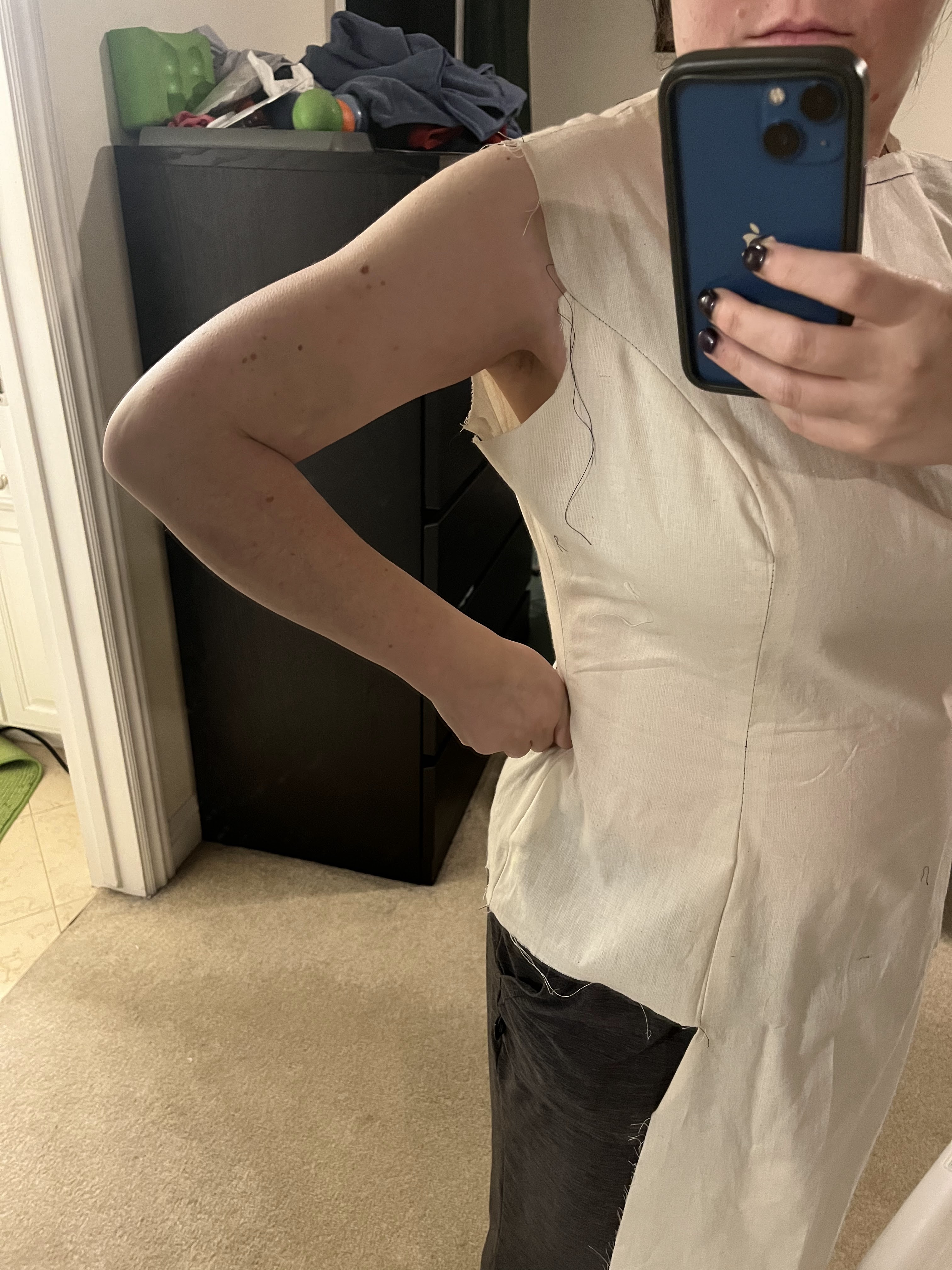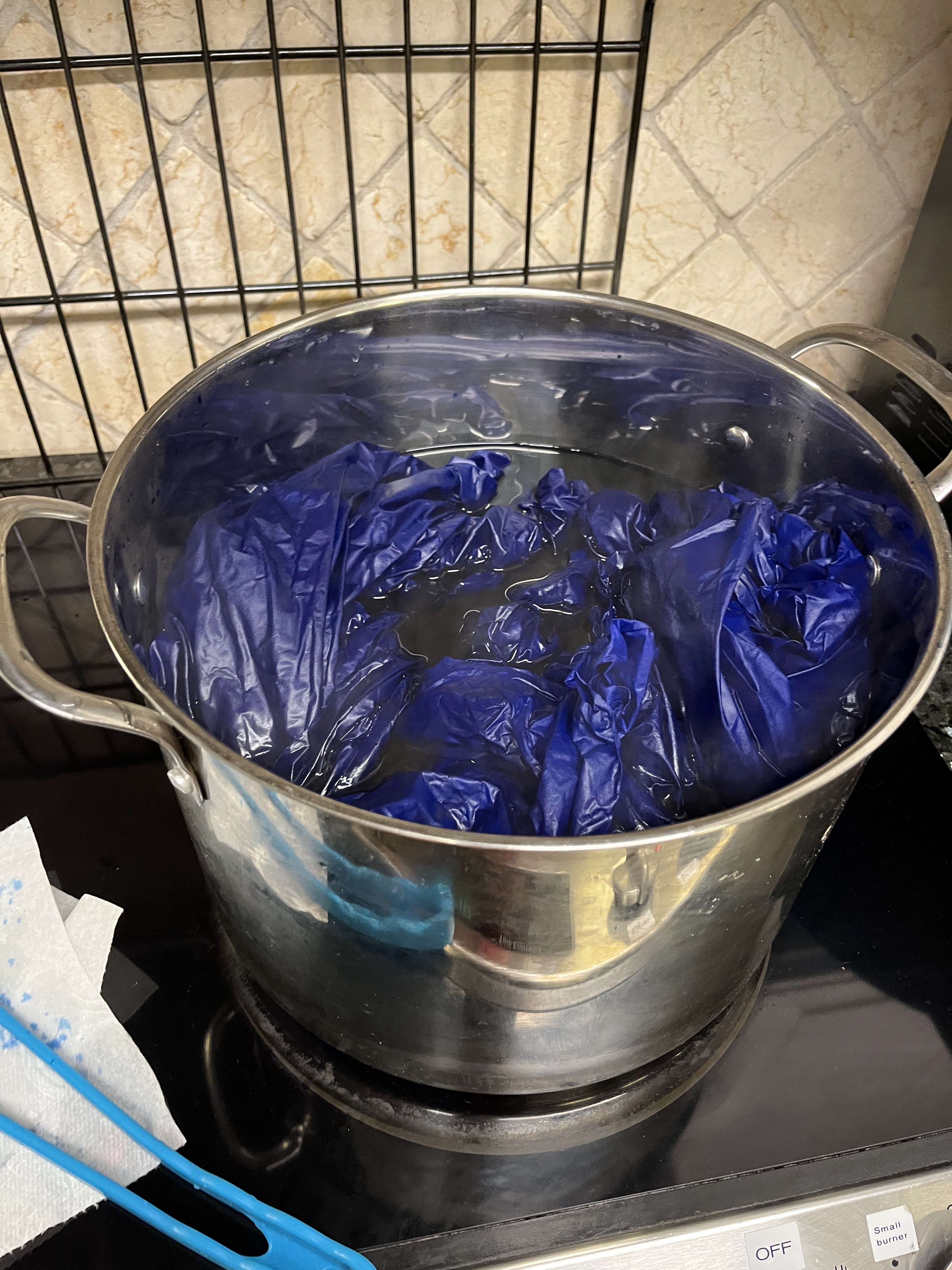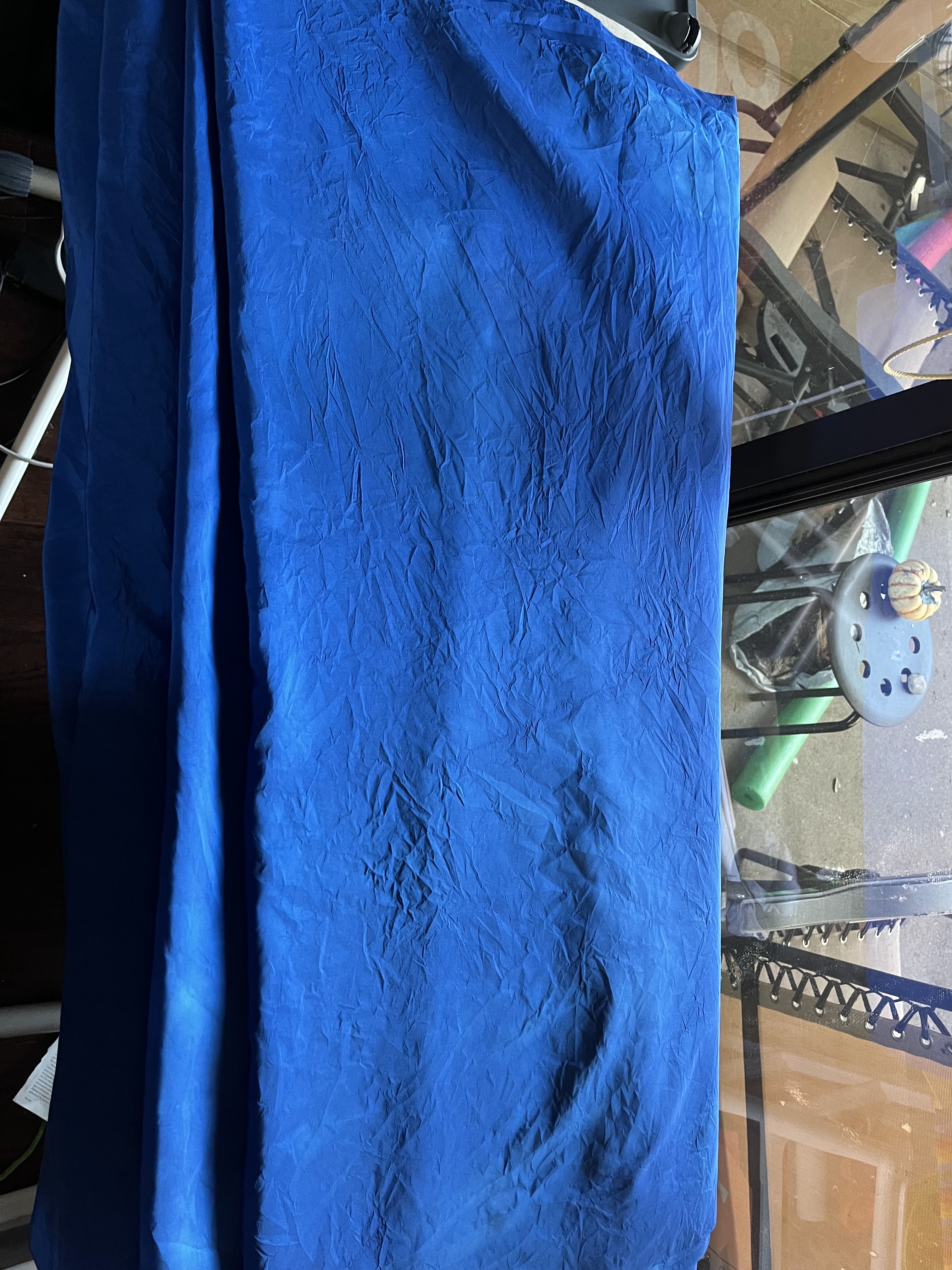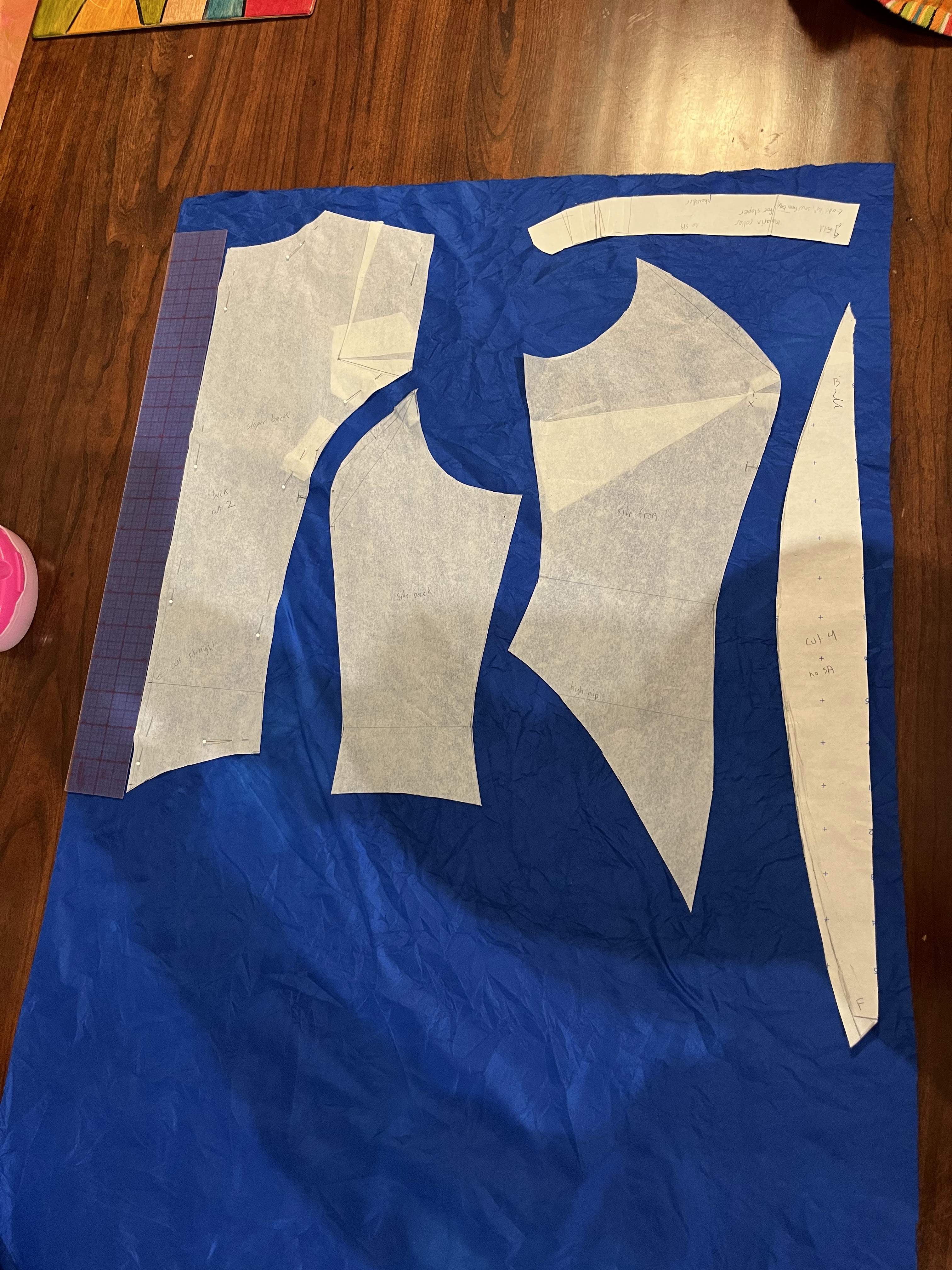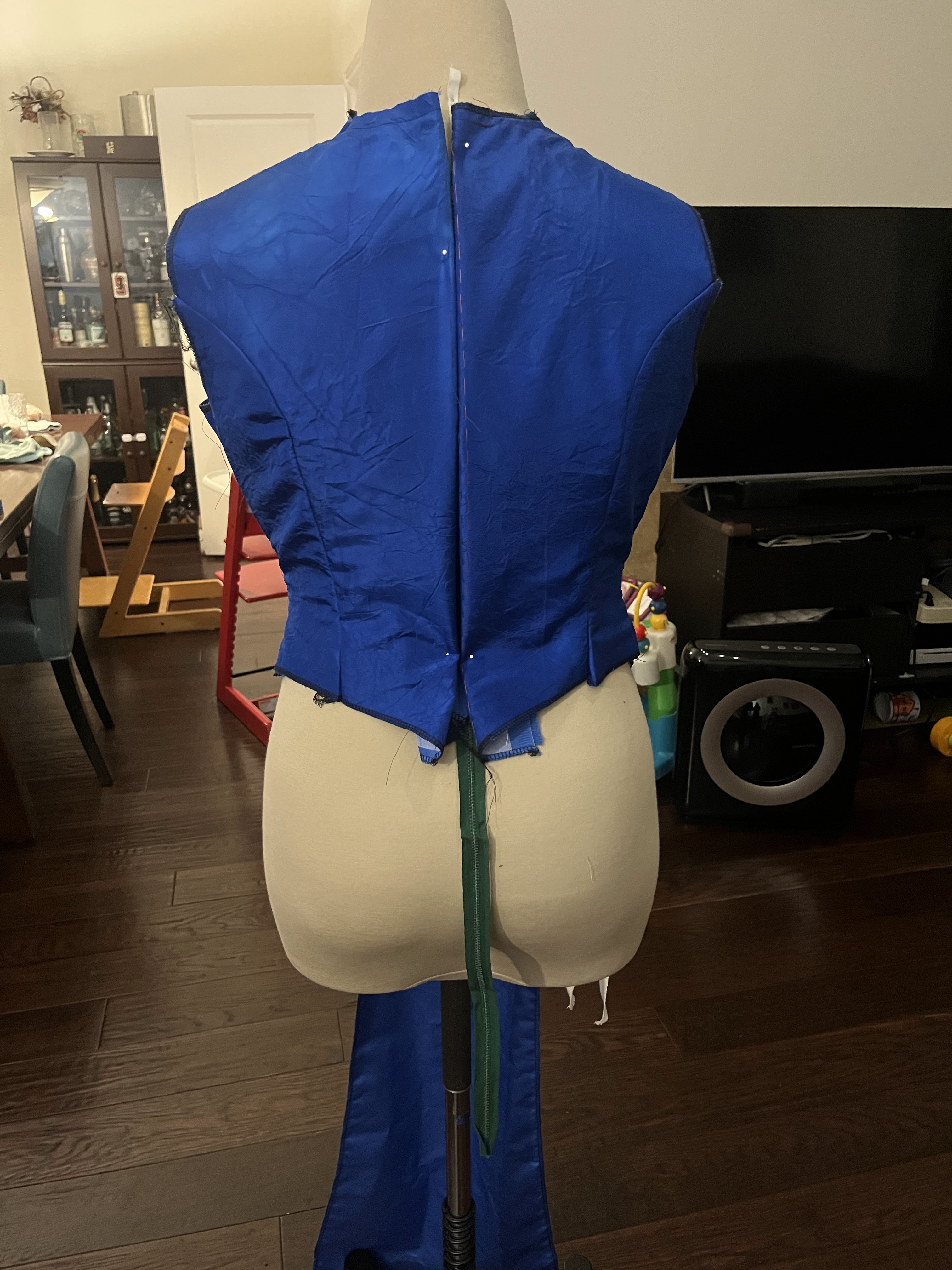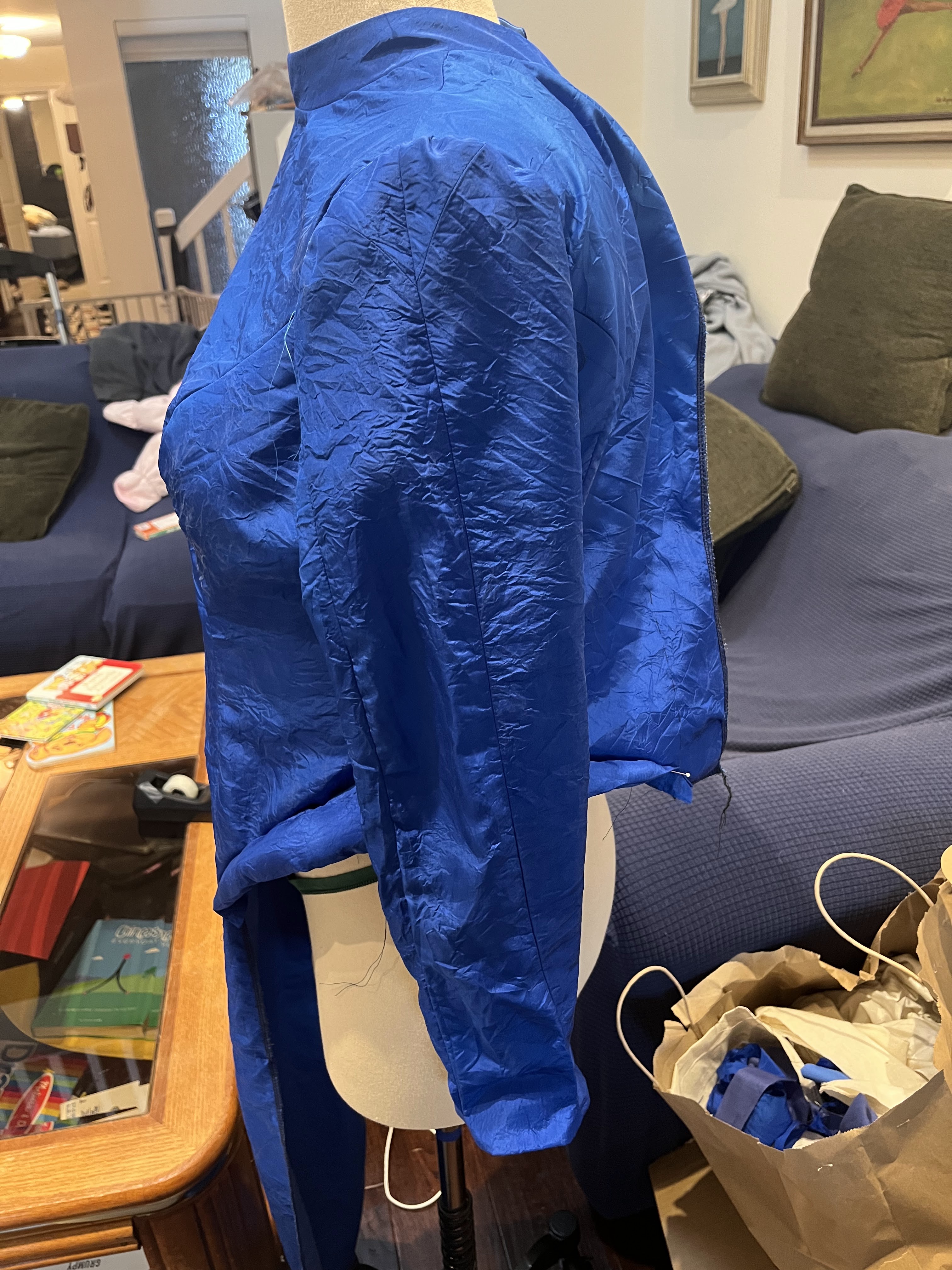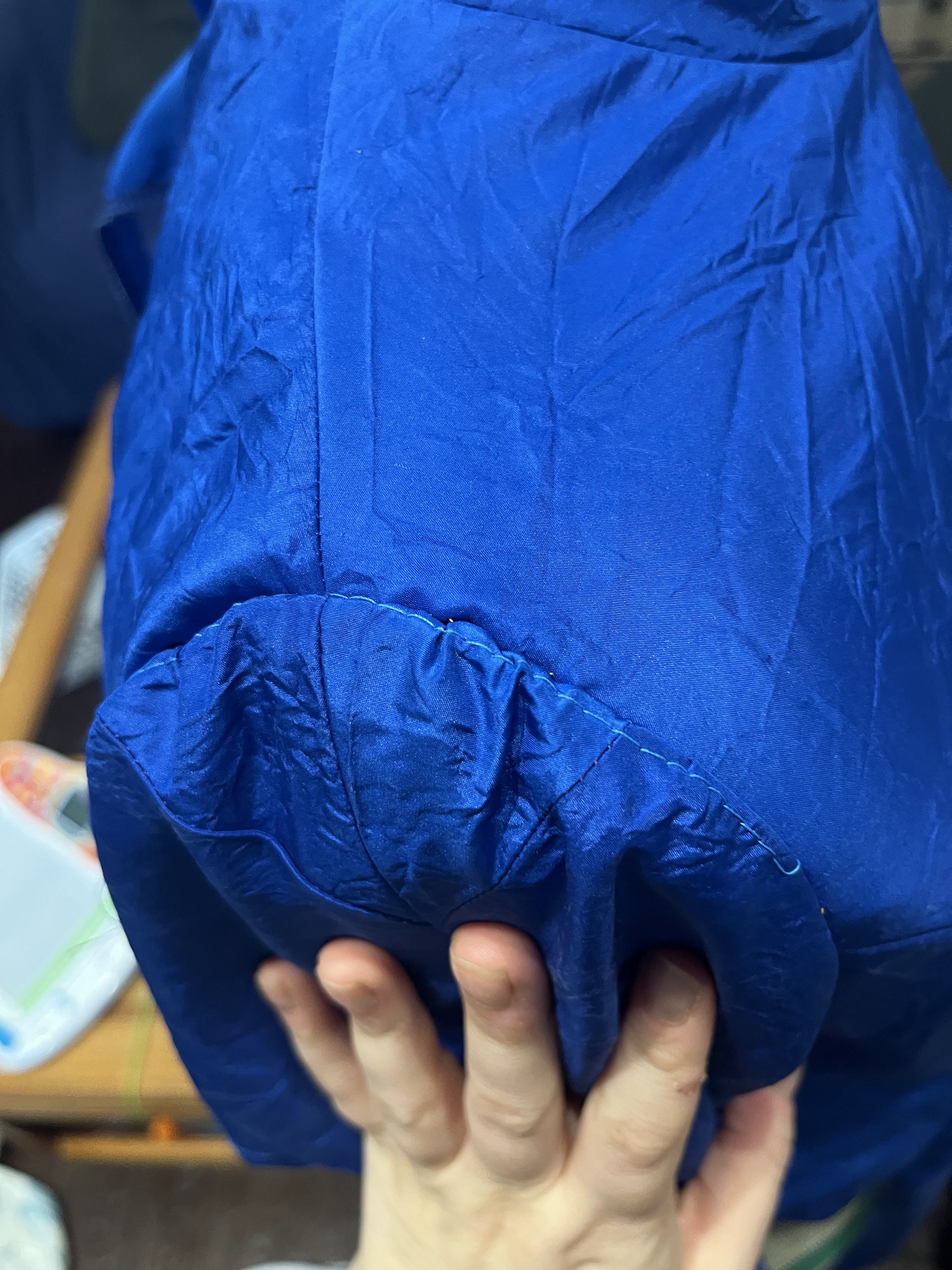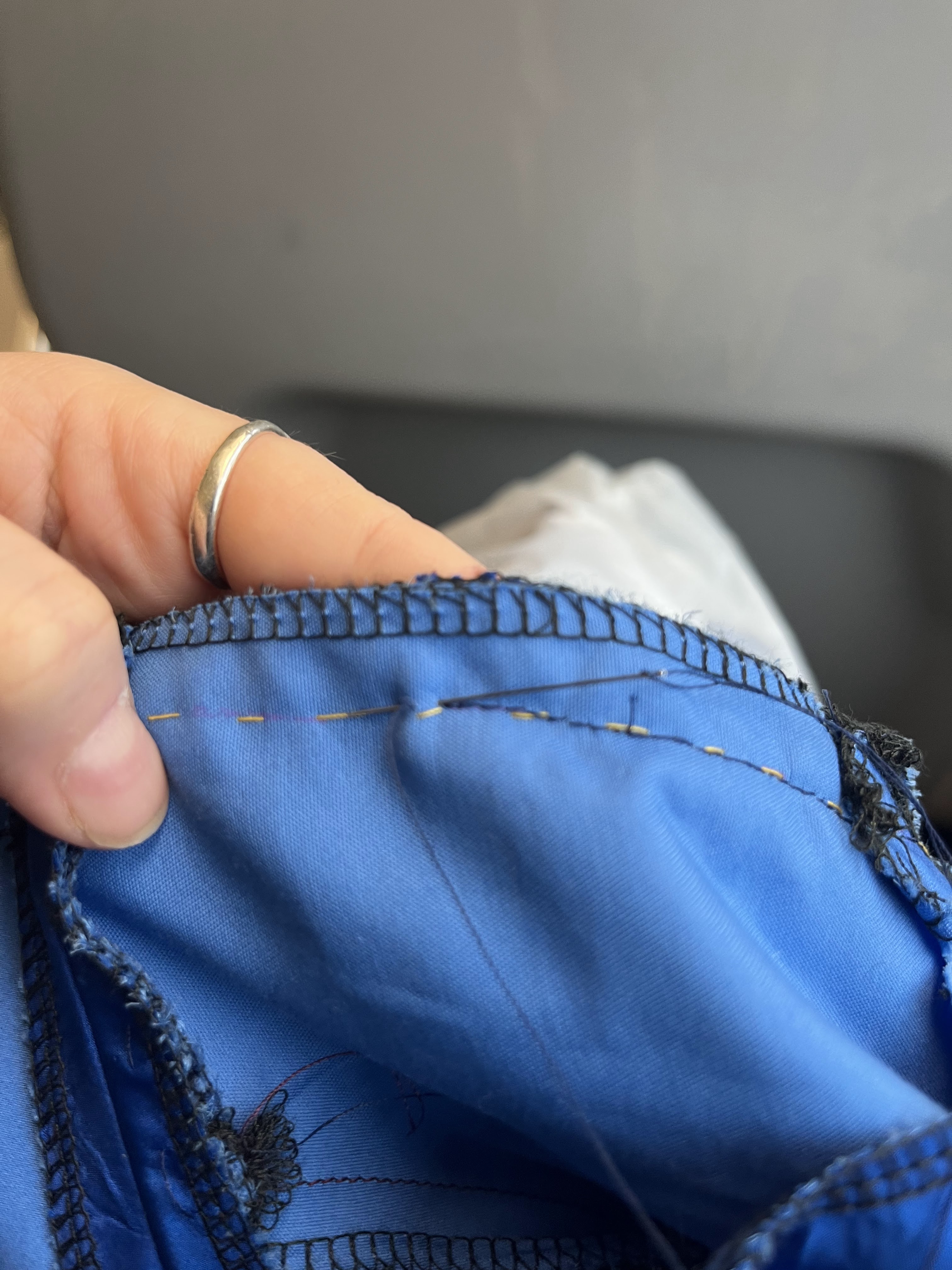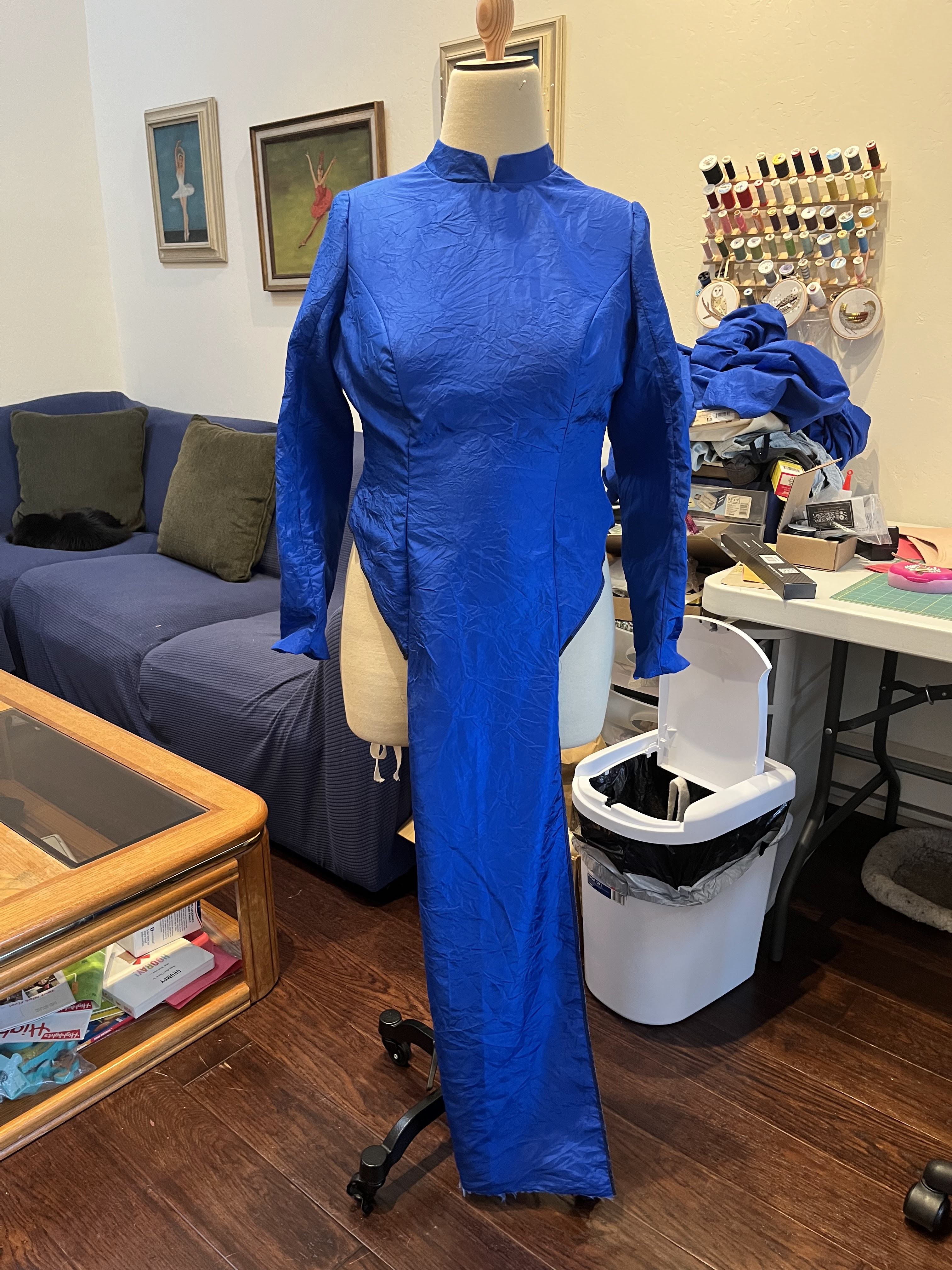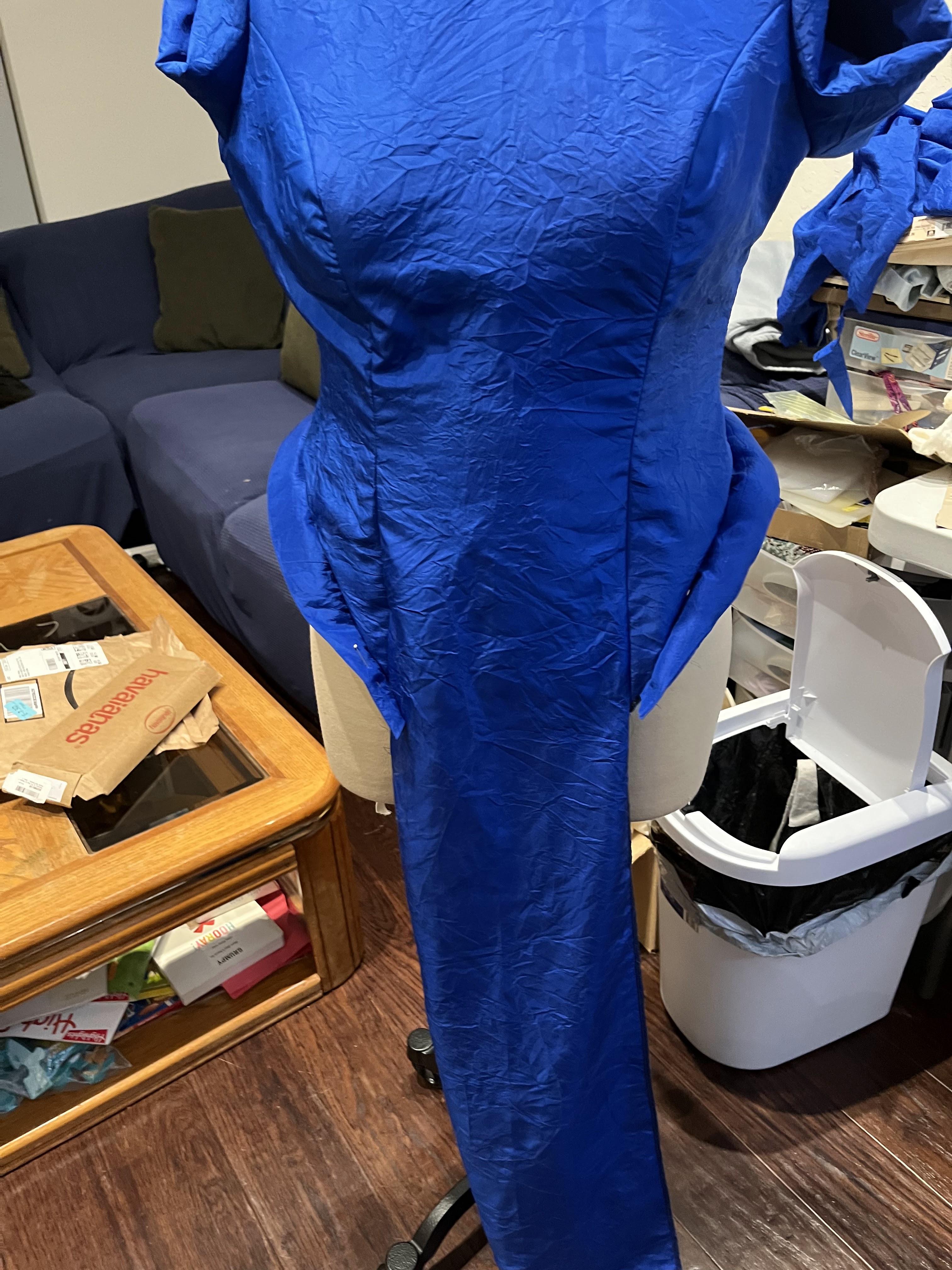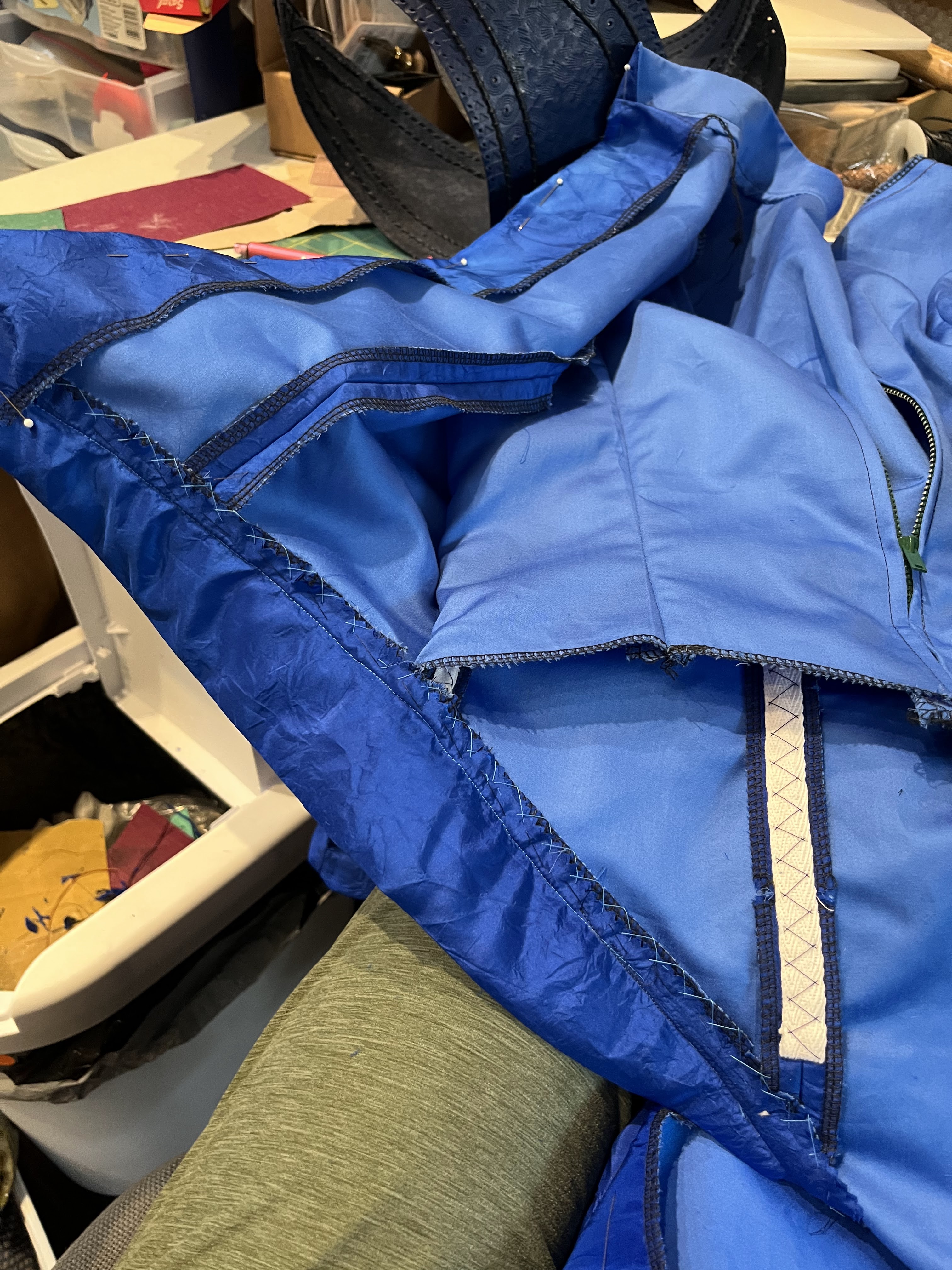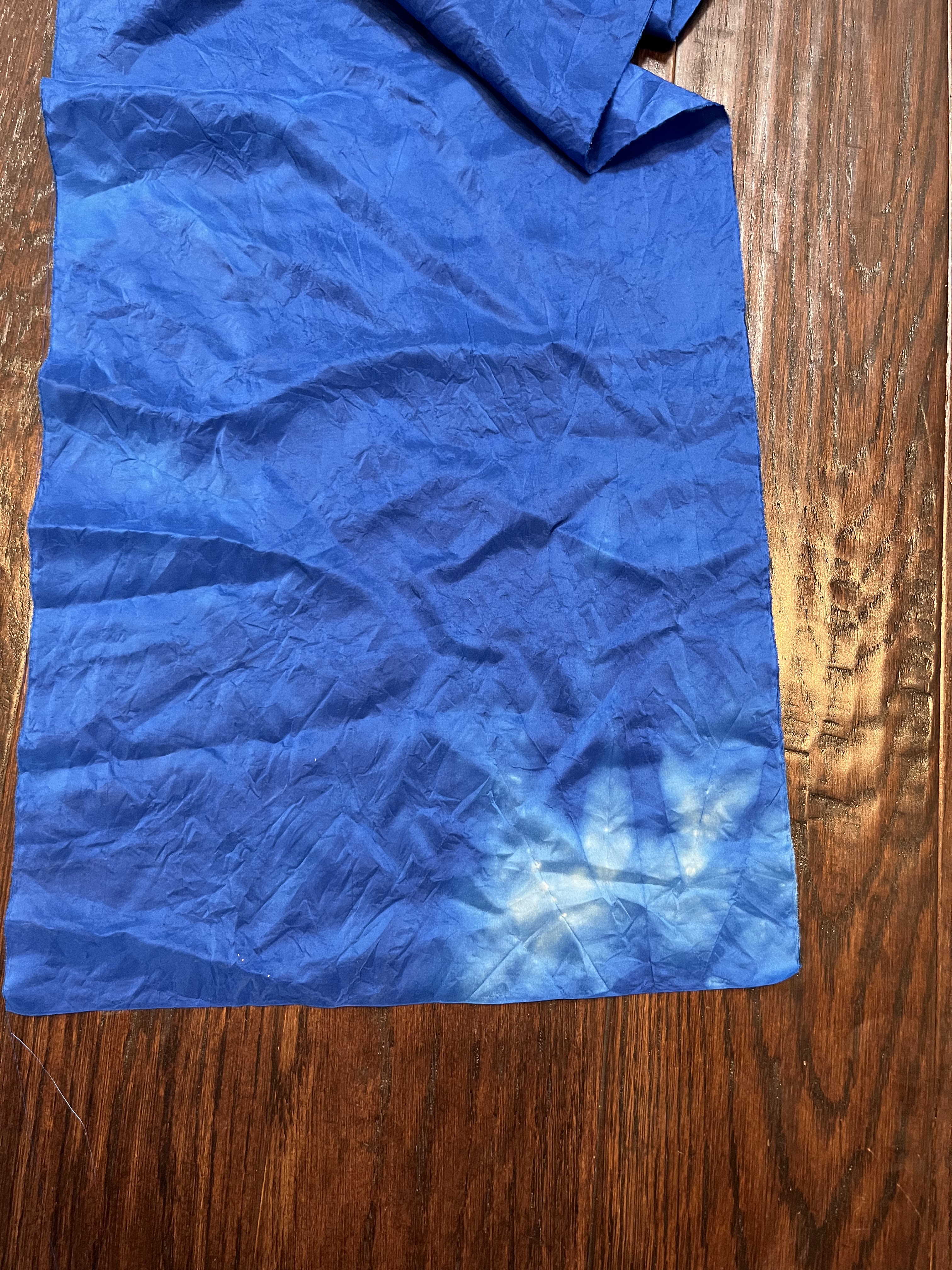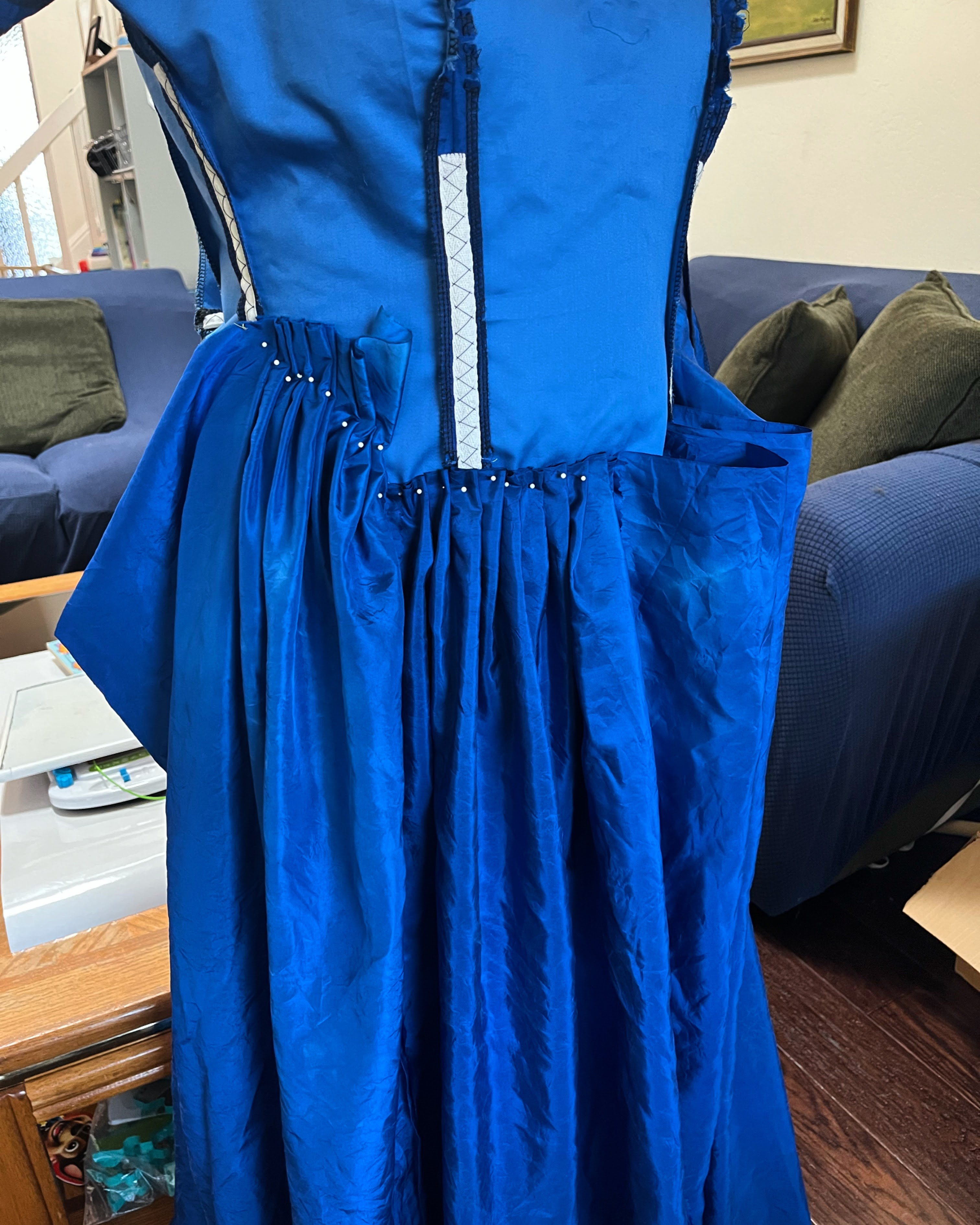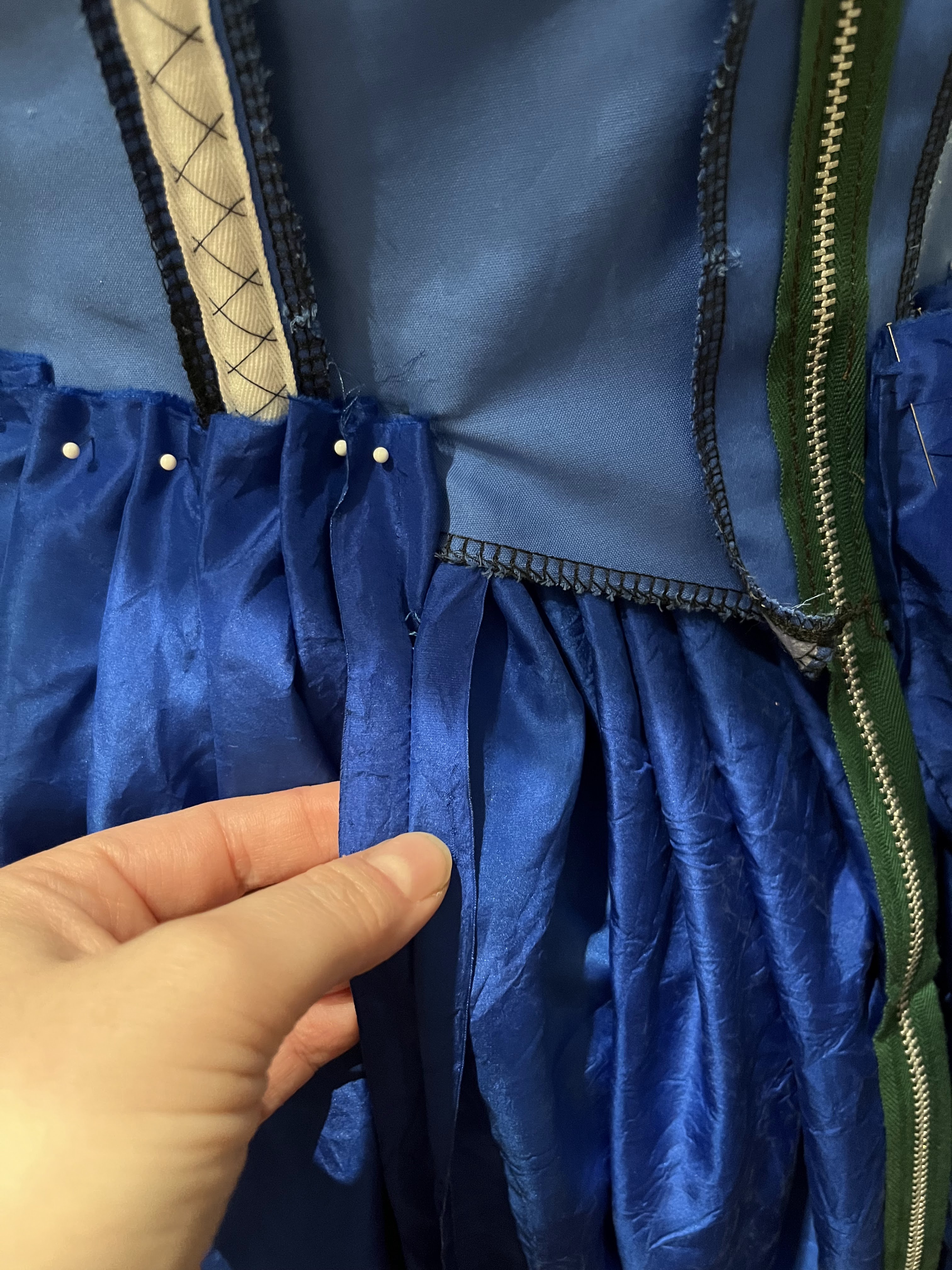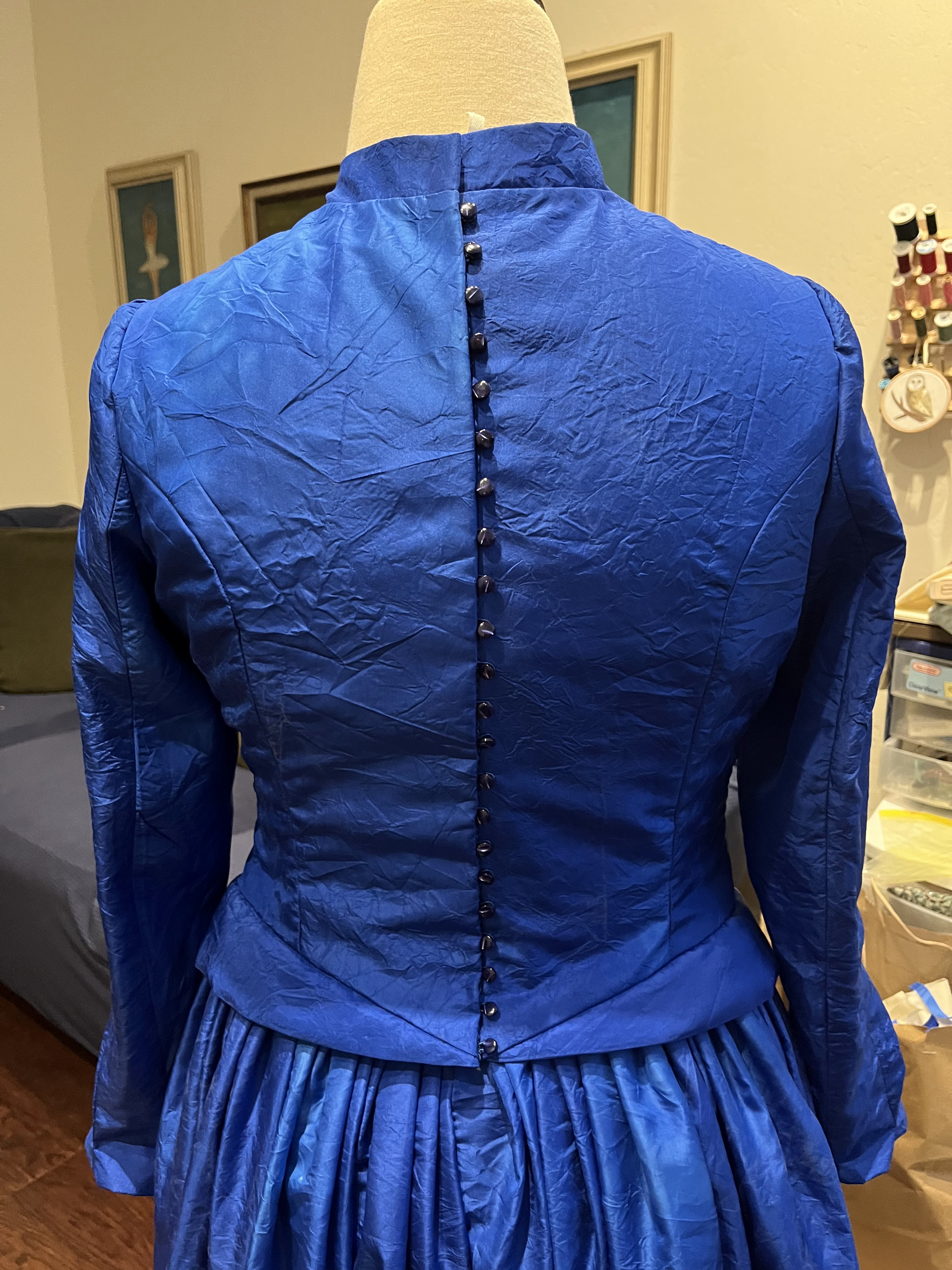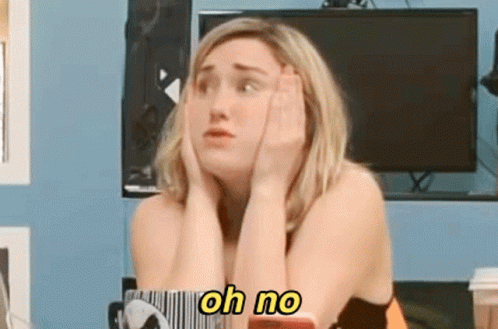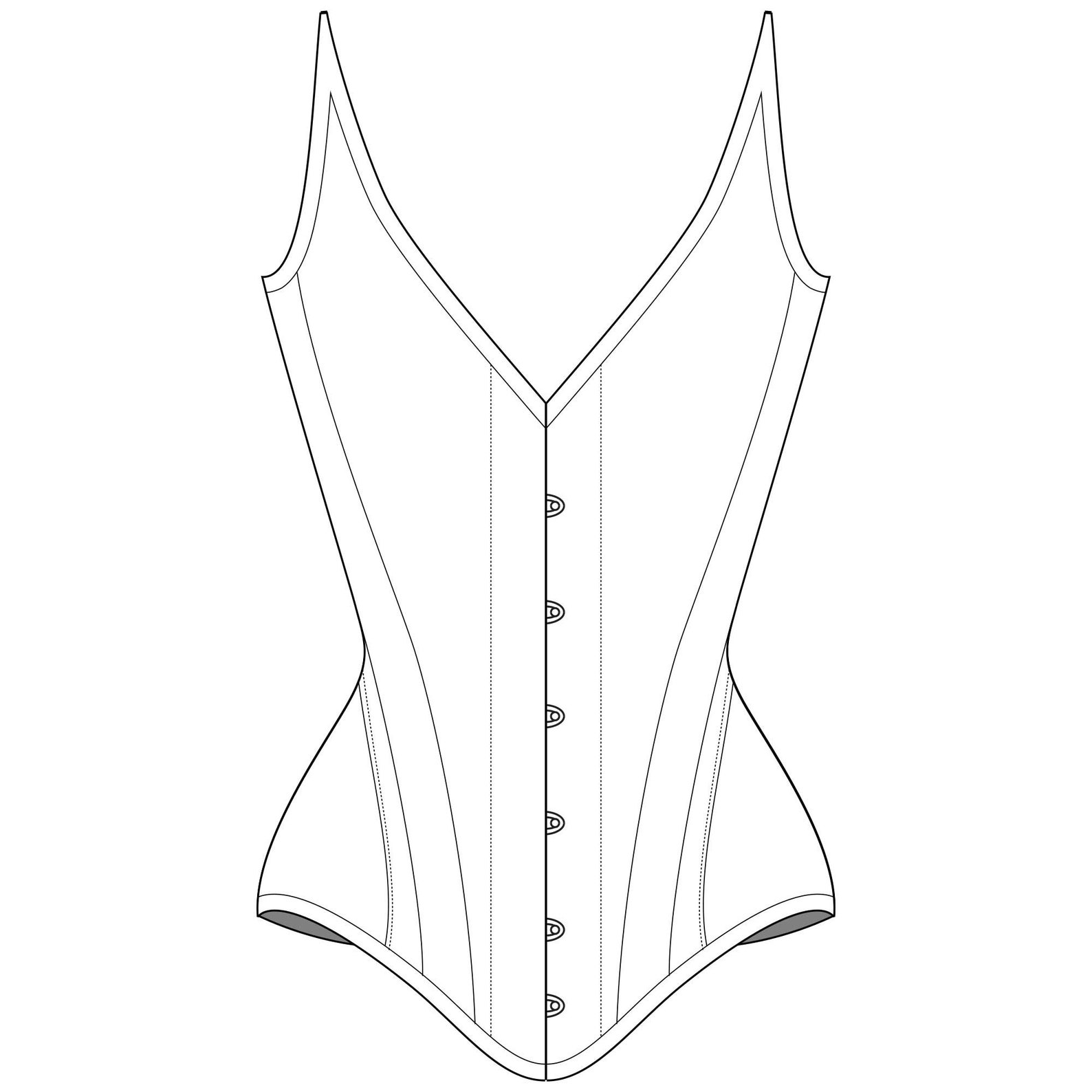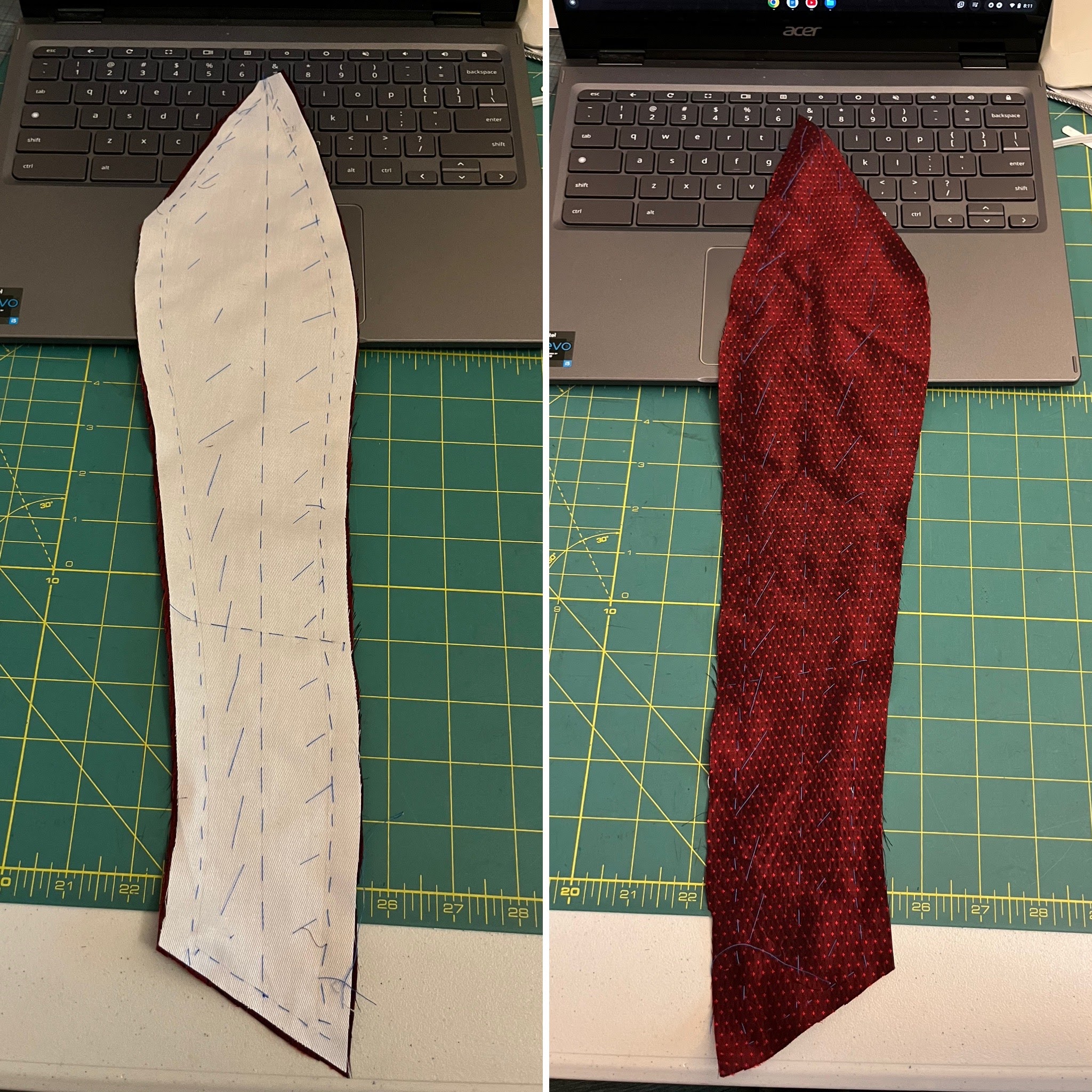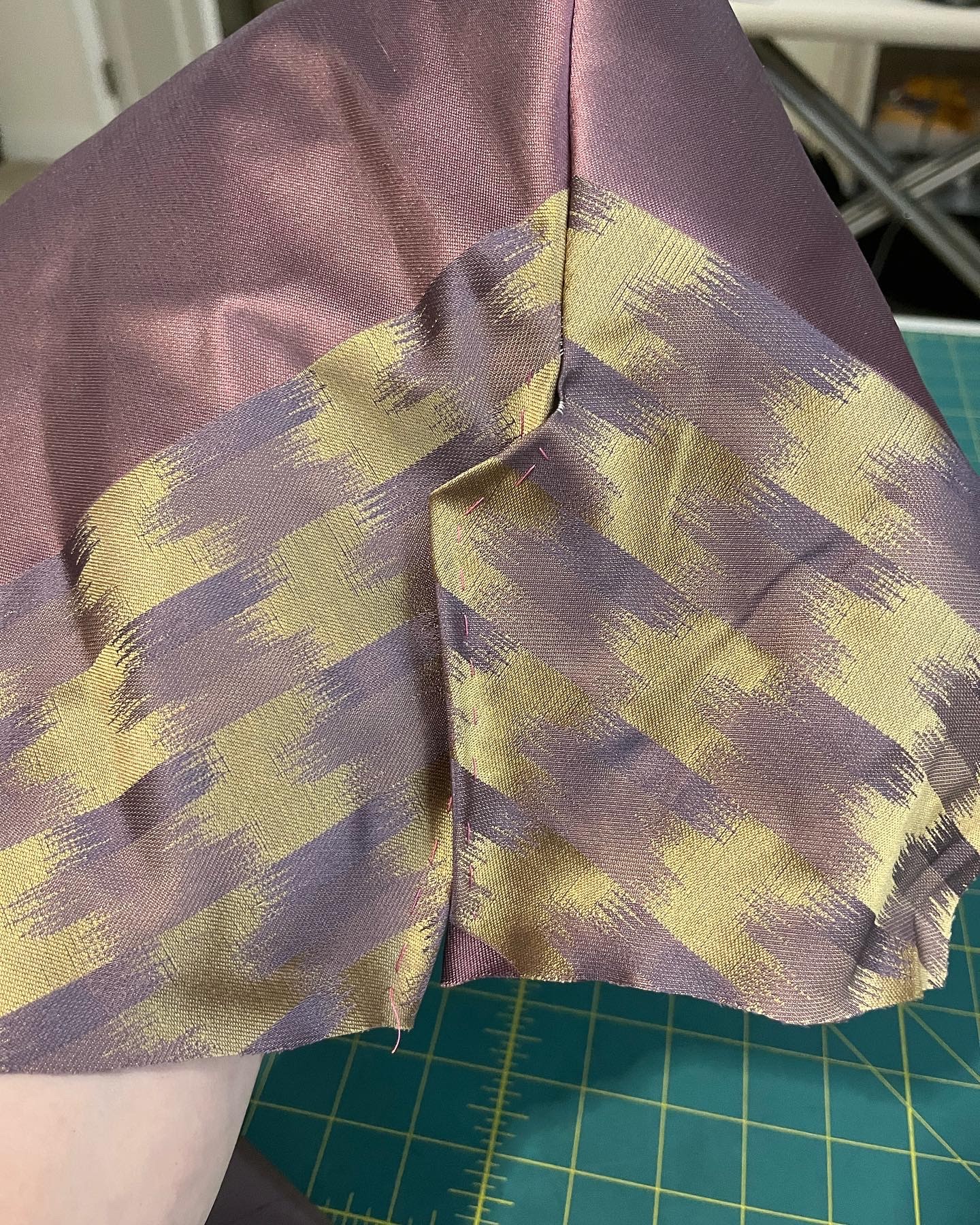That’s a mouthful eh?
So the GBACG was going to see a Tudors exhibit at the Legion of Honor. I had planned to wear a this-old-thing Elizabethan gown, but a perfect combination of events:
- I had been laid off, but found a new job, and had 6 weeks in between offer and starting
- my kids stayed healthy so could be at school/daycare
- I abandoned all household responsibilities except childcare
to quickly bang together what I’m calling my Transitional Tawny Tudor gown in two weeks.
The transitional part:
My inspiration was dresses like these between 1500-1510, which so clearly show the transition from what are traditionally considered medieval gowns (kirtles, fitted to the body), to the classic Tudor style (triangular skirt, square neckline, huge sleeves folded back).

Réunion des Musées Nationaux-Grand Palais
01-005022 folio 13R

And you can see more of these on my Pinterest board (I didn’t make this style, but can you believe how many are wrap gowns?!?)
The Tawny Part:
The fabric was my luckiest find ever; an orange-on-orange toned silk damask that I got for $6/yard. No I’m not joking. There is a wonderful nonprofit called Fabmo near me which collects fabric from industry and local donations and sells it super cheap to keep it out of landfills. This fabric was listed as maybe-silk, and I immediately recognized it as the Lionheart silk damask pattern that Renaissance Fabrics was selling for $30/yd (at the time of writing this post now $40), except I have no idea where it came from because they’ve never had this colorway.
To quote The Tudor Tailor, tawny was a color description that covered orange/tan/light brown that we don’t use as a color category today, but was a popular gown color at the time (black was the most popular in the clothing warrants, this was the second-most popular if you exclude the quantity of red gowns for Queen Katherine’s coronation).
I also knew I would need a head covering and luckily Fabmo had 1.5 yards of italian-made cotton velveteen for $10 when I went looking for velveteen so I nabbed that as well.
I then immersed myself in the phenomenal scholarship that is The Queen’s Servants. If you don’t have this book, you want this book. It’s several PHDs worth of research and speculative construction information of gowns at the time. It’s useful as well for understanding what became the more typical Tudor gown.
I already had a black kirtle to wear as my shaping-layer. Not much changed in about 100 years of kirtles aside from whether or not they had sleeves attached. Earlier kirtles would more likely be short sleeve, but it’s not like anyone could tell under my gown. Rather than using the Queens Servants kirtle pattern and making it fit, I traced off my old kirtle pattern and added a bit extra seam allowance to the back and sides to account for the fact that it was going over a kirtle. Crossing my fingers that it would fit perfectly the first time because it came off a fitting pattern right?
Sigh nothing is ever that easy. Mostly because I made the kirtle a decade ago on my Uniquely You dress form which is decidedly line-backer-ish compared to my extremely narrow shoulders. So I mostly had to tweak the angle and where the shoulder straps fell.
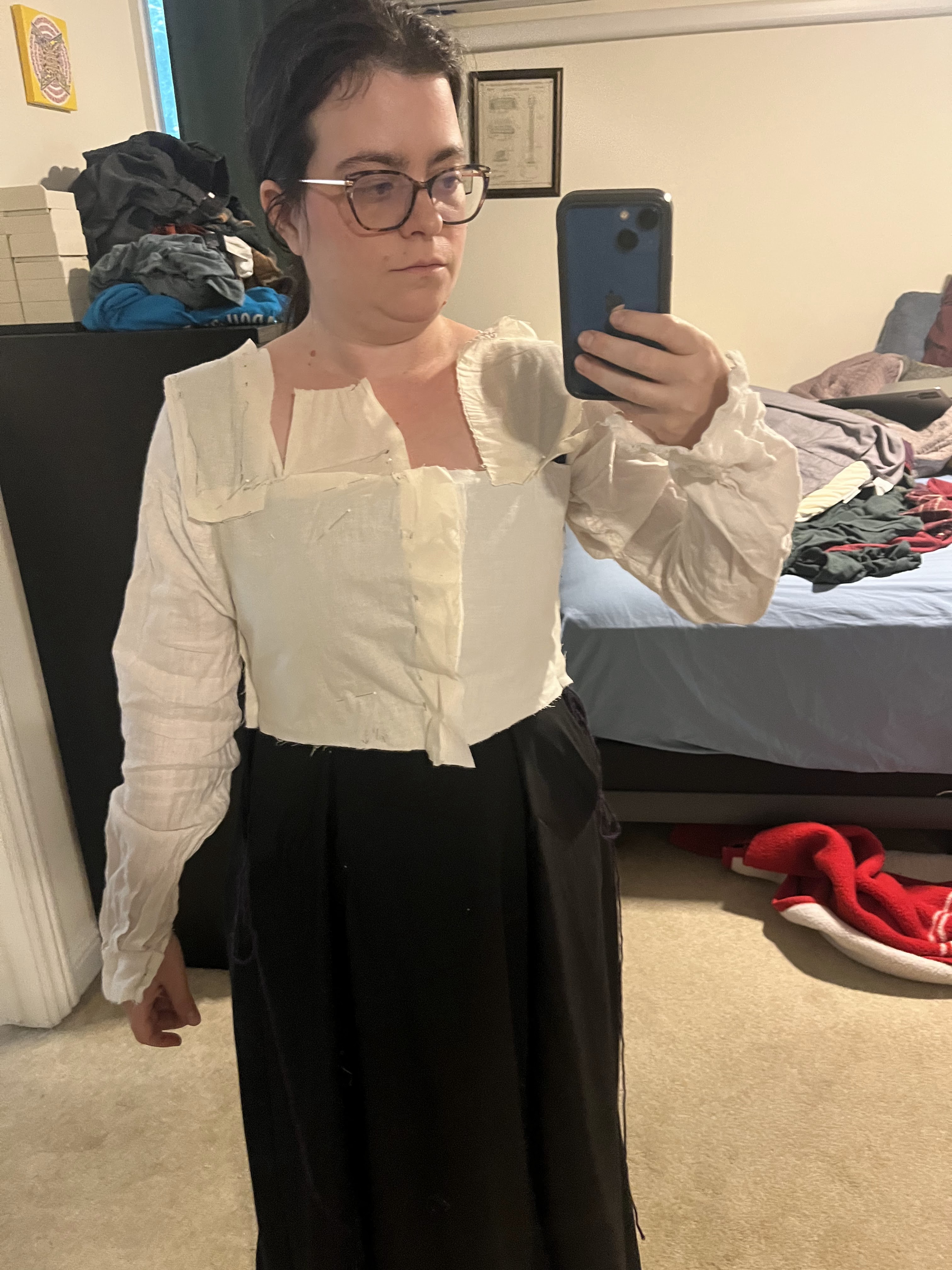
I was tempted to go straight from this alteration into my real fabric (remember, only 2 weeks to make this) but I know myself and my alteration skills too well. And to not test a sleeve mockup is absolutely to mock the gods.
Next mockup using an absolute hodgepodge of stash fabric beause I managed to lose my bolt of muslin (I finally found it 3 months later. Literally next to my sewing table under a pile of mending). It was pretty close, but I found a few important fixes!
1: Bring this corner in a bit more to cover the kirtle strap. (If I ever make a later tudor gown it will need a new kirtle that also goes out further because those are wiiiiide at the neckline). Also I planned to bring up the center point higher to make it more pronounced like my inspiration images.
2. I pinched a *whole inch* out of the back necline to tighten it up and keep the shoulder strap on. How this was necessary I have no idea but hey do what the fabric tells you.
3. I have a lot of draglines at this armscye, probably because the Queens Servants sleeve draft has a super shallow sleeve head. But I decided to leave it in order to have more mobility in the final gown.
Pretty pleased with the end shape of the pattern. The acute angle where the strap meets the bodice is exactly what I’ve seen other patterns look like.
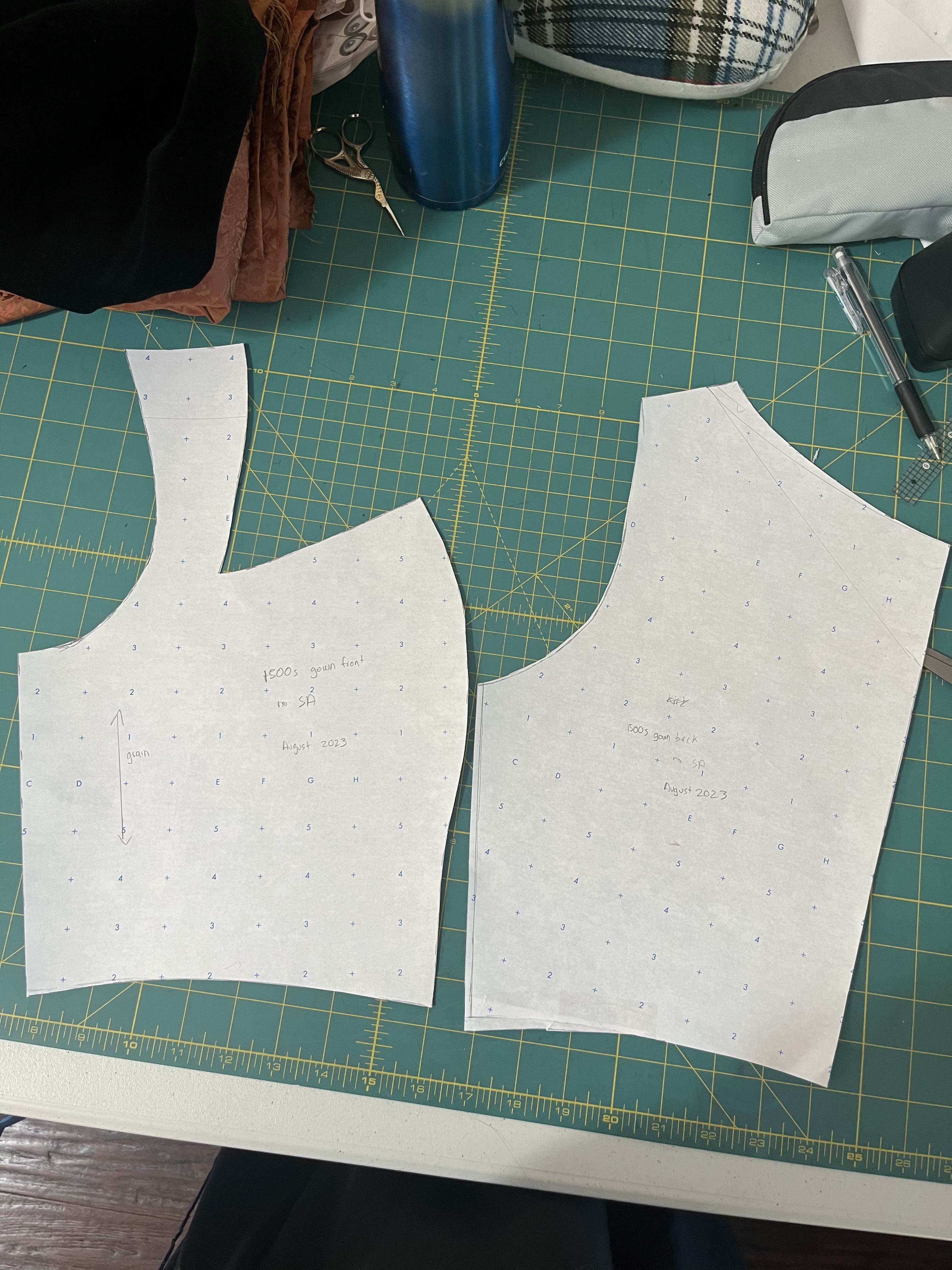
Finally time for fashion fabric! The bodice has an interlining of linen canvas (leftover from these stays) and a thin linen lining (a curtain, also from Fabmo. It’s not a great linen as it’s so open weave which makes it too soft and drapey, but was fine for a non-visible lining layer since the linen canvas was providing the strength).
I would have liked to handsew the whole thing, but not with a 2 week deadline! So yeah every inside seam was machine sewn.

My sleeve draft was straight from the Queen’s Servants aside from shortening it just a little bit because I be short. I used the Wide Sleeve, which was only the intermediate option! (There was a Tabard Sleeve which was even bigger!). I just cut them using the full width of my fabric and not adding unnecessary piecing (which would have been required in period due to silk fabric being a much narrower width. But they also had pretty and strong selvedges which could have been whipped together whereas I would have had raw seams with piecing. tldr; it’s not possible to be 100% historically accurate because of things like this).
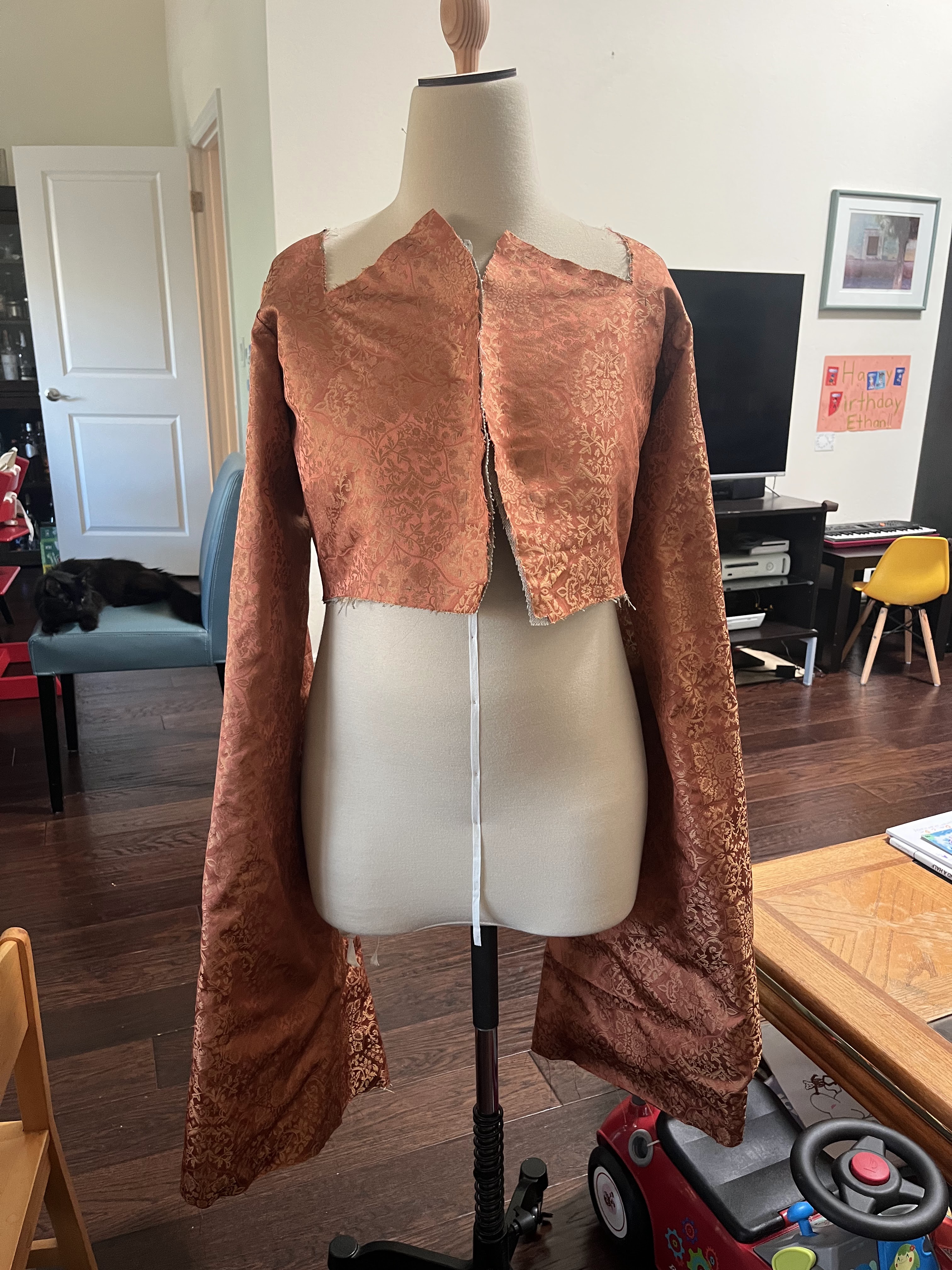
Even going for speed as much as possible the handsewing sneaks out of me – see the basting on the stitch lines (since both the damask and the linen canvas looooved to fray and I wanted to know where the stitch line was meant to be) and doing a herringbone stitch to hold the seam allowance down inside.
Skirts were drafted straight out of the queen’s servants choosing the narrower skirt option with a train (although about 7″ shorter since I need a 37″ skirt and not a 42″ skirt. I hate nothing more than grading up a skirt pattern which is longer than my yardstick ughhhh. The front was lined with gray cotton sateen and the back with a silver silk blend (I think that’s the content) because I didn’t have any linen of the right weight and drape in the stash.
Yes, my pattern weights are rocks that my 5yo had brought into the house at some point in time.
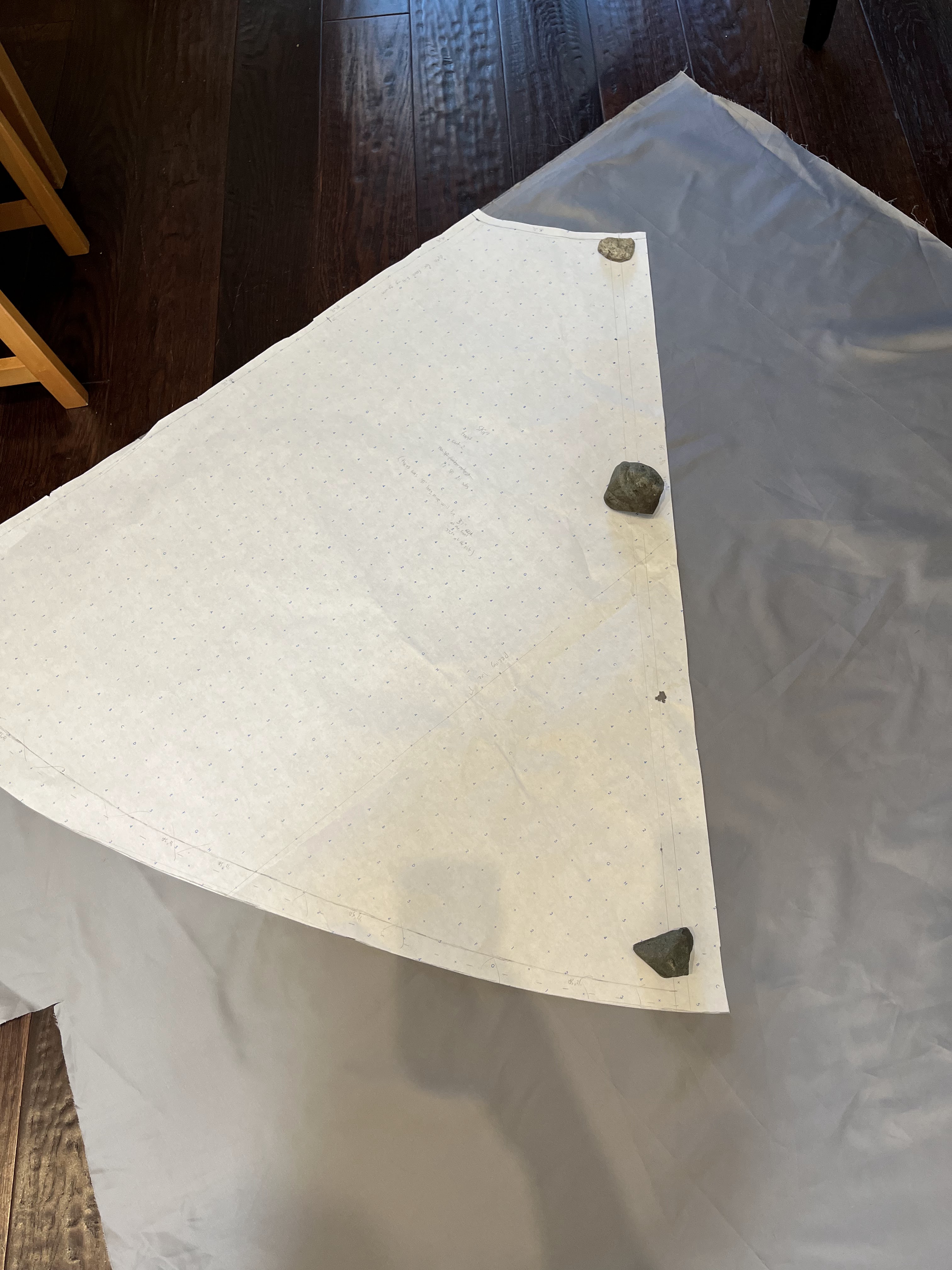
I was so close to not having to piece any of this gown, but my fabric came in 3 pieces and I wasn’tn about to cut into a new one for that tiny skirt corner. So that is the one bit I ended up piecing on (with pattern matching since I had enough extra for that).
Here is where I deviated from the Queen Servants construction information. They have a long section about making wool batting into cylinders and stuffing your pleats with them. I made the narrower skirt draft from the book and it made such tiny pleats there was no possible way to add cylinders of batting, (although the book never specified that their pleat method was only for the widest skirts so there was some initial consternation here). Instead I just added a bit of quilt batting into my back pleats to pad them out.
They also had incomprehensible instructions about how to attach the skirt to the bodice. I went full victorian and turned my raw edges into each other, and whipped the finished bodice bottom to the finished skirt top.
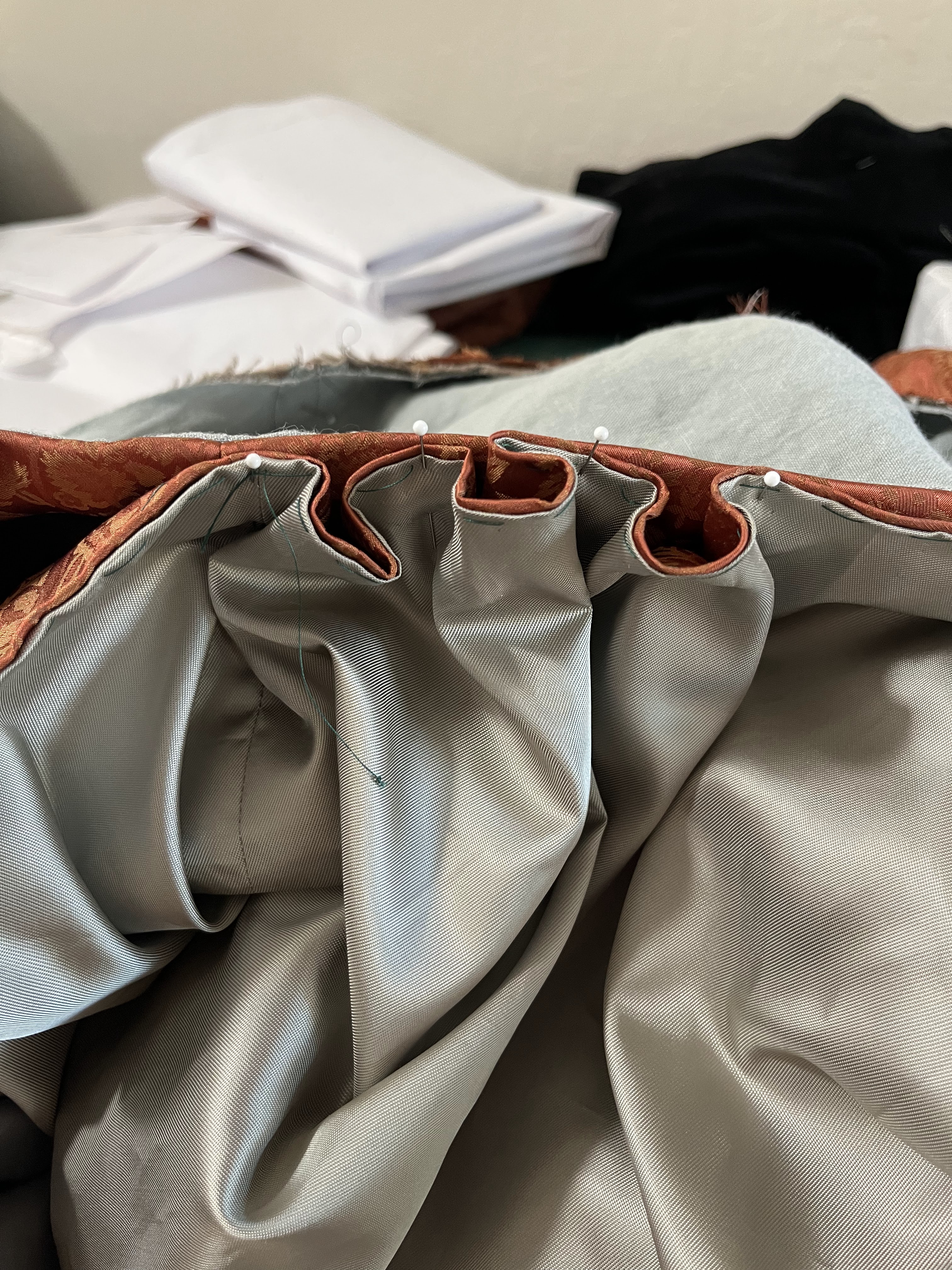
And story time about my fur! My grandmother owned a mink coat which my mom inherited. Give that we all lived in southern california, the mink coat stayed in the closet for decades. When my sister went to college in Chicago, she had the coat tailored into a vest which she would actually wear. I called dibs on the offcuts, so the sleeves then stayed in my closet for years waiting for a project. And then this one finally appeared! Mink is a documentable fancy fur for edging gowns of this type.

I pulled out my cutter and strop from leatherworking and carefully cut this into strips, trying not to push too hard (because ideally you just cut through the leather backing and not so much the fluffy side). Of course everything did end up coated in fuzz and I used a handheld vacuum on the table in between cutting each strip.
I tried to figure out the “correct” way of handsewing fur onto a gown, and whaddya know there really are no resources out there for doing this. So for the front opening I did a running stitch right sides together, flipped the fur over to bind the edge, and whipped it down on the inside without folding it under (because leather doesn’t fray).


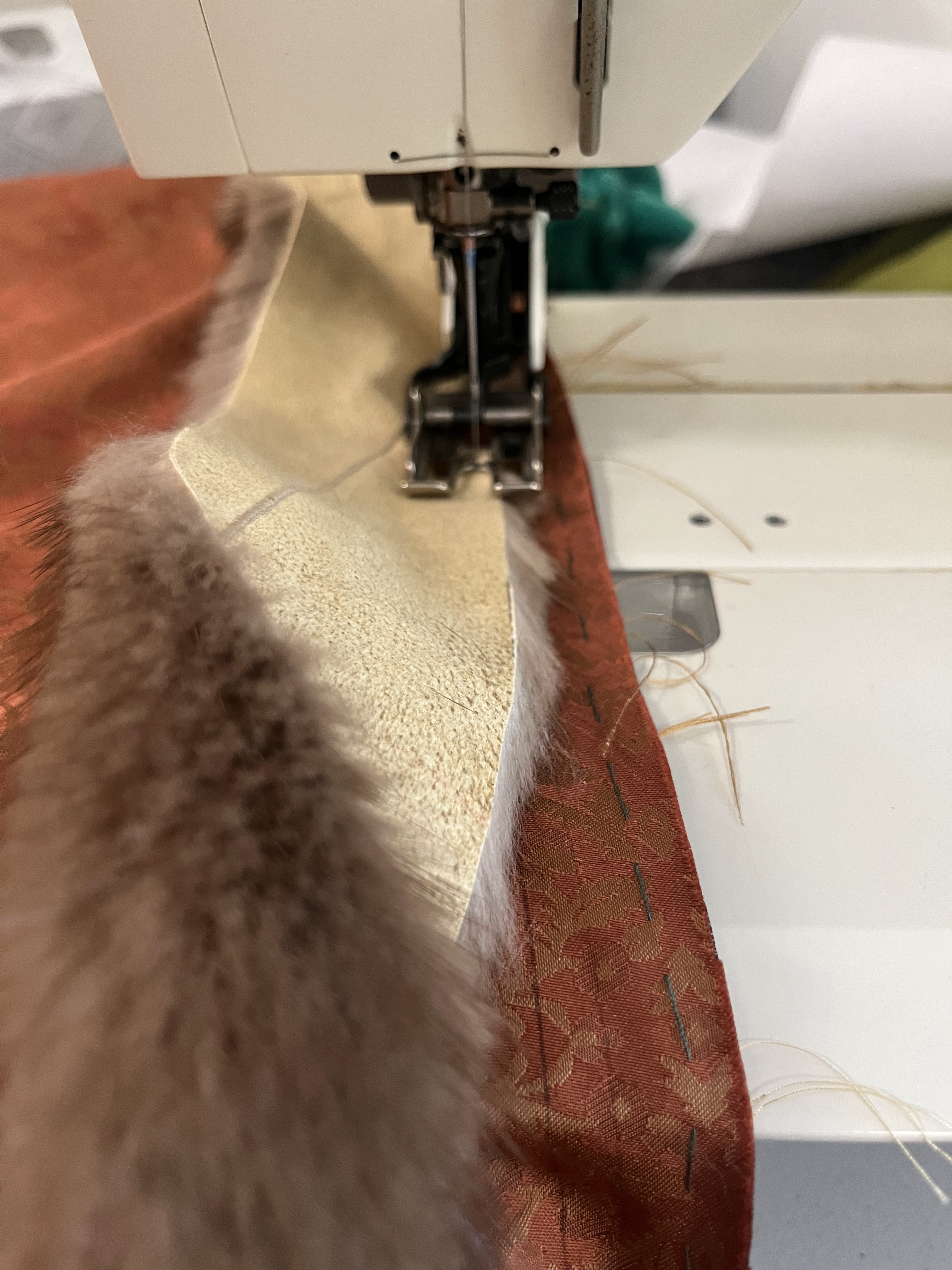
For the sleeves, I was seriously running out of time. Walking foot and leather sewing needle to the rescue! (The walking foot had been purchased to sew some knit jersey shirts and the leather needle was from long ago attaching leather trim to boots for my Rey costume. All parts of the hobby are useful and converge!). Unfortunately despite careful math to make the length of trim be correct, the fur tends to bunch up a little bit meaning I was about 2″ short on the trim and had to carefully (and begrudgingly because it was getting late at night) add on a little extension piece). I think I finished the whipstitching on the inside of the sleeve around 10pm which is past my bedtime these days.
And miraculously, this dress was done within two weeks to go see the Tudor Exhibit at the Legion of Honor with the Greater Bay Area Costumer’s Guild!
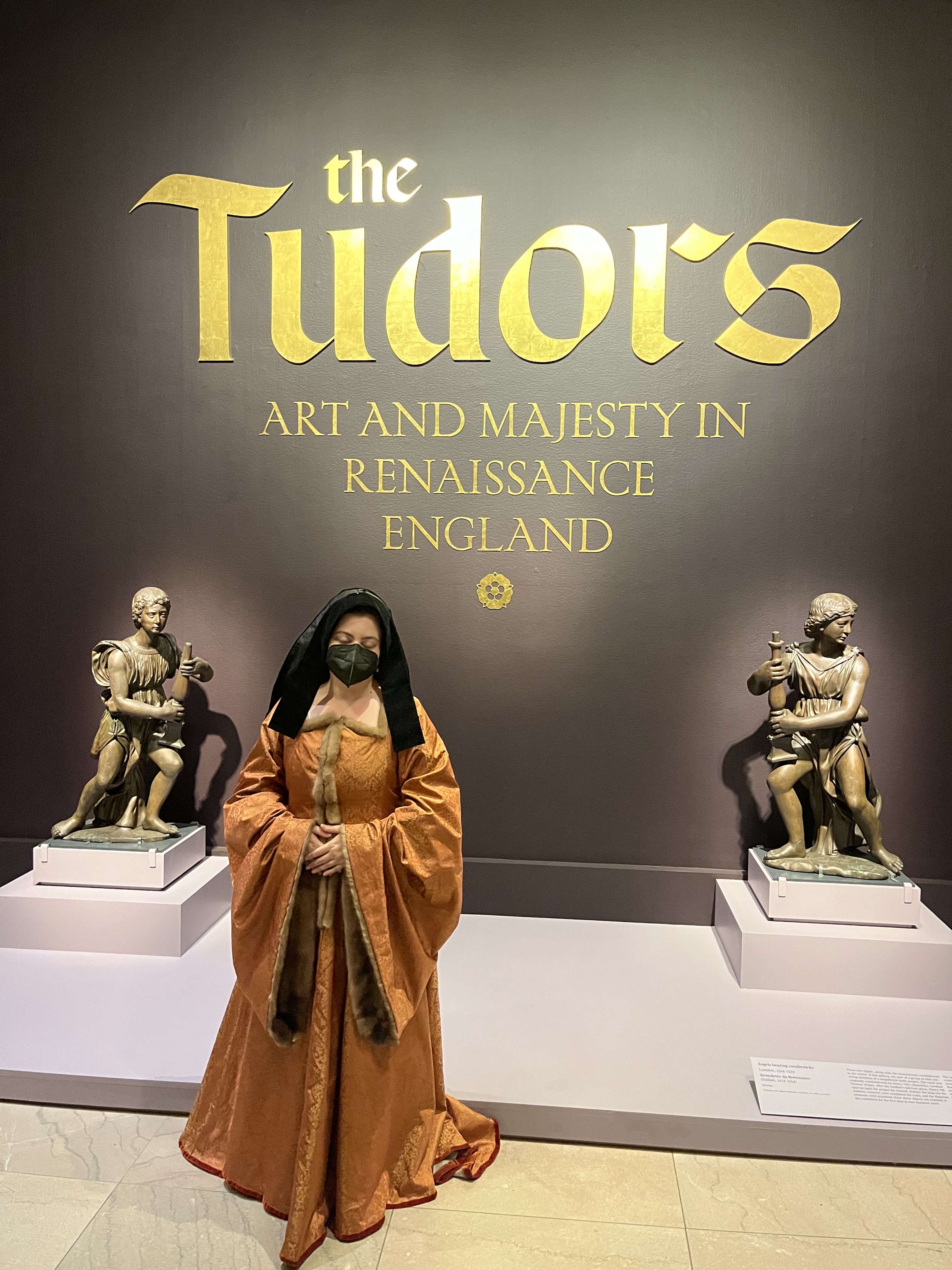
To get the bonnet and frontlet on, I taped up my hair and used big pins to pin the bonnet directly to my braids (I should make some kind of under-coif one of these days). The frontlet is pinned onto the bonnet in a hopefully attractive fashion. I need to do some more digging into portraits because I think at this point they start getting a little bit fancier (before evolving into what becomes a gable hood [if you stick a buckram structure underneath] or a French hood).
I love this dress so so much. If you don’t know the period it’s kindof a strange look (aka shiny bathrobe) but it really feels like clothing of the era and not a costume when I put it on.
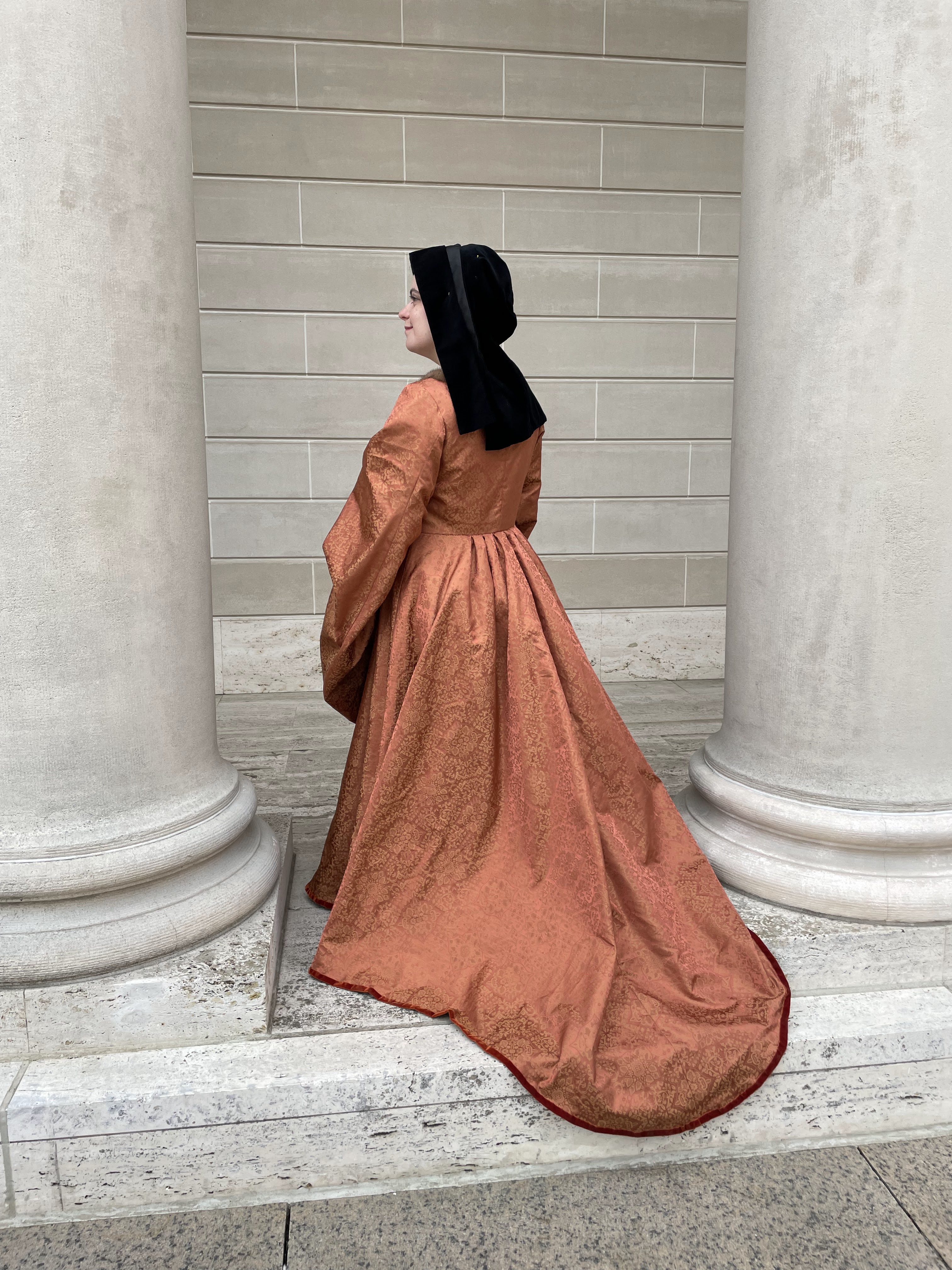
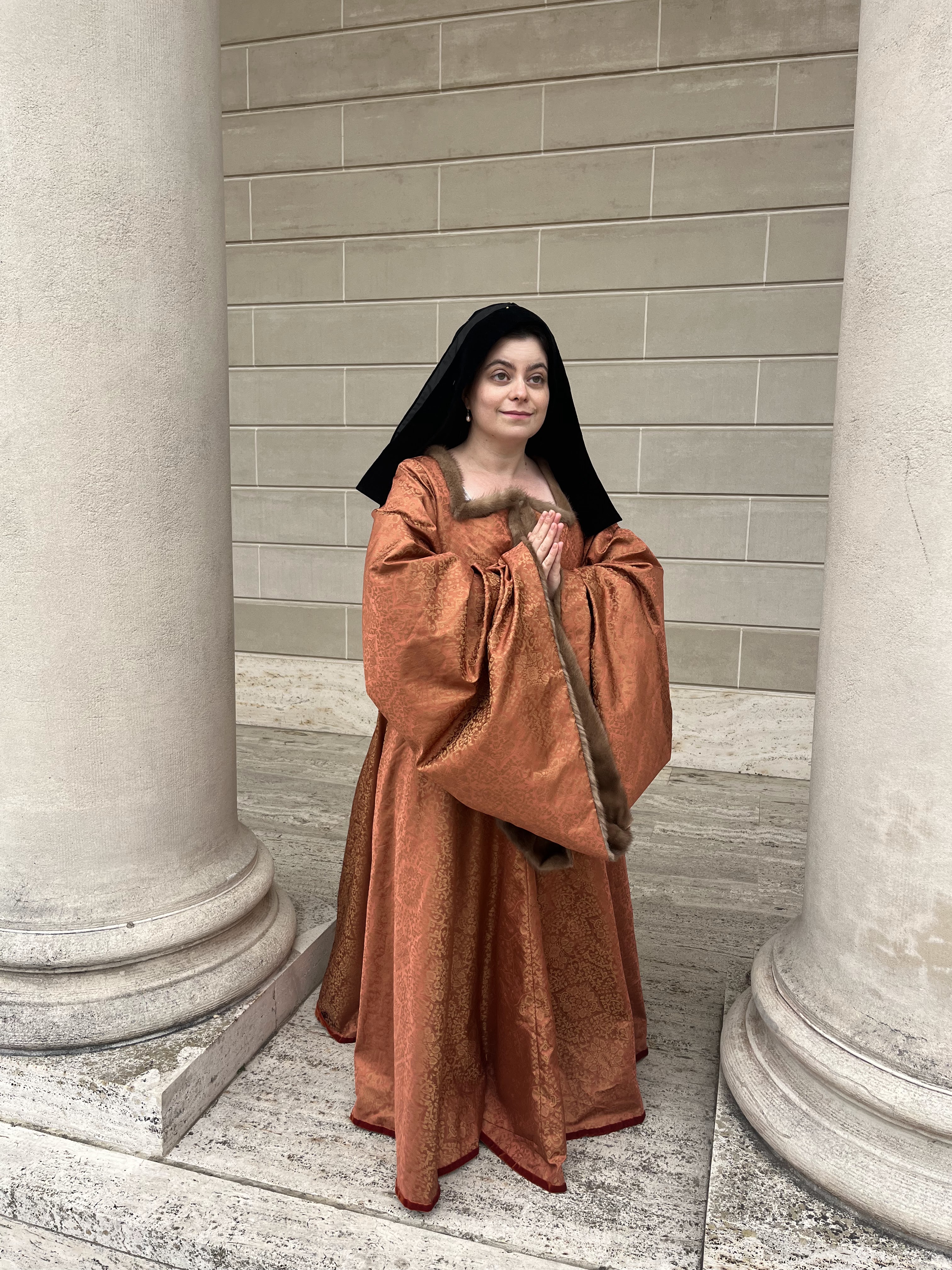
And some of my musings on historical accuracy with this dress – sometimes I care a whole lot and sometimes I really truly don’t :p For example, I was agonizing over the fact that my sleeves and neckline were trimmed with fur, but my hemline was bound with velvet. While this is entirely plausible (as we have evidence of dresses hemmed in velvet as well as fur), it was never documented to see them at the same time on the same dress. Unfortunately I didn’t have enough of either the velvet or the fur to use entirely one or the other. I thought about cutting up a beaver fur coat I nabbed from goodwill in order to have enough, but I really wanted to use the mink (both for the connection to my grandmother, and because mink is documentable as a trim used for this era of gowns.
I also agonized over the sleeve lining. Again looking at what was documented, a matching silk satin would likely be used if the sleeve was bound with velvet. If fur was used, the gown was lined entirely with fur (although sometimes a cheaper fur was used for the inside and a fancier fur like mink was used where visible). Of course, since I live in Northern California during the era of climate change and not England during a mini ice age, lining the gown entirely in fur was right out. And I used what I had in my stash, which was a coordinating taffeta, rather than rush ordering any expensive silk.
On the other hand, my skirt is lined with cotton sateen in the front and a silk/cotton (I think) sateen in the back, and one of the cotton sateen pieces is the wrong side out because I didn’t want to deal with piecing. 🤷

To end this, being contemplative in the columns:
Bibliography
- Johnson, Caroline, et al. The Queen’s Servants: Gentlewomen’s Dress at the Accession of Henry VIII: A Tudor Tailor Case Study. Fat Goose Press., 2016.


